









































































































































































































































trip we’ve been taking down memory lane, in observance of our 40th anniversary, we have recalled Fish & Game’s humble beginnings as an o shoot of a weekly newspaper in the Hill Country, and our e orts to grow TF&G from zero to over 100,000 readers.
Once we separated from the newspaper— e Highlander, in Marble Falls—things really took o , and really got interesting.
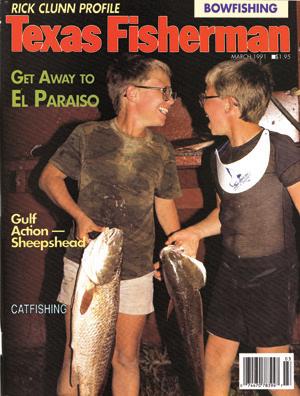
For starters, we made the strategic decision to relocate to San Antonio. In 1990, long before Zoom meetings were even possible and remote o ces only worked for reclusive authors and multi-level marketing salesmen, a small town like Marble Falls presented obvious limitations in running a media business looking to a ract most of its revenue on a national stage.
With the healthy proceeds raised from the sale of e Highlander, we were able to fund an aggressive growth strategy for the magazine. Within a year of leaving Marble Falls, Texas Fish & Game’s audited circulation, the combined distribution of subscription and newsstand copies, had broken the 60,000 barrier.
At the time, another magazine sat at the top of the Texas outdoor publishing food chain. Texas Fisherman had been around since the early 1970s. In fact, as we’ve logged in previous columns, Marvin Spivey, the founding editor of Fish & Game, had served as Fisherman’s editor during its climb to dominance.
And dominate, it did. In spades.
It was a time before a wave of takeovers hit the shing industry and le a wake of consolidation that would have made Teddy Roosevelt and his Trust Busters blow their stacks. But in the 80s and 90s, there were dozens and dozens
of major independent brands in the shing market, selling boats, motors, baits, rods, reels, tackle and accessories. And spending large sums of ad dollars competing with each other.
Most of those ad dollars were spent with old guard national media, Field & Stream, Outdoor Life, Sports A eld, and an ever expanding glut of shing TV shows. But Texas, so big and so much a powerhouse in shing participation, was impossible for national advertisers to ignore.
Texas Fisherman, as the largest player in the state, got the lion’s share of this regional a ention by advertisers. Heck, with not a single syllable of hunting coverage in their pages, they even got ads from a few gun and ammo accounts!
Fisherman was the big sh in the biggest outdoor state market, and we were the li le squirts trying to wedge ourselves into the big game. But these li le squirts had a big pile of cash to burn, and an owner—the larger than life Bill Bray, who we described in more detail three issues ago—willing to burn it.
e re we set with our stake from the Highlander sale powered a series of huge direct mail campaigns aimed at recruiting subscribers and increasing our numbers, and ge ing us on the radar of those big-spending national brands.
At the time we moved to San Antonio in mid-1990, Texas Fisherman boasted a circulation of about 70,000. When we did our 1990 circulation audit and tallied the return on our investment in those costly mail campaigns, Texas Fish & Game se led in at just over 64,000.
And Bill Bray got a phone call.
On the line was a guy in Tulsa, Oklahoma who identi ed himself as Mike Henry, sole proprietor of Texas Fisherman. Henry had purchased Fisherman several years earlier (but his Okie drawl and snake-oil charm conjured the idea that he could have won it in a poker game).
Henry came right to the point: “You Texans have chased me into a real corner with your
crazy circulation shenanigans. Ya’ll started a war that’s costing me too much money trying to stay ahead of you.”
It turned out that our e orts to gain the a ention of big advertisers had instead drawn the a ention of their biggest Texas bene ciary.
Henry was calling to propose a merger.
“Now, Bill, you and me, we could keep ghting each other over subscribers, and I go a keep my numbers ahead of yours. And you’re gonna keep chasing me. So we’re both gonna end up spending all the money that should be going to our li le grandkids.”
Henry, whose voice was a dead ringer for the character Mr. Haney on the old “Green Acres” TV show, would have probably rented grandkids to emphasize his point, but he didn’t need to.
“I’m listening,” said an intrigued Bray. is began an intense period of negotiations over the end of 1990 and start of 1991. e rst sticking point, aside from money, was what to call the merged publication. Henry, stru ing his dominant status in the marketplace, proposed, “Let’s just call it ‘Texas Fisherman’ and stick the words ‘...And Hunting’ below it.” at was never gonna y.
Second, Henry wanted to move the merged headquarters to Tulsa, and only keep a satellite o ce in Houston, where his salesman, Mike Haines—a young hotshot in double-breasted suits—played his Rolodex like a ne instrument, pulling in the ad dollars that had incentivized our own jealous push for subscriber growth.
Trade San Antonio for Tulsa? No o ense, Tulsa, but... no deal.
In the end, the negotiations brought us to a single conclusion. Henry and Bray would have made horrible partners.
e merger became a “You buy me out? No, I buy you out” tug of war that Bray, wanting it more, won.
e “new” magazine debuted in May 1991 retaining the Texas Fish & Game nameplate, with 120,000 subscribers. e Fisherman brand was retired, a victim of its former owner’s corporate ba le fatigue.
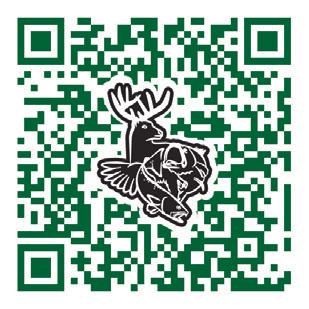
As things turned out, we did leave San Antonio, for Houston. But it was our choice, and it was not Oklahoma.
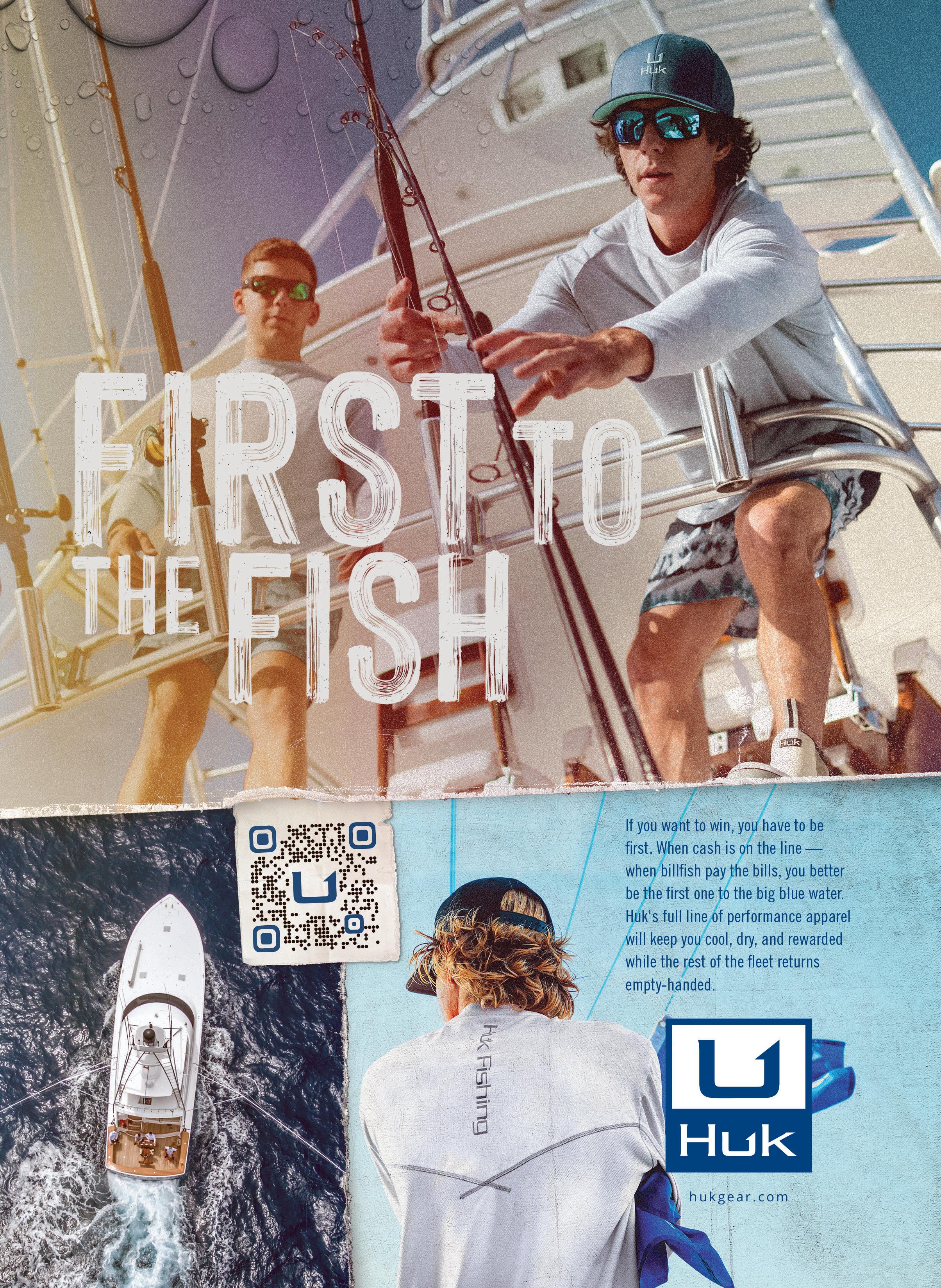





I WANTED TO DROP YOU A NOTE to say thanks for your great coverage of hunting and shing in Texas. Your e orts to provide information and resources for everyday folks like me who enjoy the outdoors are much appreciated.
I’ve found your articles, updates on regulations, and information about wildlife management areas really helpful. It makes it easier for me to enjoy hunting and shing responsibly while staying up-to-date with the latest news and guidelines.
Your commitment to preserving Texas’ natural beauty and keeping it accessible to all is fantastic. Your coverage not only brings the outdoor community together but also encourages newcomers to get involved in conservation.
anks again for all you do. I’m looking forward to more seasons of outdoor adventures and conservation e orts with the help of your valuable resources.
Janice LakeI HOPE THIS LETTER FINDS YOU doing well. I just wanted to drop a line to say how much I appreciate Texas Fish & Game Magazine’s awesome coverage of saltwater shing in our great state. As a passionate angler, your magazine has been my go-to source for all things coastal shing.
Texas is known for its incredible marine ecosystem, and your commitment to showcasing the world of saltwater shing here is top-notch. I’ve got to give a special shoutout to your coverage of ounder and red sh – it’s been nothing short of fantastic.
Let’s talk ounder. ose tricky, at sh have always been a favorite of mine, and your articles on ounder gigging, the best spots, techniques, and seasonal tips have been a game-changer. Chester’s ounder stu is cool.
And then there’s red sh. As one of the most popular catches in Texas coastal






waters, they’re a big deal. Your articles on their habits, where to nd them, and the latest gear and tactics have been super informative. I’ve learned a ton from your magazine and can’t wait to put it all to use on my next red sh adventure.
I also love how you feature stories and tips from local anglers and guides alike.
eir rsthand experiences and local knowledge add a personal touch to the magazine that’s super relatable. It’s inspiring to read about their big catches and the wisdom they share about ounder and red sh.
I’ve got to give a big thumbs-up to your commitment to conservation and responsible angling too. Encouraging catch-andrelease, respecting size and bag limits, and taking care of our coastal environment is something we all need to stand behind. Your magazine’s dedication to these values sets a great example for all anglers.
In a nutshell, I just wanted to say a massive thanks to Texas Fish and Game Magazine for being the ultimate resource for saltwater shing in Texas. Your coverage of ounder and red sh, and everything in between, have made my angling experiences even be er. I eagerly look forward to each new issue, knowing it’ll bring more awesome insights, tips, and stories to make my coastal shing adventures rock.
Keep up the fantastic work!
William StevensI WANTED TO THANK YOU FOR your fantastic e-newsle er. It’s always a highlight in my inbox, and I look forward to every issue.
Your e-newsle er covers a wide range of topics, from the latest hunting gear and techniques to fascinating insights into Texas wildlife. As an avid outdoors enthusiast, I nd immense value in your articles, tips, and updates. It keeps me informed and

inspired to explore the great outdoors. I love the guide tips like Brian Barerra and Kim Goulden too.
Your in-depth coverage of hunting not only provides practical advice but also promotes ethical and conservation-minded practices. I particularly enjoy the stories and features that showcase the experiences and perspectives of fellow hunters and outdoorsmen.
anks for being a highlight in my inbox.
Marvin PhillipsEditor: ank you all so much for your kind words. We work hard to make all of this work for you and your feedback means a lot to us.

MY HUSBAND AND I SAW THIS manatee in our canals one morning on South Padre Island. So exciting!
Christine Storm
uEmail Your Comments to editor@fishgame.com
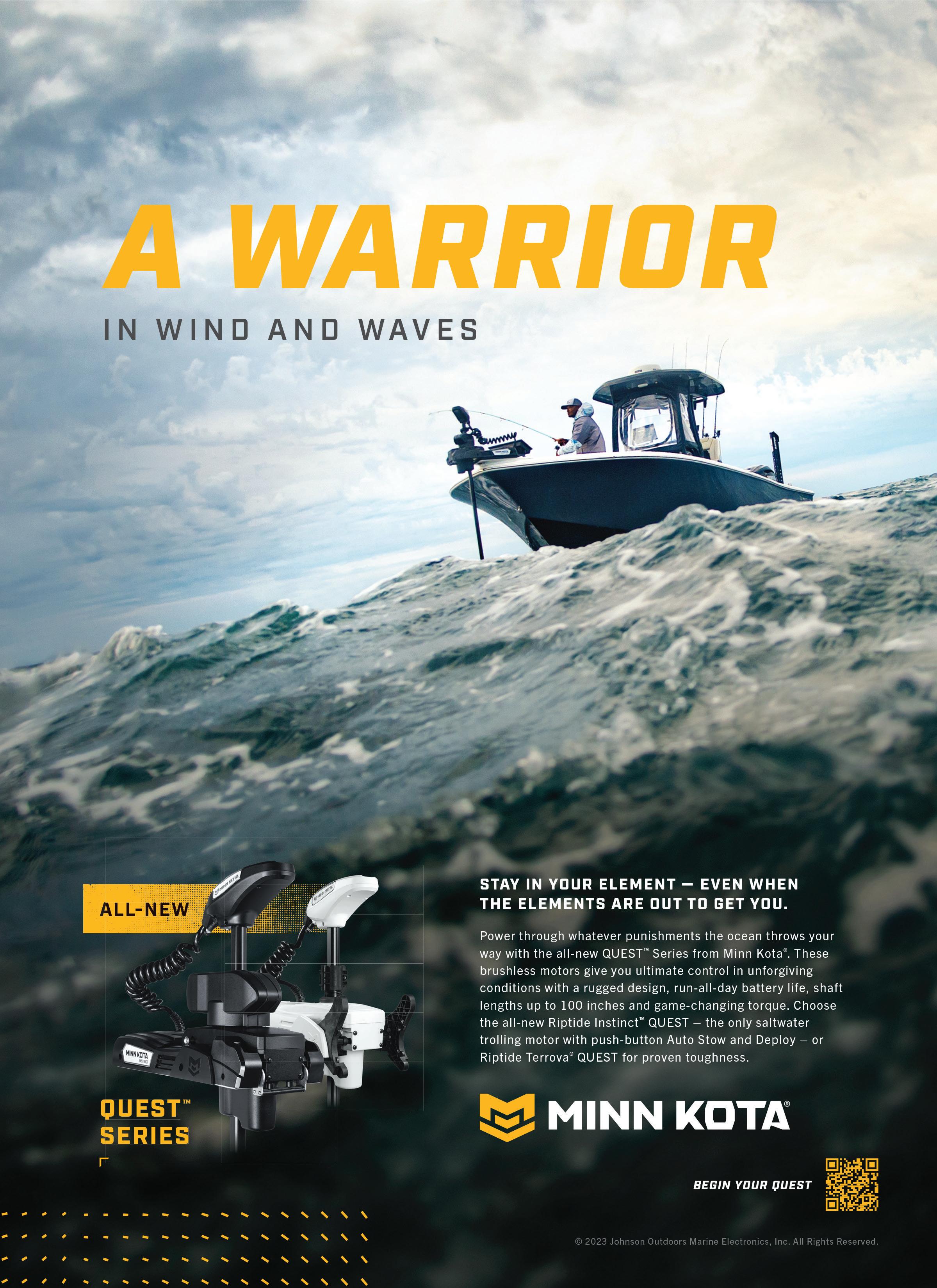
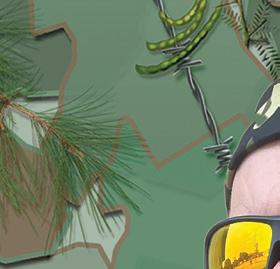





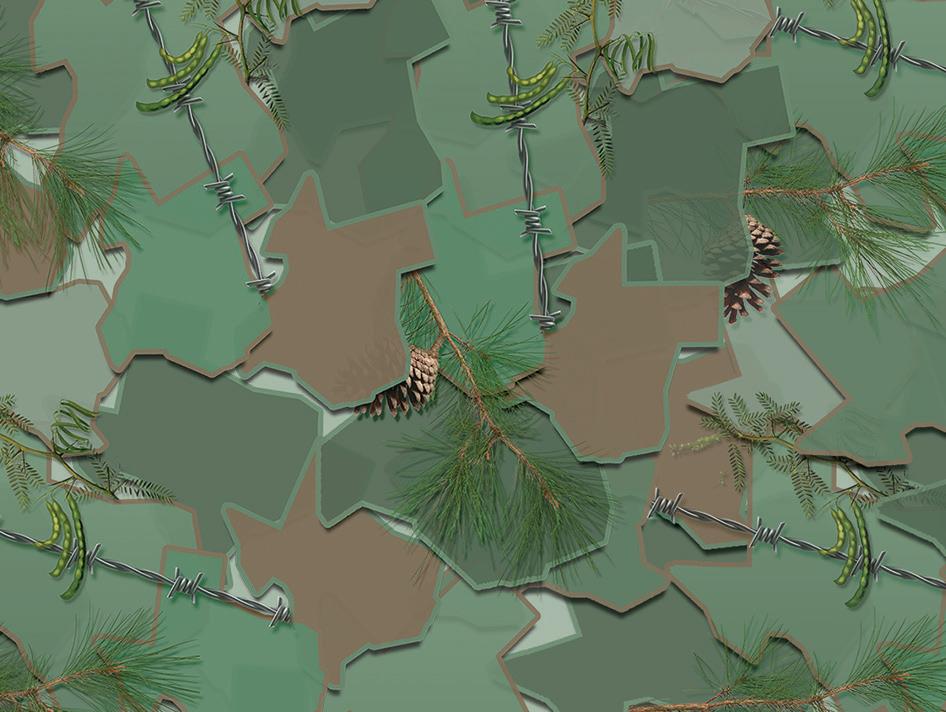






 :: by CHESTER MOORE, JR.
TF&G Editor-in-Chief
:: by CHESTER MOORE, JR.
TF&G Editor-in-Chief
QUIET, CLEAR NIGHTS IN the Texas Hill Country are beautiful.
ere’s a certain sense of peace in the air and a host of stars, planets and constellations shine brightly overhead.
As the group headed away from the campre to go back to the ranch headquarters, I noticed one woman, a single mom in her late 20s staying. She looked sad, so I turned back around and sat in the chair next to her.
“Hey, are you ok,” I asked.
A tear rolled down her cheek and for the next hour she shared some monumental struggles she had been through. She was here at this beautiful ranch to hunt and have fun.
I was there to shoot photos and cover a story.
But I saw something was wrong and simply took the time to ask.
is lady who is now a friend told me, “ anks for making me feel like I ma er.”
Some of the loneliest times in a person’s life can be when they are supposed to be having the most fun. A deer hunting trip or trout shing expedition might give a temporary reprieve from struggles but o en it reminds us of the stark contrast we have going on in other parts of our life.
And sometimes this goes dark.
Suicide rates are at an all-time high in America.
e highest rate of growth in suicide is in 11-14-year-olds and veterans have the highest overall rate with an average of 22 per day.
We’re doing something wrong in our country. While we are spoon fed political













places in the country.
and entertainment garbage that really doesn’t ma er, kids, vets and many others are taking their lives.
their lives.
I saw something change in him when we got up to 12,000 feet and he looked over and saw a beautiful alpine lake.

they don’t ma er.
At the end of the day, it is because some way, somehow, they have been convinced they don’t ma er.
ey believe their lives don’t ma er.
“I’ve never seen anything like this. I want to come back here,” he said while taking photos of the area.
We are here to tell you that you ma er.
We are here to tell you that you ma er.
Yes, you.
You ma er to us as people we connect with through this magazine, and you ma er to more people around you than might ever think.
As a kid I went through some pre y intense bullying. I was made fun of, disparaged, slandered and lied about at a level that’s really hard to put into words beginning in about h grade.
It made going to school tough, especially since I never liked school to begin with and at some point, it started impacting my selfworth. I got to a point where I felt lonely, isolated and angry. I got into a ght in the rst few weeks of ninth grade, which was out of character for me.
I was sick of it. I wasn’t taking it anymore.
I probably ended up on the bad end of the ght, but something changed in me then.
at night I watched an MTV special about Metallica and drummer Lars Ulrich said they did what they wanted to do and how they wanted to do it and didn’t care what other people thought.
At that moment my entire outlook changed. I said, “ at’s how I want to live.”
And it was at that point I started working toward my goal of doing what I am doing right now—making a living as a professional writer and writing about the things I love.
My focus and motivation pushed me on, but it was my faith in Christ that healed all of those wounds completely. I believed then but when I started following Him, I was healed.
I recently had the privilege of taking a 15-year-old boy, his mother and grandmother into the mountains of Colorado to do photography. is young man’s father commi ed suicide and he was in a bad way and was one of the angriest kids I’ve ever met.
His grandmother reached out to me because she found our ministry online and wanted to know if I could do something for him.
We spent two days photographing mule deer and elk and seeing the most beautiful
is kid was a gigantic challenge to work with but it’s what we do. And unlike most kids who are smiling from the time we meet them until the time we leave, I only saw brief moments of so ening.
e big moment came when I dropped them o at home about 30 minutes south of Denver.
Before he walked into the house, he turned around.
“Yo dawg, can we get a sel e together for Instagram?”
“Yes, we can buddy. Yes, we can.”
at was called a “thank you”.
His mother teared up as he walked o , gave me a hug and said, “ ank you for le ing him know that he ma ers.”
at’s a theme I keep hearing echo through all of our outreach and at camp res, in boats and just in everyday life.
Believe you ma er. You do.
Never doubt that and use the outdoors to let other people know they ma er as well. You show that to them through quality time and not beating them up about their issues but letting them see they ma er enough for you to spend time with them.
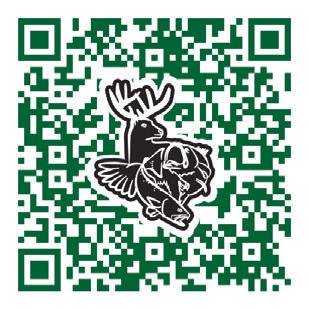
at’s a greater accomplishment than any speckled trout you catch or deer you could kill.
ings like that change destinies.
uEmail Chester Moore at cmoore@fishgame.com















T HAD BEEN A WHILE SINCE MY most recent goose hunt when, back in October, Ducks Unlimited’s John Gordon asked me to join him and a few other “veteran” waterfowlers for two December mornings in rice stubble north of El Campo.
Chambers and Rob Sawyer, and me. Between the four of us “OGs” – Original Goose hunters – I calculated about 200 years of prairie time.
December couldn’t come fast enough. Two days out, Gordon called to say our hosts had a decent concentration of geese

“It’s a video project we’re doing about the prairie and goose hunting and…” John opened his pitch. And that’s how far he got before I interrupted and accepted.
All I knew leading up to the trip was that we’d be hosted by Waterfowl Specialties’ Mitchell Holder and Jack Sebring, John and videographer Zach Eshleman were in charge, and the front line would include former newspaper co-worker Shannon Tompkins, authors/publishers Gary
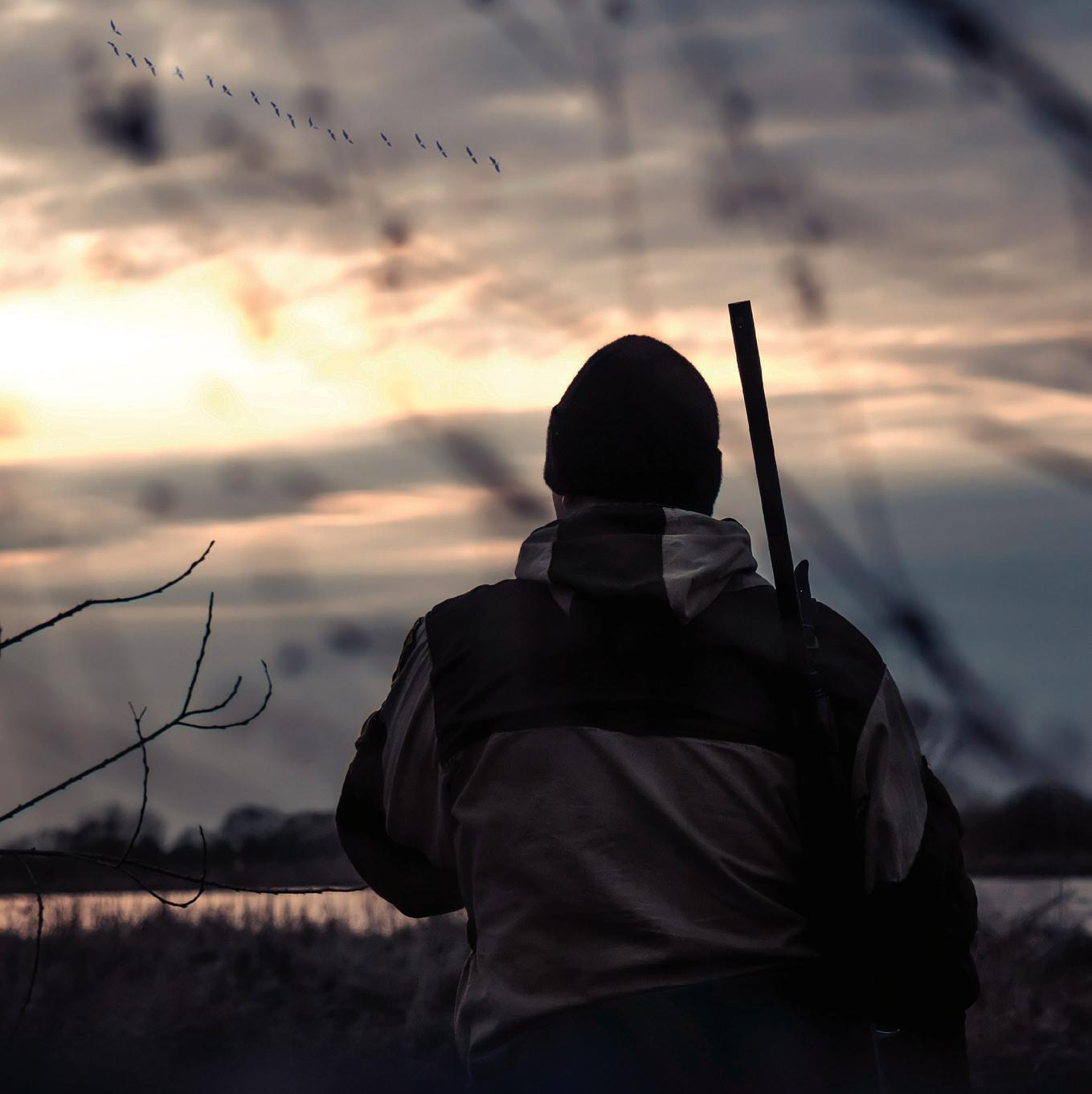
in the area, four or ve thousand, and that we’d likely be the only group within earshot.
A day before departure, my old soul slipped back into a familiar place. Calmly and thoroughly, I gathered all that I needed and a li le more from closets and garage shelves. From the gun safe, I withdrew the same Remington Wingmaster 870 through which I’d run thousands of rounds. I even found two boxes of vintage non-toxic goose loads that, as it turned out, still went “bang”

 :: by DOUG PIKE TF&G Senior Contributing Editor
:: by DOUG PIKE TF&G Senior Contributing Editor


with each trigger pull. I found my old calls, too, but swore I wouldn’t interfere with my hosts’ e orts and quietly kept that promise. e 75-minute drive from home to lodge Monday night was easy. I arrived late and se led into the lodge’s penthouse, which in reality is just its dusty a ic, complete with a pool table and couch and some curious mounts.
We all woke a li le earlier than necessary that rst morning. A er brief conversation over co ee, we loaded up and headed into the darkness. For 14 seasons as a guide, I was always the lead vehicle en route to the eld. is morning, I was third of ve.
On the way out, my head lled with images of my goose-hunting past…newspaper draped over stubble, then torn bedsheets and banquet cloth. And then homemade windsocks – they made a tremendous di erence – and then the procession of full-bodied decoys that emerged in the 1990s. And I couldn’t wait to see the latest in waterfowl trickery.
We parked and gathered our gear quickly, while Mitchell and Jack o -loaded the big buggy and trailer for the ride into the rice.
Somehow, in my haste, I managed to turn on an interior dome light that refused to turn o as everyone hopped onto the rice bus.
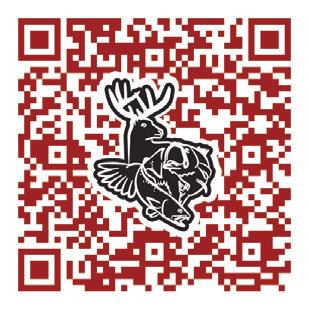
I mentioned to the last person who walked past me that I’d need just a quick minute and hoped they wouldn’t leave me there in the dark.
ey le me there in the dark.
With the light mystery nally resolved,

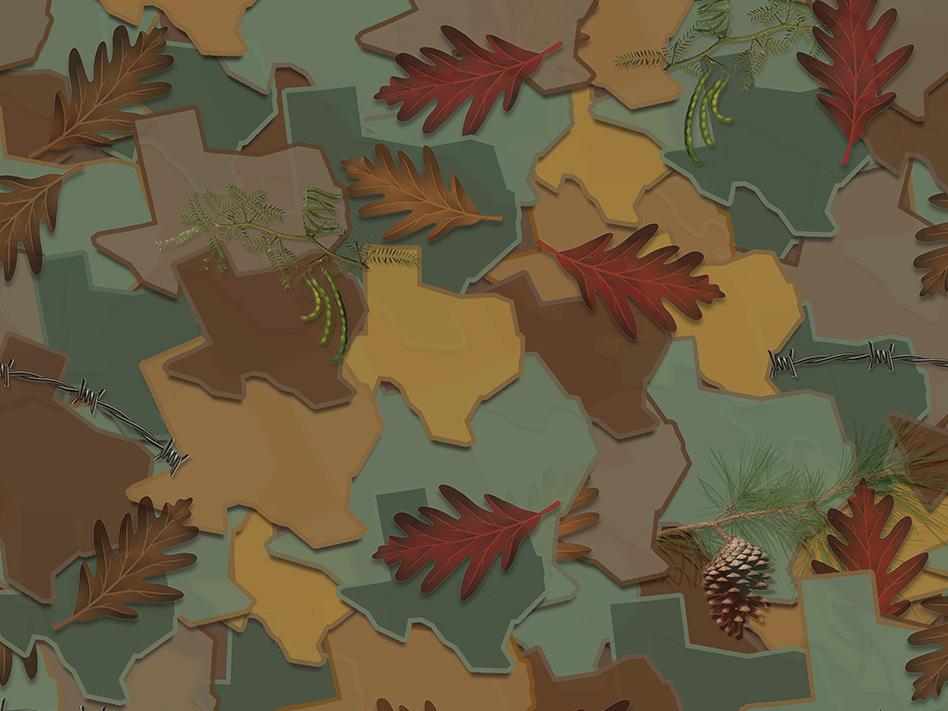
I stepped quickly in hopes of catching up before the buggy crawled into the eld. Barely 20 yards back and with my shouts going unheard over the buggy’s rumble, the one- oat parade turned a corner and was gone.
We didn’t have buggies when I guided, so on the plus side, I felt light on my feet minus the usual two bags of decoys on my shoulders. I could still make that walk. And did.
Hiking in a orded me a few extra minutes to breathe familiar prairie air and feel the so mud that supported what was le of a rice crop as I trudged toward my friends.
With the spread set – wind socks that run $75 a dozen and ba ery-powered ying decoys that mimic landing birds and run $1,000 for a half dozen – and slender shards of sunlight stabbing the horizon, we could hear distant geese li ing in small groups and headed our way. We had a blast.
Two full safe hunts later, we’d collectively taken nearly two dozen geese, which under the circumstances I felt was a ne result. And, since this hunt took place during the duck split, we were treated to
several large ights of pintails that wanted desperately to land among us and our fake geese.
O en, as birds approached, I’d close my eyes and embrace the memory of those sounds, the shrill calls of working geese that I thought back then would ll that prairie every winter of my life.
I was wrong. Most of the mid-continent snow geese abandoned Texas’ coastal prairie years ago for be er accommodations farther north. I had to wonder how old some of the birds we saw were, these geese that clung stubbornly to migratory routes they may have own for 20 or more years only to nd neighborhoods and warehouses in the places where rice and soybeans, peanuts and corn once stretched to both horizons.
I so genuinely appreciated the opportunity a orded me by John to wallow in wet rice again, shotgun under my le hand and a perpetual smile on my weathered face.
A er that second hunt, Rob, Shannon and I gathered at the lodge and talked for nearly an hour about our past experiences on the prairie, how that prairie has changed, and whether or not snow geese might
return in numbers even remotely close to what the three of us witnessed every season for several decades. Probably not, we agreed, but there still are enough to share glimpses of the past with young hunters willing to invest their time and talents.
ose two days this past December, I was right where I belonged. And there was great comfort in returning to a place that brought me so much contentment and happiness.
For back-to-back mornings, I leaned into the board that supported my back, eyes closed, staring upward and listening to snow geese honking so loudly they seemed to be hovering directly over my head and trying to wake me…from a dream.
Special thanks are owed to John for the invitation, to Zach for documenting the whole thing, to Mitchell and Jack for hosting us, and to my iends for allowing me to join them.
uEmail Doug Pike at contactus@fishgame.com

T NEVER FAILS. EACH MARCH, AS WATER TEMperatures begin nudging the upper-50s on many Texas lakes, crappie begin crowding the shallows to set up camp for spawning. Sometimes the move starts as early as February.
I know this because I always manage to catch a few on baits that are built to catch bass in skinny water. Often times, the fish are “slabs.”
One of the largest white crappie I ever caught grabbed a square bill crankbait I was crawling across a shallow, grassy flat at the upper reaches of Nacogdoches. It was early February, 45 degrees outside and the wind was howling out of the north.
I didn’t weigh the fish, but it measured slightly more than 16 1/2 inches with an ovary-swollen belly so plump it appeared ready to pop.
Lake Fork fishing guide Gary Paris has stumbled across crappie while bass fishing in early spring more than once. A high percentage of them have been caught around shallow flats and points in close proximity to a creek channel.
“It happens just about every year,” Paris said. “When the water temperature gets right, say 55-58 degrees, the crappie always start rummaging around in the shallows looking for a place to spawn.”
Translation: If you go through an area and catch a couple of crappie on bass baits, it might be wise to reach for


a spinning rig armed with a crappie jig or Roadrunner. You could put together a 25-fish limit in short order.
Crappie frequently gravitate to the same areas to build nests for spawning as bass do, often at just about the same time. Difference is, the fish are prone to spawn in groups, frequently called colonies. Catch one spawning crappie and others will likely be close by.
Depending on the lake and area of state up for discussion, spawning activity could get underway as early as February or as late as April. The farther south a reservoir is located, the sooner the shallows will warm sufficiently enough to attract spawning crappie.
Waters in the northern part of the state are naturally slower to warm. In eastern Texas, the spawn is typically full blown by midMarch and lasts throughout much of April, possibly into May.
Just so you know, there two subspecies of crappie -- black and white. Both are abundant in Texas. Black crappie are easily identified by the dark speckles and splotches on their sides. They are most plentiful in the clear, acidic waters of eastern Texas.
White crappie are native to the eastern
two-thirds of Texas but can now be found statewide except for the upper portions of the Rio Grande and Pecos drainages, according to TPWD. Whites do better in turbid water than blacks.
It’s worth noting that crappie are the third most preferred freshwater sport fishing among Texas freshwater anglers behind bass and catfish. Daily limits are liberal, 25 fish, 10 inches. Their succulent white meat is great in the skillet.
How big do they get? The Texas state record black crappie of 3.92 pounds from Lake Fork has stood since 2003. Texas’ biggest white crappie was caught in 1968 from Navarro Mills reservoir in between Corsicana and Waco.
Just about every region of the state has a few decent crappie lakes, but some are way better than others. Here’s a rundown on a few of Texas’ best lakes for big slabs when they make the move to skinny water:
• Lake Record White Crappie: 2.94 pounds
• Lake Record Black Crappie: 2.15 pounds
• Description: The 114,000-acre reservoir east of Lufkin supports abundant white and black crappie populations thanks to a variety of great habitat like hydrilla beds, brush piles and submerged timber. Some of the best springtime fishing usually happens towards the rear of major and secondary creeks, where buck brush, willows and other cover crowds the shorelines in water that is shallow enough to wade. The upper reaches of the Angelina River north of Kingtown have been known to hold big numbers of crappie as early as January and February.
Something to watch this year is the water level. The lake was 7.09 feet low around Christmas. It may be even lower by now without some significant rainfall.
• Lake Record White Crappie: 3.14 pounds
• Lake Record Black Crappie: 3.10 pounds
• Description: The 32,600-acre lake

west of Athens is lined with boat docks and piers that will attract plenty of pre-spawn and spawning crappie over the next two months. The fishing can be outstanding towards the rear of main and secondary creeks around any available shore cover. The old spillway at the upper reaches of Caney Creek is a wellknown hotspot.
• Lake Record White Crappie: 3.50 pounds
• Description: White crappie are a big draw on the 4,000-acre Central Texas reservoir northeast of Austin, and now is when the fish can be found spawning around abundant willows and other shore cover in shallow water. Some of the best fishing happens on flats and points in close proximity to creek channels and underwater points.
• Lake Record White Crappie: 3.55 pounds
• Lake Record Black Crappie: 3.92 pounds
• Description: The 27,000-acre reservoir
east of Dallas, is well known for its springtime prospects with dozens of creeks and brush cluttered shorelines where anglers can catch fish casting small jigs or dabbling live minnows in skinny water under a cork using a long pole. There will also be plenty of fish still holding at suspended depths in and around old timber and brush piles in 20-25 feet to be caught using forward facing sonar, and many of them will be big. Eighteen teams in the 2023 Crappie Masters event held March 31 - April 1 cracked 30 pounds on 14 fish, including a winning catch for 35.10 - an average of 2.5 pounds per fish. Several fish upwards of three pounds were brought to weigh in.
• Lake Record White Crappie: 3.44 pounds
• Lake Record Black Crappie: 3.69 pounds
• Description: The fish factory built along the Sabine River that divides Texas from Louisiana has been a favorite with panfish junkies for decades. Spanning nearly 182,000
acres, the reservoir has dozens of brush-filled creeks and plenty of fishy looking shoreline cover provided by willows, brush, cypress trees and hydrilla beds. Spawning activity usually begins at the lake’s northern reaches and progresses southward with time, possibly lasting into May in creeks and pockets in the vicinity of the dam.
Fishing guide Ben Matsubu likes to target the backs of creeks around grass beds and other cover in 2-3 feet of water using a Roadrunner or small jig. Live minnows fished under a cork on a long pole can also be effective once you’ve located an area where the fish are congregated.
HERE ARE A FEW OTHERS WORTH A LOOK FOR SPRINGTIME SLABS:
Lake O’ The Pines, Murvaul, Caddo, Richland Chambers, Palestine, Navarro Mills, Wright Patman, Arrowhead, Lavon, Limestone, Daniel, Bonham, Coleto Creek and Aquilla.
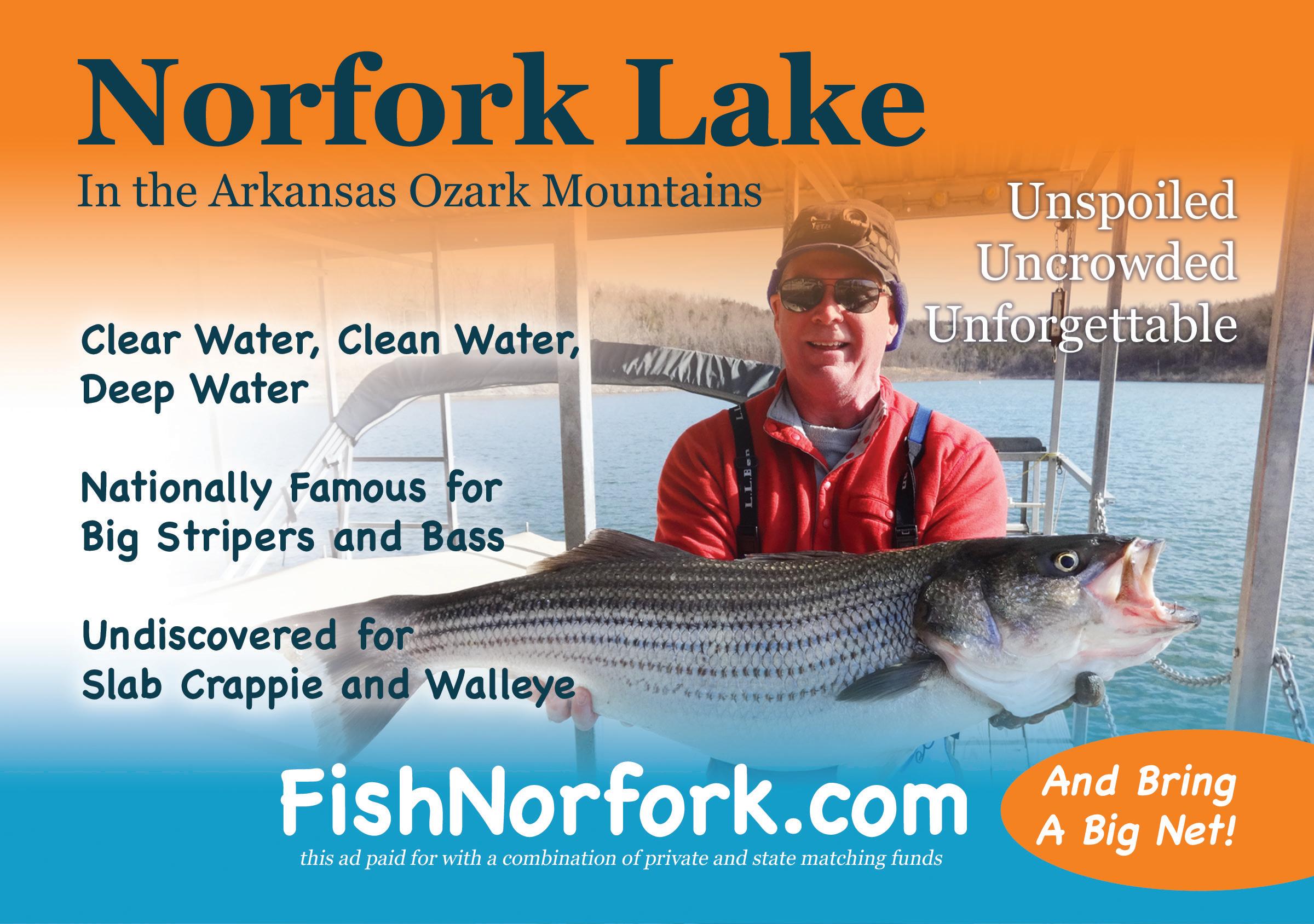


S SPRING BLOSSOMS ON THE TEXAS GULF Coast, large numbers of flounder start moving back into bay systems from their spawning period in the Gulf of Mexico.
From now through early summer flounder fishing can be really good but I have found as the flounder fishery has been under more pressure, I have to try more tricks to catch them. Here are some of my favorites for spring through early summer.
1. CURRENT LINES: Big current lines in the Intracoastal Canal and in the river systems connecting to bays will have pronounced current lines where baitfish congregate. They are usually clear on one side and murkier on the other. If you find a current line with shad or shrimp work the current line from the murky to clear side. Many times, big flounder will be on the edge of the murk.
2. START LATE: Dissolved oxygen levels are at the lowest level at daybreak. I believe this is why flounder fishing particularly in the summer tends to be slow early in the morning. By starting an hour or so after daylight anglers can avoid the super slow early bite and focus the best efforts at a key time. Summer is the time of fish kills on the Gulf Coast and the bulk of it has to do with low dissolved oxygen levels. This also has an impact on fish metabolism and I believe since flounder are relegated to the lower portion of the water column, they are more impacted by oxygen levels.
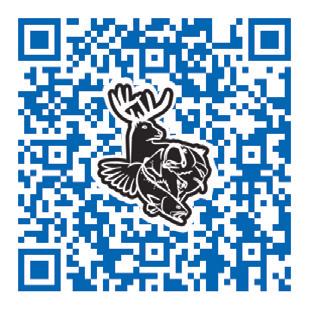
3. FOLLOW THE SHAD: The river systems on the Upper Coast are inundated with large populations of shad (menhaden) and flounder in these systems will follow the menhaden. Fish that bite at point x one day may be 1⁄2 mile away at point y if the shad have moved. Very few anglers target these flounder, so you have a chance at catching big specimens.
4. DEPTH: The last big flounder I caught was using a drop-shot rig, which is one popular with bass anglers fishing deeper water. There were baitfish holding on a ledge in 14 feet of water and I lowered down the drop-shot to see what I might be able to catch there. It ended up being a flounder and
Don’t

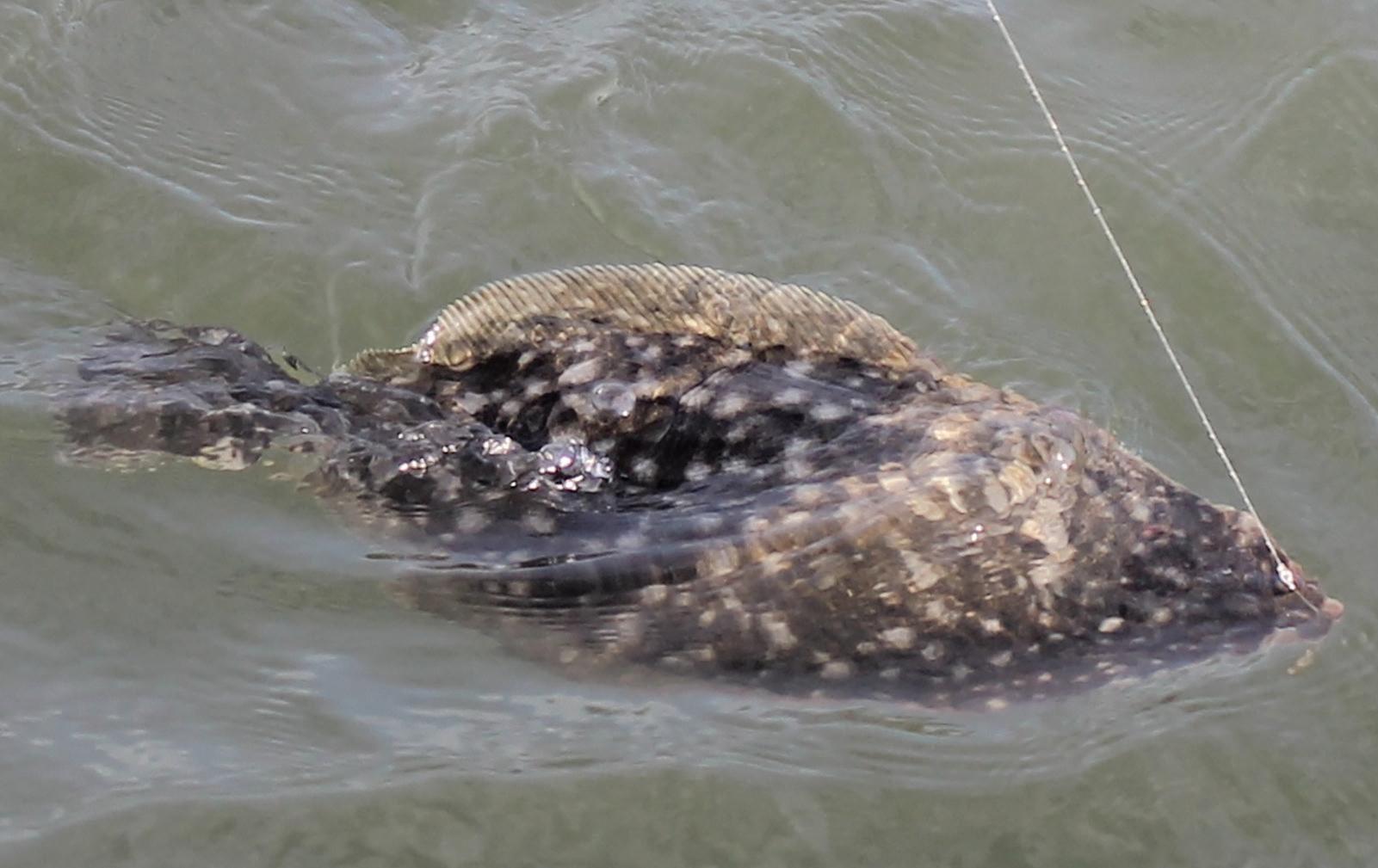
was not the only one we caught in the same area in two days of shing. Flounder will feed in deep water but tend to concentrate around depth changes, so look for drop-o s and try the drop-shot rig.
5. SUMMER HIGHS: When tides are running extra high in the summer, I seek ounder along the main shorelines of bay systems. A acking vast shorelines would be a waste
of time and end up in dogged frustration so you have got to have a strategy. Instead of looking over eight miles of shoreline, narrow your search down to 1/8 of a mile. You must eliminate water to successfully bag ounder.
e rst step I take while eliminating is to once again look for a shoreline that has stands of roseau cane.
Roseau cane has an intricate system that is somewhat like a smaller version of mangrove,
and it gives menhaden a place to linger, hide and dodge larger predators.
6. LIVE CROAKER: Croaker is available at many bait camps during the summer months. It is a phenomenal live bait for ounder especially when shed on a Carolina rig. Pick out the smallest croaker in the tank and avoid the extra big ones anglers o en used for big trout.
7. ALLIGATOR CONNECTION: When you see alligators with their heads positioned toward the bank a few feet o a bank (several at a time) sh there. ey are typically feeding on shad pushed against the bank and o en ounder are feeding with them. is can work anywhere but you are most likely to encounter it in the Intracoastal Canal or a river system.
8. CHROME SINKERS: Flat sh fans in California use bright chrome sinkers to key in on ounder. ey say the bright chrome draws in sh. And since ounder are visual, I believe this can o er an advantage in Gulf Coast waters.
This spring marks 15 years of the Flounder Revolution project. Anglers can get a special token for sending photos of flounder 20 inches or more they released. Email cmoore@fishgame.com.

9. SURF JETTIES: ere are small je y systems in the surf at various points along the coast. Notable spots include the stretch between Cameron, La. and the Texas state line on Hwy. 82 and the Galveston Seawall area. ere are strong numbers of ounder in the surf, and they stack up at any kind of structure. Seek out these spots using live bait on popping corks or by shing live bait rigged on football head jigs and move along the edges of the rocks to score on big surf at sh.
10. SUNKEN BARGES: During summer months, ounder will stack up around sunken barges in the ship channel and along the Intracoastal Canal. Making precision casts into tiny pockets stacked with bait sh and working a live bait with a popping cork anglers can score on big ounder.
11.

Last year I watched a man absolutely smoke me using large live shrimp on a modi ed free line rig. He had a wide gap hook with an 1/8oz split shot rigged above it and he pitched into the current toward a point allowing the current to push it into the key bite zone. e ounder hammered it! Since then I have used live shrimp several times (including jumbo shrimp) and caught many ounder including
overlook spring flounder fishing. It can be tremendous if you know where to look.big ones. e key to this seems to be the rig. e ounder do not seem to want the shrimp if it is on a heavy Carolina rig but cannot resist the free swimming action of this setup.
12. DEEP SHORELINES: Looking back over the last few years of ounder shing, my biggest sh in the bays have come from stands of roseau cane and the deep shorelines in the interior of marshy cuts.
When moving into a marsh, use a side-viewing depth- nder to scope out deep shorelines with major drop-o s. As Capt. Skip James taught me years ago, they are o en in the “S-turns” of the cuts where heavy currents rushing against the sudden change in topography creates a washout. I have found these spots hold a lot of sh, and usually more big ones than surrounding areas.
Taking your ounder shing to the next level requires more than just shing harder; you have to sh smarter.
ese areas receive very li le angling pressure and therefore the sh do not get caught and thrown into an ice chest.
Also, these spots o en coincide with eddies or small ditches feeding into the main
Kevin Broussard caught this unusual double brown-sided flounder on Lake Calcasieu.
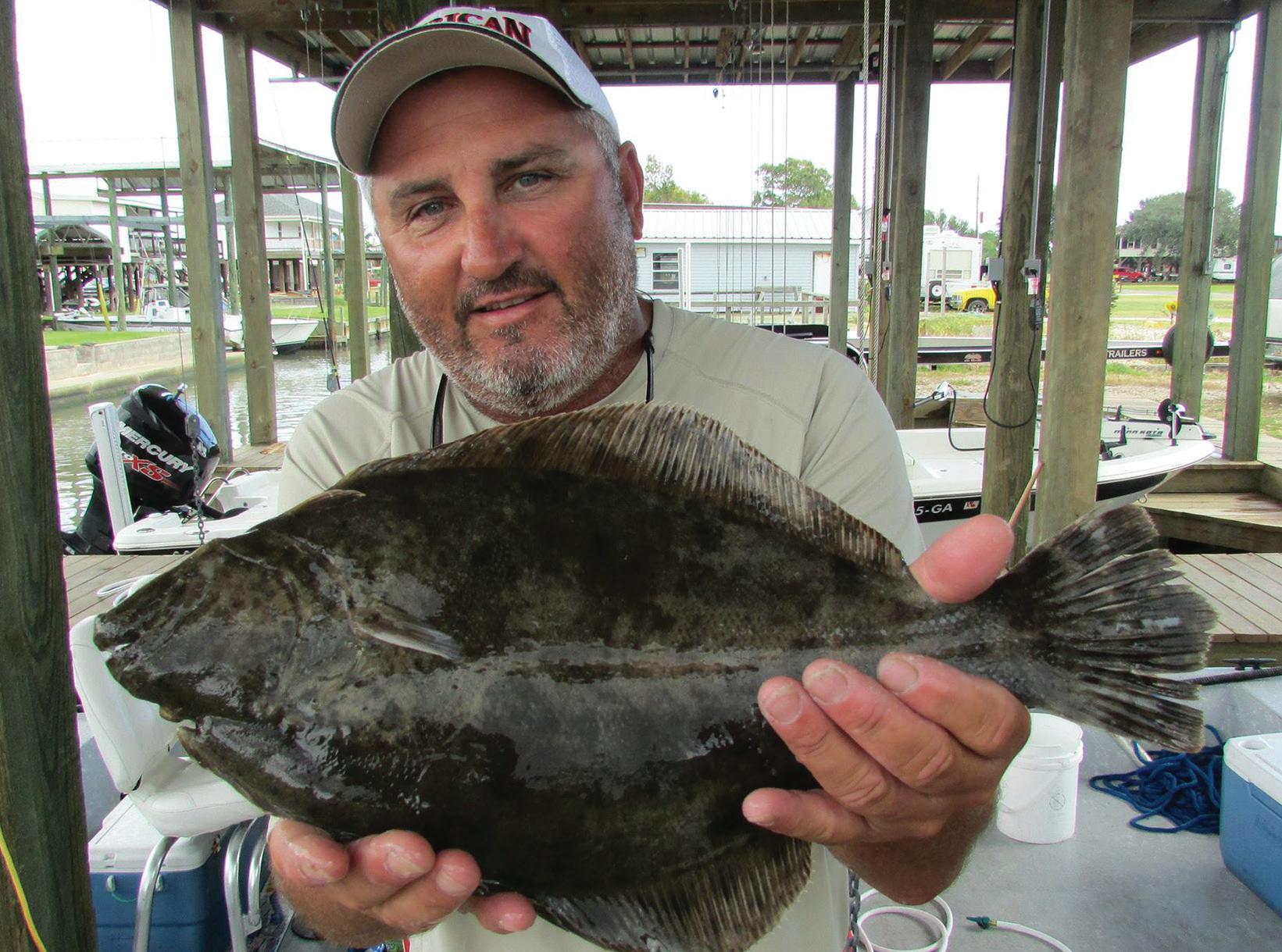
cut, giving ounder serious bang for their buck in exchange for lying there. Having been involved in early tagging studies of ounder, I do believe they are territorial and primarily stay around the same drainage once they enter in the spring. You will probably

be the only angler targeting these kinds of cuts in your area, and therefore will have real hotspots to yourself which is always a plus.

AKE CONROE, NESTLED ALONG THE western edge of East Texas, has long been a revered destination for anglers in search of trophy bass. With numerous lunker fish recently registered with the Texas Parks and Wildlife Department, the lake has once again cemented its status as a hotspot for big bass. In the following article, we’re going to take you through some of the best strategies for catching them.
Before diving into the how-to aspect of Conroe, let’s take a closer look at the 2023 lunker fish. In the lunker bass category for eight pounds or larger fish there were 21 fish registered with multiple fish over 10 pounds.
Catching trophy bass on Lake Conroe requires careful planning and execution. Here are some strategies to improve your odds of landing a giant:
LOCATE PRIME SPOTS: Familiarize yourself with Lake Conroe’s underwater structures, such as submerged brush piles and docks with large man-made brush piles. Use a quality fishfinder to identify potential hiding places for giant bass and remember most of Conroe’s structure is man-made.
TIMING IS EVERYTHING: Spring is a prime season for trophy bass, as warming water temperatures trigger big females to move to shallower areas for spawning. Plan your trips accordingly, focusing on the months of March through May.
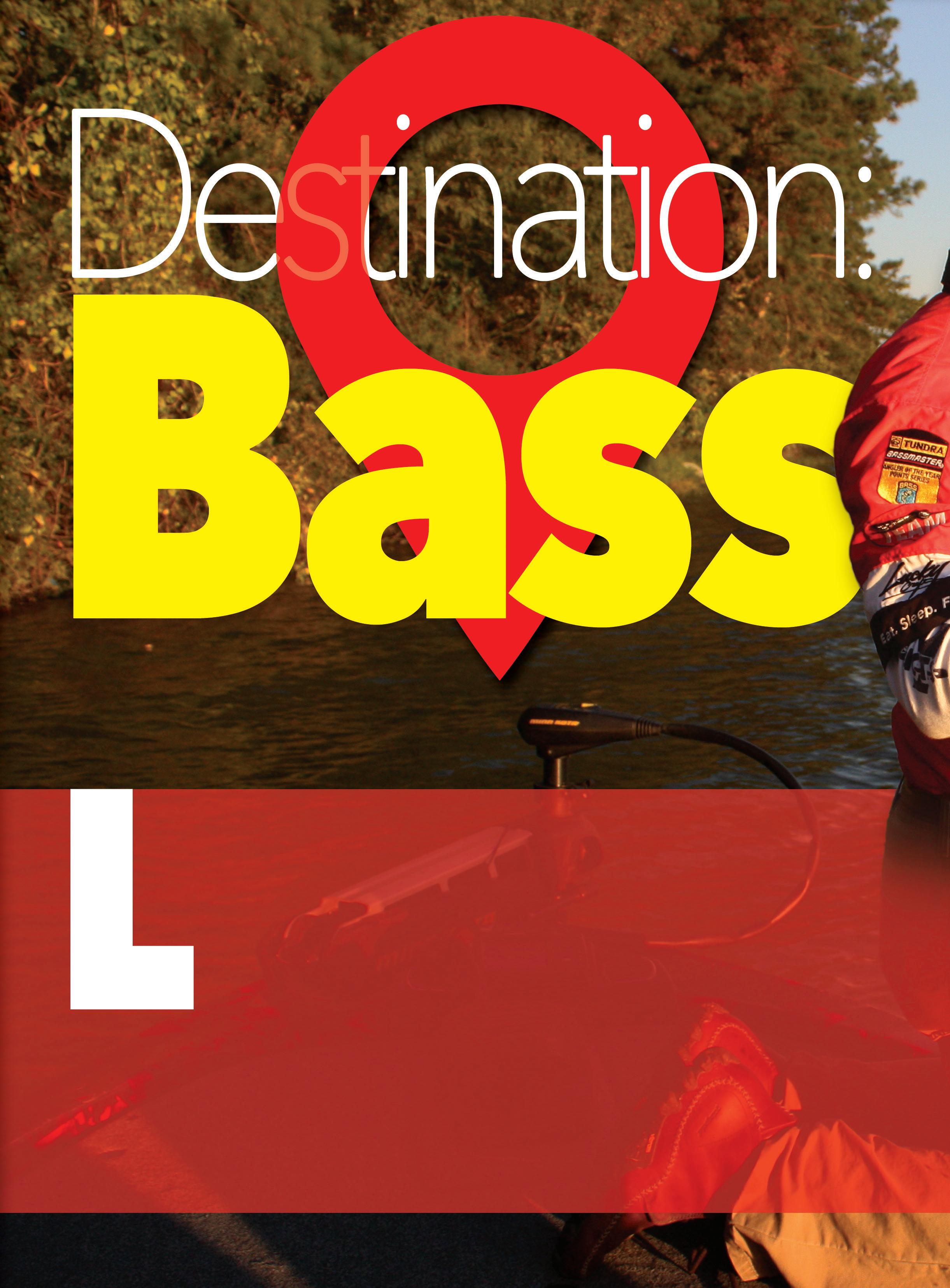

LURE SELECTION: Your tackle box should contain a variety of lures, including big spinnerbaits, jigs, and large so plastics. Choose lures that mimic the local forage and don’t forget to throw in some topwaters.

PATIENT PRESENTATION: When targeting giant bass, take a slow and methodical approach. Cast your lure near potential hideouts and structures, allowing it to sink slowly. Use subtle movements to mimic injured prey, tempting lunkers to strike.
Spring is a particularly fruitful season for trophy bass shing on Lake Conroe. Employ these top spring tactics to increase your chances of success:

BEDDING BASS HUNT: During the spring spawn, female bass o en gather in shallow waters, preparing to lay their eggs. Search for “beds,” clear, shallow depressions

on the lake bo om. Use a nesse technique and gentle presentations to provoke protective strikes from nesting females.


TOPWATER EXCITEMENT: Spring mornings are ideal for topwater shing. Rise before dawn to cast surface lures like poppers and buzzbaits. Prepare for explosive strikes from lurking giants as the sun begins to rise.
POST-SPAWN PATTERNS: As spring transitions into early summer, adapt your strategy. Post-spawn bass tend to move to deeper waters and become more nicky. Target them with Carolina rigs with 12-inch plus worms.
e lake has some of the biggest bream to be found anywhere in Texas with onepound sh not uncommon. Additionally, the crappie shery is phenomenal with both size of sh and abundance present.
Big perch are a great prey item for big bass.
Studies show that large bass o en change their dietary preferences to larger
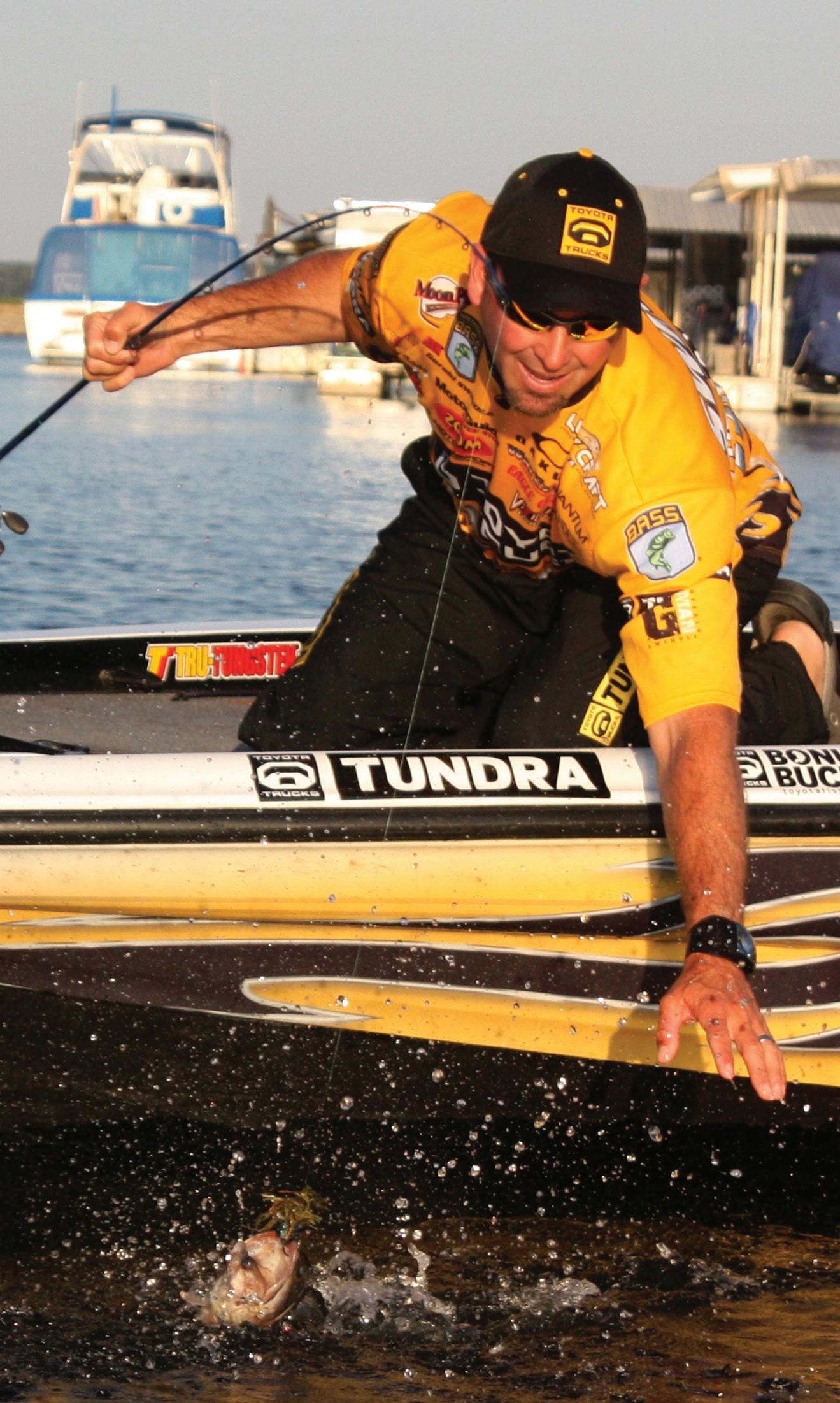
sh. Calorically, it makes more sense to eat a one-pound bream instead of chasing 100 shad.
With the bass, bream and crappie o en inhabiting the same man-made cover on the lake, Conroe’s giant bass don’t have to go far to grab a giant protein-rich meal that sustains them and helps them grow to epic proportions.
Additionally, this pan sh shery o ers excellent opportunities for families and seri-

ous perch a cionados to catch a mess of sh for the frying pan.
But beware, if you tie on a shiner to catch a slab crappie, a lunker largemouth might just take it from you.
e research ndings unveiled an intriguing aspect of the angling world: the role of underwater vegetation in shaping bass behavior. When Lake Conroe boasted lush, natural cover, smaller bass were less inclined to indulge in piscivore, their sh-eating habits remained subdued until they reached the 140 mm mark.
Yet, the introduction of grass carp, which eliminated all submerged vegetation, triggered a remarkable shi . Most largemouth bass measuring 60 mm or more turned into avid sh predators. is early initiation of eating other sh led to notably accelerated rst-year growth in subsequent largemouth bass year-classes post-vegetation removal.
While the changes also impacted the forage sh community’s structure, it’s heartening to note that ample sh prey remained available for largemouth bass both before and a er the vegetation was cleared. ese intriguing insights underscore the dynamic relationship between nature and shing success. Perhaps the synergy of these factors, combined with Lake Conroe’s unique circumstances, has contributed to its esteemed reputation as a top-notch big bass destination. e natural balance of this waterbody continues to evolve, o ering anglers new challenges and opportunities for thrilling catches.
Lake Conroe has a steady shery. e lake is consistently churning out catches of trophy-sized bass and every few years produces a couple of true world-class 13-plus-pound sh.
It’s also a convenient lake to sh, located only an hour north of Houston and within a short distance of George Bush Intercontinental Airport. It’s easy to get there and there are many great accommodations in the Conroe area.
Plus, on top of the bass shing there is the incredible aforementioned pan sh action, hybrid stripers and it’s possibly the best lake to catch a limit of channel cat sh in Texas.
Lake Conroe is the total package.
uA seven-year study of Lake Conroe shows some interesting aspects of the bass shery here.







 :: by LENNY RUDOW TF&G Boating Editor
:: by LENNY RUDOW TF&G Boating Editor
WE BOAT ANGLERS LOVE to hate anchors. ey clang and bang, making a sh-spooking racket. ey chip berglass and ding aluminum. Hauling them up is a pain in the keister and when they come up covered in mud it creates yet more cleaning chores. Too bad we can’t do without them… or, can we?
Fair warning: if you already have a bowmount trolling motor with Spot-Lock on your boat, you’re about to be a li le bored. Or, maybe feel a li le vindicated. Either way, being able to drop down the trolling motor, click a bu on, and hover in place isn’t merely advantageous, it will literally change the way you sh. Anchor-free anchoring becomes a snap and moving that “anchor” to reposition your boat in tiny increments — allowing you to systematically work over a wreck or reef without spooking any sh nor throwing your back out — will help you boost your catch rate. Same goes for being able to hold the boat in an ideal casting position, creep stealthily through the shallows, and set an autopilot to ease you slowly through an area you’d like to prospect.
A few years back those of us with boats in the 28 to 35-foot class would have shrugged at the thought of having a trolling motor and Spot-Lock. e o erings on the market simply couldn’t do the job. Today, however, several manufacturers o er sha lengths up to and even over 100 inches, which can easily keep the prop in the water





from a bow elevation of well over three feet, even in three-foot seas. e motors themselves have enough power to do this in a 20-knot wind or a roaring current, and if they’re hitched to one of the new LiFePO4 ba eries, they’ll do it from sunrise to sunset.
themselves have enough power to do this in ba eries, they’ll do it from sunrise to sunset.
Sure, those lithium ba eries do add a signi cant amount of cost. (Plan on spending at least a grand, maybe more depending on just how much juice you need). Same goes for the motor itself (to the tune of several thousand dollars, and the cost can get all the way up to $5K or more to get a big-boat rig and have it professionally installed). But cost is just about the only downside to having one of these setups, assuming you have a boat on which a bow-mount can be utilized without signi cant customization.
Even bigger o shore-oriented boats can enjoy anchor-free anchoring, too. Both Yamaha and Mercury o er GPS-enabled virtual anchoring as one of the many functions in their joystick systems, and other manufacturers have plug-and-play options via Optimus 360 from Dometic. ese hold the stern into the seas as opposed to the bow, and some systems do have issues with a lot of abrupt clunking into and out of gear or revving hard. Still, these are nitpicks compared to having to drop and haul an anchor over and over again. Note, however, that these systems can add tens of thousands of dollars to the cost of a boat; just how heavy the li will be depends on the make of the system and how many outboards your boat has.
en there are pole anchors to consider. With a trolling motor at the bow, they may be redundant in some scenarios, but these will hold you in position in the shallows just as long as you’d like without depending on ba ery power or spinning a prop. ough their application is much more limited, it’s still a heck of a lot easier to use one than it is to wrestle with a Danforth.
All of the above notwithstanding, a wise boater will not leave the slip or ramp without an anchor aboard. Even with multiple systems like these you do still need to haul it around because you never know when mechanical or electrical failure will occur, and being able to drop the hook is a ma er of safety. It’s critical to be able to hold your
boat’s position in certain situations, and the less tech you depend on to do so, the be er. If you’ve ever been on a boat that had lost power and was dri ing towards a line of inlet rocks, no doubt you were grateful to have that low-tech chunk of steel to lower down and stop your progress. So, although on many modern boats the anchor gets stowed in a locker and rarely sees the light of day, you still do need to carry one.
On my boat, I found it unacceptably annoying that the anchor ra led a bit in the locker’s rack in any signi cant seas. Planning to never use it, I had the brainstorm to duct tape the ukes to the sha so it wouldn’t ra le anymore. is did the trick. And just a few months later, I discovered the hard way that the GCFI outlet at my slip in the marina had gone bad — plugging in the onboard charger had been doing nothing for several weeks, at least. I found out when (you guessed it) I dropped down the trolling motor, hit the power bu on, and nothing happened. More than a li le annoyed, I grabbed a bait knife, cut away the duct tape, and dragged that infernal anchor out of its dungeon. Much as I hated to do this, I certainly was glad I had the anchor aboard.

It’s been well over a year since then, and now I check the charger’s light every time I plug it in. A er re-taping the anchor, I haven’t had to use it since. And in all honesty I hope I never have to again. With a li le luck, I never will — but it will remain aboard, no ma er what.
uEmail Lenny Rudow at contactus@fishgame.com
HE NORTH AMERICAN MODEL OF Conservation is the system that enabled the great comeback of American game species in the 20th century.
From bighorn sheep to elk and wild turkeys, the system that includes hunting, public access and science-based policy as part of its tenets has had a major impact on TF&G columnist Paul Fuzinski.
“My journey as a hunter has been one of discovery and a
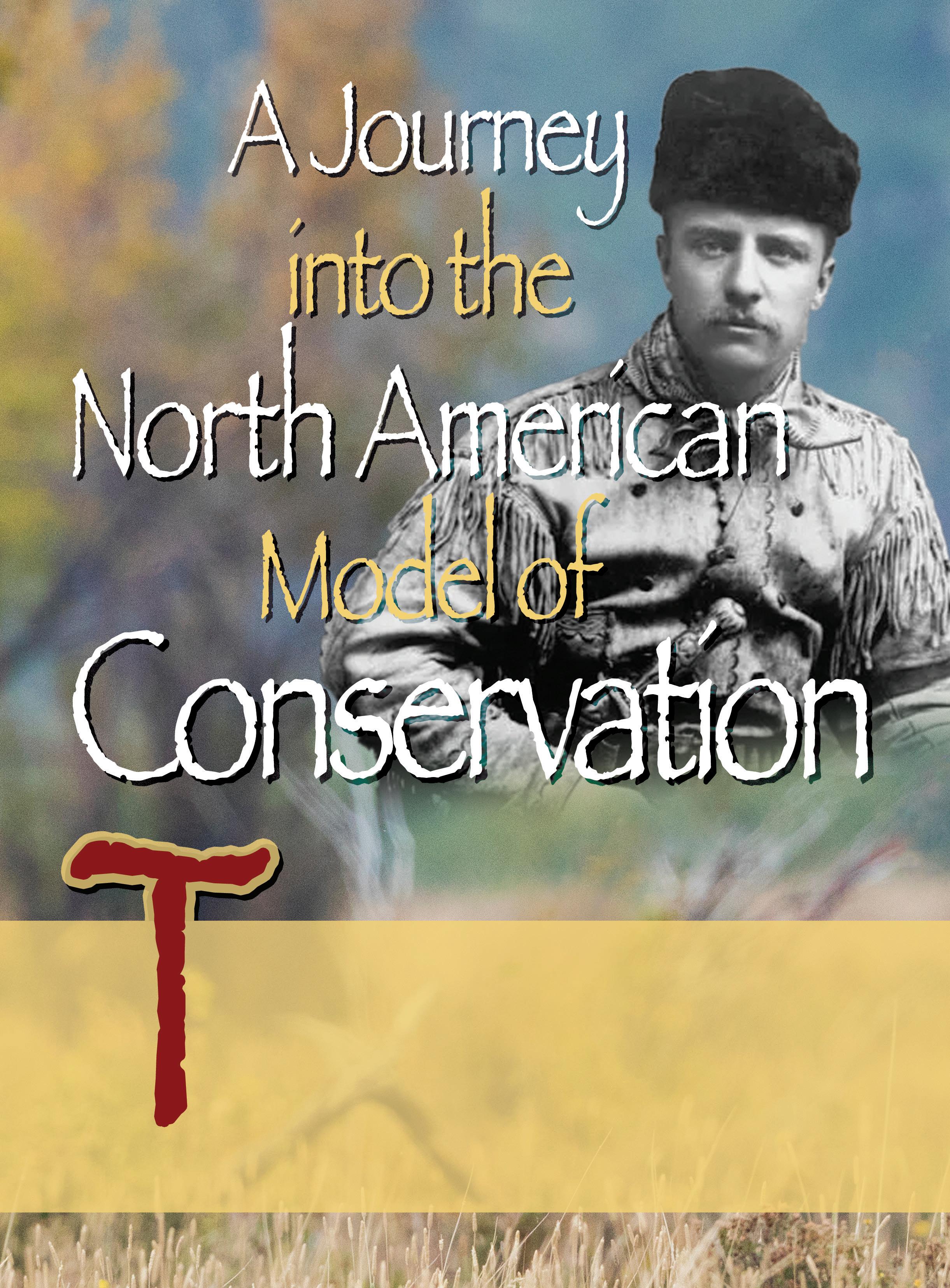
calling to wildlife conservation,” Fuzinski said.
“Being an active participant in nature changed my views of the importance of wildlife and its habitat and that brought me to the North American Model of Conservation which is a key part of The Hunt Within, a documentary I just released through Aptitude Outdoors.”
The Hunt Within, the latest project from the award-winning filmmaker offers an in-depth and reflective look at the pursuit of hunting and its impact on wildlife conservation.
“Paul’s journey is an inspiring one and the documentary
is something you could literally show someone to explain why hunting is a viable part of wildlife conservation,” said TF&G contributor Capt. Derek York
It also destroys the notion that hunting is all about killing and ego.
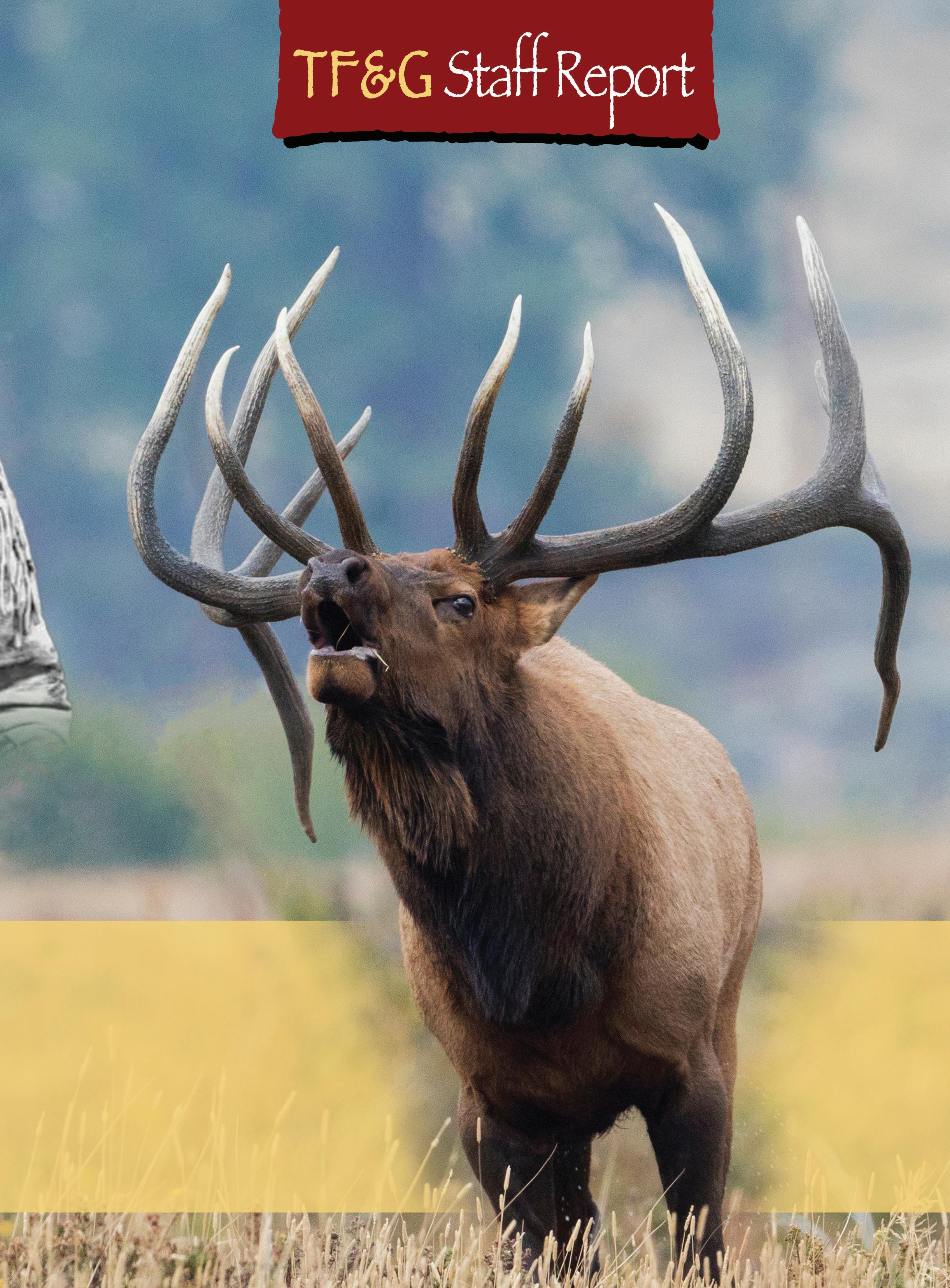



“A lot of people on the outside think of hunting as only about the kill and for me that’s the worst part,” said Renee ornton, Chair of e Wild Sheep Foundation’s Women Hunt®
“Everything about the hunt is spectacular from dreaming about it to planning for it, ge ing your gear ready-all of it. And that’s why even if I’m not successful sometimes I’m just as happy because of the experience and the reverence we have for the resource.”
TF&G Editor-In-Chief Chester Moore, who appears in the documentary said he believes it is a game-changer.
“It’s not a stereotypical hunting documentary and it’s certainly not the cut and paste hunting show you see on satellite networks. is is a personal journey of Paul’s that meets with the heart, passion and soul of others who love wildlife and also happen to hunt. I will be using this as a tool to show nonhunters in my life what hunting is really about. And with game species like mule deer facing myriad troubles, its arrival comes at a perfect time.”
With interviews conducted at the HuntFish Podcast Summit and high-level videography by Paul Fuzinski and Seth Geib, e Hunt Within highlights nature’s beauty and a system that promotes stewardship.
“I’m excited about continuing my journey and to see how people respond to e Hunt Within. is is all about conserving wildlife, wild places and showing there is a system here in North America that is proven to save our natural heritage. And I believe that’s something we should get behind now more than ever.”
See the video at aptitudeoudoors.com.




SPRING IS HERE AND WITH it comes the promise of not only warmer weather, but it also ushers in the spring turkey season! Halleluia! I love it! One of the main reasons I love it so much is the fact that you are not hunting the turkey. He is hunting for you. at is correct. You try your best at mimicking a lonely hen turkey that is looking for some lovin’ and listen for that male gobbler to sound o with his mating call. en the real fun begins. You call, he answers.
So how o en should you call? It has been my experience to call quietly at rst and a li le more aggressive in the late morning hours. As a ma er of fact, I have a certain ritual that I follow as soon as the morning light arrives. My good friend Chester Moore can con rm this. It is exactly what I did when he came to my neck of the woods to hunt these beautiful birds.
As soon as I can see my sights, I do some very so tree calls. It resembles a hen just thinking about waking up. If I hear a gobbler sound o , then I get my gun or bow up and get ready. It’s game on!
If I do not hear any response, then a er 10 minutes or so, I will yelp a few times. Usually, these are a li le louder than the tree calling, but I still try to keep it as so as possible. is is followed by a y down cackle. And get ready for this, I take my hat o and slap it vigorously against my leg, then slow the speed down to nothing. is action sounds exactly like the wings of a turkey ying down to the eld and my decoys. at usually will cause a roosting gobbler to immediately y down and investigate. Believe me, it has worked many times for me. Not so much for the turkey!
As late morning approaches, I will get aggressive with my calls. I will yelp 3 or 4 times followed by a cackle at the end of the







last yelp. is action simulates a hen that is excited and ready for action. If there is a tom within hearing distance, he is heading your way.
come in silent. If he has been fooled a few times and has heard way too many calls,
Many times, a smart tom turkey will come in silent. If he has been fooled a few times and has heard way too many calls, he will sneak in to your set up as quiet as a church mouse! is usually happens in the later morning hours. You really need to stay alert and try not to move around too much.

 :: by LOU MARULLO TF&G Hunting Editor
:: by LOU MARULLO TF&G Hunting Editor




at bird will see the movement from a long way o and will not return to your area any time soon.
Such was the case when Chester and I hunted turkeys. A big tom entered the eld a few hundred yards from our set up. One look with the binoculars con rmed that it was indeed a mature tom turkey. at bird never made a sound and suddenly, there he was! e only time he gobbled was a er he saw the decoys and slowly headed in our direction. Now, when I say slowly, if he walked any slower, he would have been going backwards! Occasionally, he would gobble, strut, look our way and take a few more steps. Chester was so busy taking pictures of the approaching bird that I had to nally tell him to shoulder the gun and get ready. Before too long, the boom sounded o , Chester had a big smile, and the bird had a bad day!
If you decide to hunt these majestic birds with a shotgun, a 12 gauge is a good choice. A 20 gauge will do the job nicely, but the bird must be much closer for a clean, humane shot. I use a Remington 1187 speci cally set up for turkeys. I have a special choke that screws in the barrel. It shoots a very tight group of pellets which is what you want. You need to aim for the head of the turkey. is will ensure that no pellets will be found in the breast of the bird.
I have seen number 6 turkey loads, and many hunters use them. I prefer a number 5 magnum shell to put the bird down. It is a personal preference and whatever works for you. Most guns today will accept a 3 or even a 3 ½ inch shell. My suggestion would be to use the biggest shell that will t in your gun. Sometimes you may have to reach out a little further to down the wariest bird.
If you decide to try your luck with a bow, I tip my hat to you, my friend. is is not an easy task, but one that can be one of the most exhilarating hunts you will ever experience. ere are a couple of places to aim with an arrow. One, and the one I prefer, is at the base of the wing where it meets the birds body. Another killing shot is right up the bu . If the tom is stru ing and o ers his bu to you, take the shot. He won’t like it much, but you will get your bird! Of course, you can always aim for the neck and join the “decapitating club”, but you really must be an expert shot to pull that o .
I have taken birds with an expandable broadhead and a xed broadhead. Both will work and work well. I suggest an expandable one. A xed blade will go right through the bird and the turkey may y o . He will die but you will never nd him. An expandable blade will open on impact causing the arrow to have less energy entering the turkey. e result will be an arrow that goes about halfway through the bird making it impossible to y o .
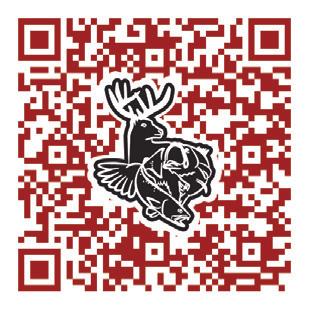
Hey! Turkey hunting is fun. Even if you do not bring home a bird, it is still exciting to hear the gobbles ge ing closer and closer. Just make sure of your target and what is beyond. Turkey hunting can be a dangerous sport so be alert and be careful and be mindful that you may not be alone in the woods.
Have fun and hunt safe.
uEmail Lou Marullo at ContactUs@fishgame.comHE PHYSICAL DEMANDS OF BOTH HUNTing and fishing always catch up to us, most often when we are in the middle of a hunt or at the end of a long day on the water. Whether you’re a seasoned hunter or passionate angler, understanding the importance of simple exercises will not only improve your success in these pursuits, but also ensure a safer and more enjoyable time in the great outdoors.
A strong heart and lungs translate to better stamina and less fatigue during long outings. This is where cardiovascular activities like jogging, cycling, and swimming shine. These
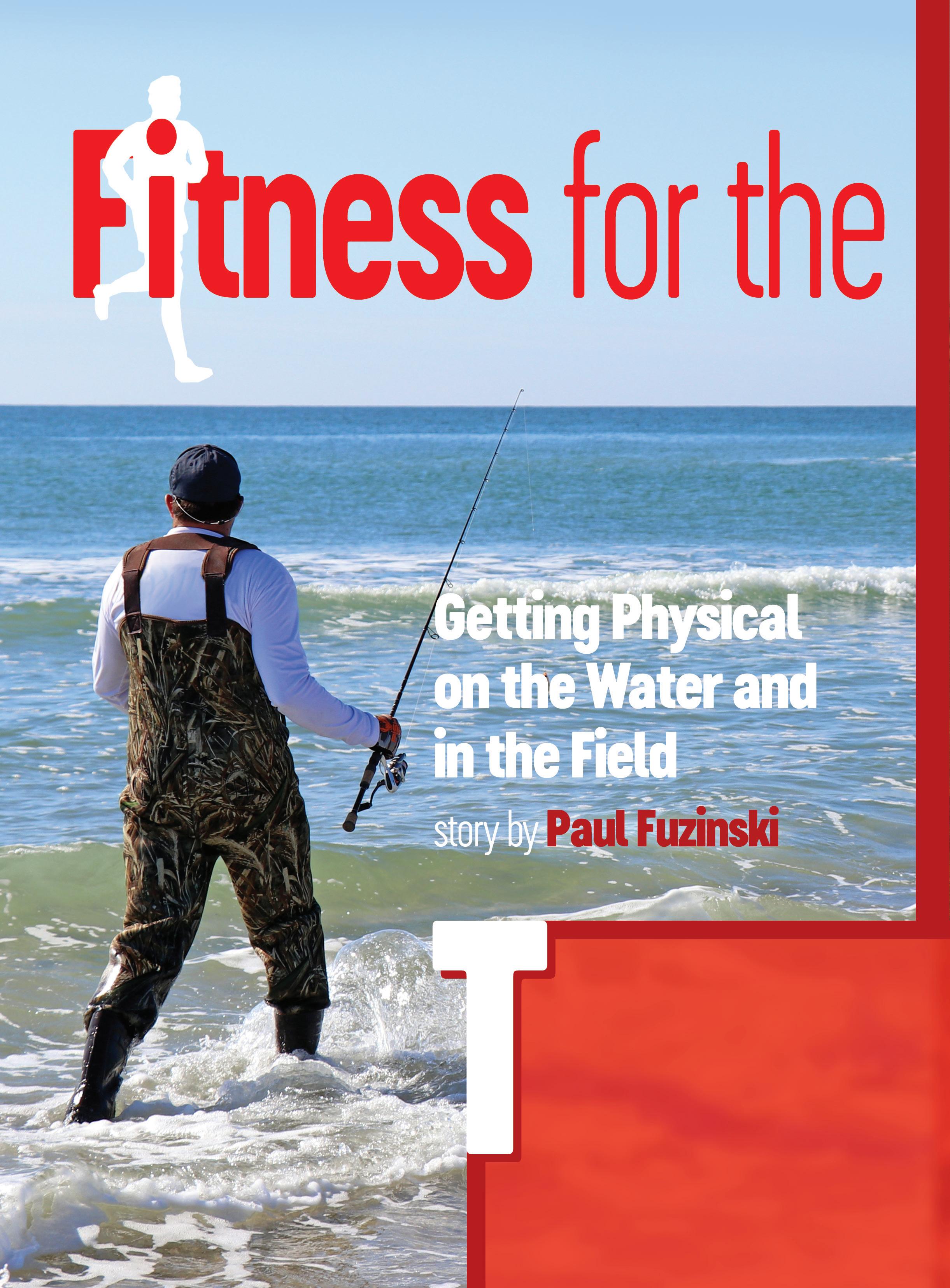
exercises not only build endurance, but also mimic the continuous, steady effort needed in the wild. Interval training can be especially beneficial, as it mirrors the bursts of energy required for hauling game out of the woods or battling a stubborn catch. Incorporating these cardio workouts into your routine a few times a week can significantly enhance your hunting and fishing experiences.
When it comes to hunting and fishing, strength is more than just muscle; it’s about resilience and capability. A well-rounded strength training regimen, focusing on the core, shoulders, back, and legs, not only enhances performance but also
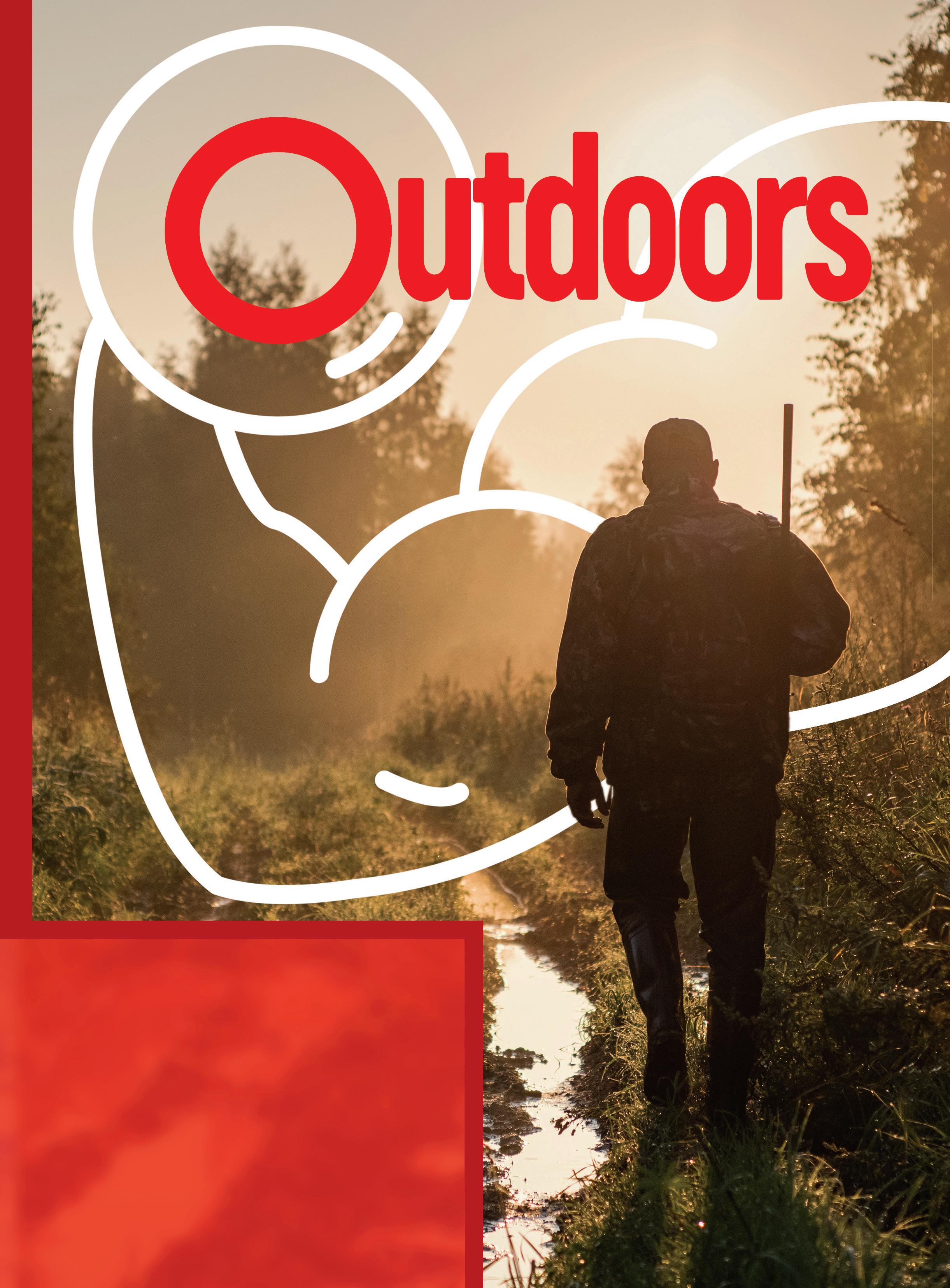
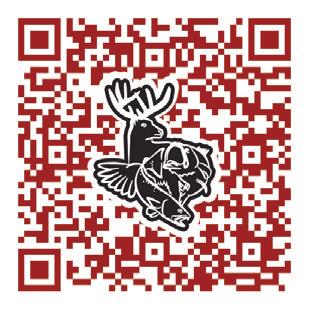
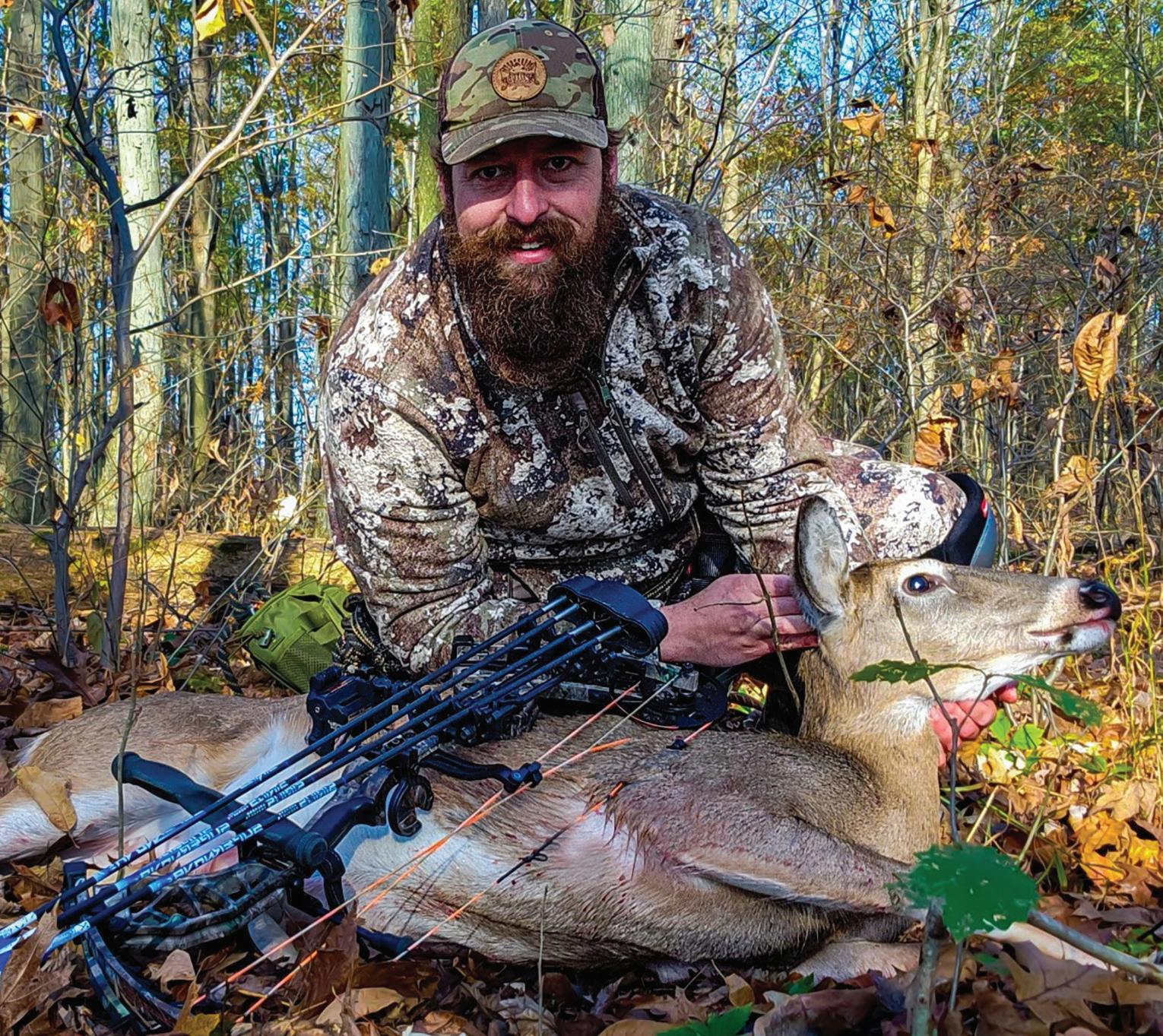
minimizes the risk of injuries. Exercises like squats, deadli s, presses and rows are perfect for building the functional strength needed in the wild. ese workouts simulate the actions of li ing heavy hunting and shing equipment, climbing hills and mountains, or hauling your kayak over land and shallow river areas.
O en overshadowed by cardiovascular and strength training, exibility and mobility are vital for any hunter or angler venturing into the wilderness. ese two abilities are helpful in navigating uneven terrain or casting a line with precision. Regular stretching routines, targeting key areas such as the hamstrings, back, and shoulders, can greatly improve both mobility and exibility. is also promotes be er blood ow,

which is essential during long, static periods of waiting for game or sh (think si ing in a tree stand or blind and boat). By integrating exibility and mobility exercises into your regular training, you ensure a more enjoyable and injury-free experience in the wild.
Balance and coordination are as critical as physical strength or endurance. For hunters, maintaining balance is essential when moving across uneven ground, climbing tree stands, or steadying for a shot. Fishermen, too, require a keen sense of balance, particularly when casting lines from the unstable surface of a boat. Simple practices like standing on one leg or using balance boards can make a signi cant di erence. By honing these skills, you equip yourself not only for success in your outdoor pursuits, but
for safer and more enjoyable adventures in nature’s unpredictable se ing.
Each element mentioned above plays a vital role in hunting and shing success. Honing speci c skills pertinent to hunting and shing, coupled with robust mental preparation, completes the arsenal needed for thriving outdoors. Whether you’re aiming for your next big catch or a trophy hunt, incorporating these exercises into your routine will elevate your experience, ensuring you’re well-equipped for the challenges and joys of the great outdoors.




OVE IT OR HATE IT, PISTOL mounted optics are more mainstream than ever. In fact, it would be absurd for a modern handgun manufacturer to introduce a model without an optic mounting option. I nd pistol dot optics to be a huge advantage to marksmanship. From allowing the user to shoot more precise due to an unobstructed view, to shooting easier at night due to illumination, to shooting faster because you’ll be able to track the dot easier than 2 sets of sights, or defending your life more e ectively since you can focus on a single sight plain. But of course, with the advantages of an electronic optic, there is also potential for failure.
It’s



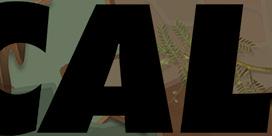


it’s best to train in case it does. Of course, back up iron sights are the primary backup, however if the glass is occluded those are useless.
Next time you are at the range, take a roll of masking tape with you in order to try a few tricks. From roughly 5 yards, setup


 :: by DUSTIN ELLERMANN TF&G Shooting Editor
:: by DUSTIN ELLERMANN TF&G Shooting Editor




our brain and eyes want, we will be closer to the target just by habit.
Next is the “glass method” where we can imagine that we are still able to see through the glass, even though we can’t. God gave us two eyes and it helps tremendously in marksmanship. You should always have both eyes open when you shoot anyway. With the glass method our non-dominate eye should see the target, and the dominate eye sees the occluded optic glass, take a few shots with this method and see if the results are adequate.
e nal “back plate method” is the same that I teach with basic point shooting. Imagine that you can see through the barrel of the pistol, or just look at the backplate of your slide. Superimpose it over the target, re a few rounds, and check the results.
A er testing these three methods see which worked best for you, then try it at 10 and then 15 yards. Hopefully it will give you a sense of security that even if you have a massive failure and can’t co-witness your iron sights that you can still defend yourself and others.
e glass can fog, it can ll with debris, open emi ers do poorly in rain, ba eries can die and electronics break. Instead of being worried about what “could” happen,
a target and tape up your optic so you can only see the frame. Occlude all the glass completely. is will not only simulate an electric failure but even a complete breakage or obstruction. e rst technique to try is the guillotine method - cut the target in half with the top frame of the optic, take a few shots and see where you hit. If it wasn’t in the target area, remove the tape and repeatedly present your handgun from the low ready until you consistently have the dot on target as you complete your presentation. By training our hands to match what

If you want to see this in detail, as well as a more advanced method of shooting on target with the front glass occulted out to 100 yards, check out my “Top Shot Dustin” YouTube channel for the video.
uEmail Dustin Ellermann at ContactUs@fishgame.com



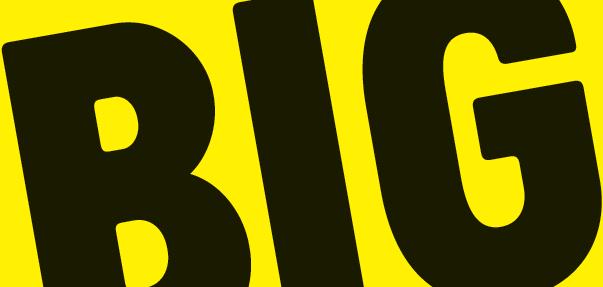

 story by Chester Moore
story by Chester Moore


OND BASS FISHING WITH FLY gear might not be the most conventional approach, but for those who seek excitement and challenges beyond traditional methods, it can be an incredibly rewarding endeavor. In this instructional story, we’ll walk you through the steps to catch big pond bass using y shing gear.
Start with a medium to heavy-weight y rod, typically in the range of 6 to 8 feet, which o ers the necessary backbone to handle larger bass. Pair it with a sturdy reel designed for freshwater applications.
Selecting the appropriate ies is crucial. Pond bass tend to prey on various creatures such as frogs, insects, and small sh. Opt for ies that mimic these natural prey items. Topwater ies like frog imitations or poppers work well when targeting bass near the surface. Something I have learned is to always keep a few nymphs (tiny, feathery insect pa erns) with you.
Keep in mind bass can be ski ish, so approach the water quietly. Keep a low pro le and be mindful of your shadow. Cast your y accurately, close to potential hiding spots such as submerged logs, lily pads, or along shoreline drop-o s.
Bass are well suited for pond life and a delicate fly fishing approach can often catch the big ones.
Cast your y near the target area and let it land gently on the water’s surface. Use a slow, rhythmic strip retrieve to mimic the movements of prey. Be patient and wait for the bass to strike.
When you feel a strike, don’t immediately jerk the rod. Instead, give the bass a moment to take the y properly. en, execute a rm hookset by raising the rod tip.
Scan to Hear Audio Version





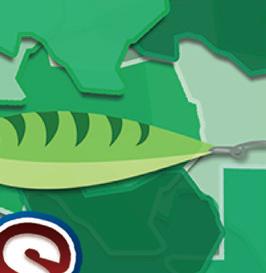











38 TF&G REPORT: NEWS OF THE NATION
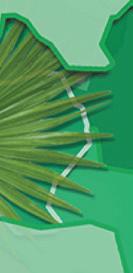
Reported by TF&G Staff
38 FISH & GAME HOTSHOTS
Trophy Photos from TF&G Readers
40 FISH & GAME FORECAST CENTER SALTWATER
Reported by Capt. Eddie Hernandez
Capt. Derek York
Capt. Mark Talasek
Capt. Kim Goulden
Capt. Richard Thompson
Capt. Jake Wheelis
Capt. Gerad Meritt and Capt. Brian Barerra
50 FISH & GAME FORECAST CENTER FRESHWATER
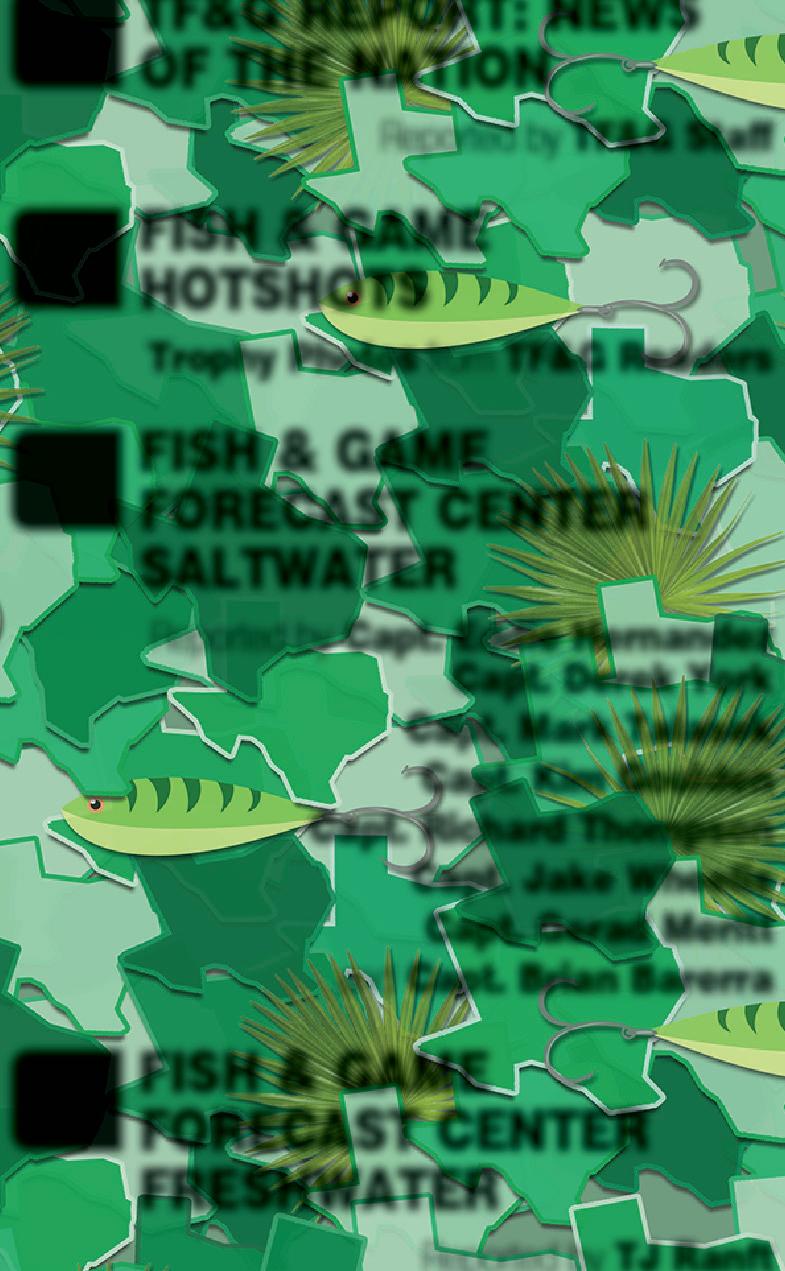
Reported by TJ Ranft and TF&G Staff
60 SPORTSMAN’S DAYBOOK





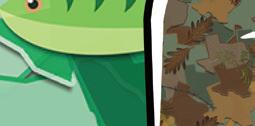





Tides and SoLunar Data


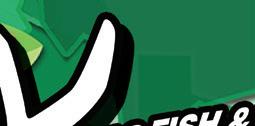

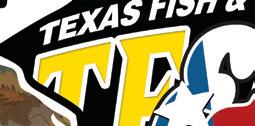





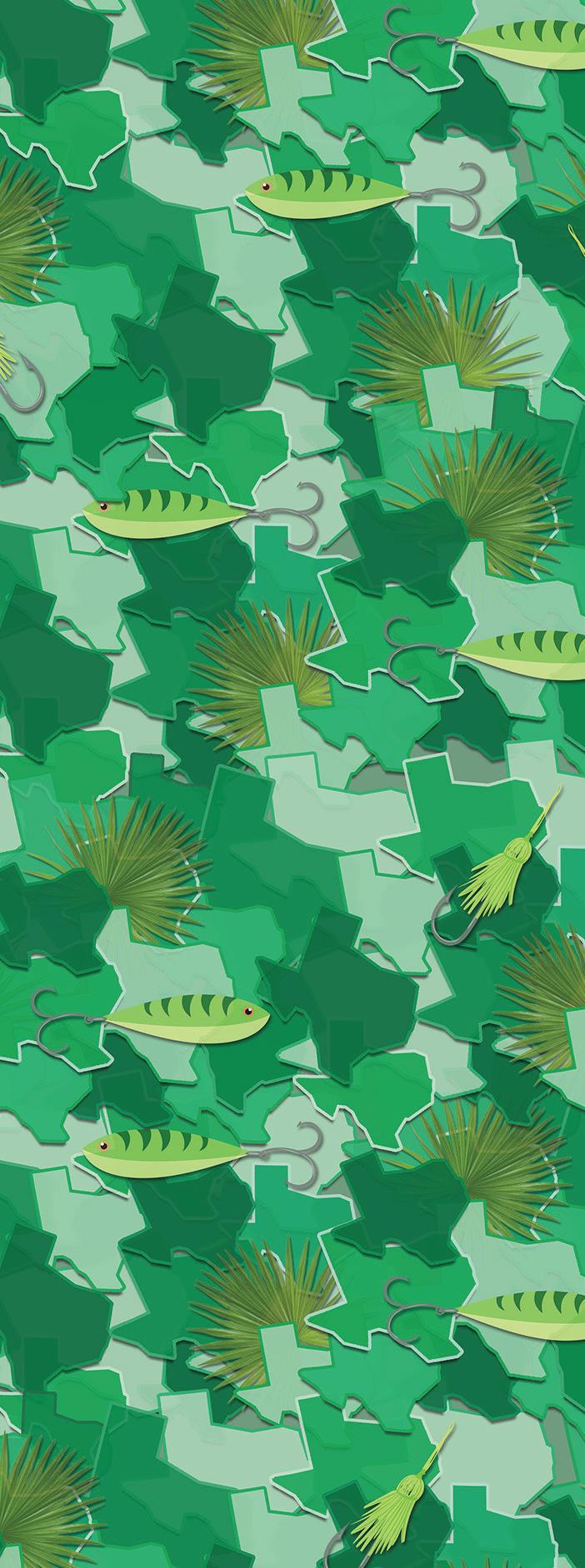
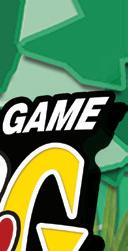

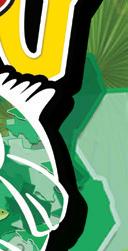




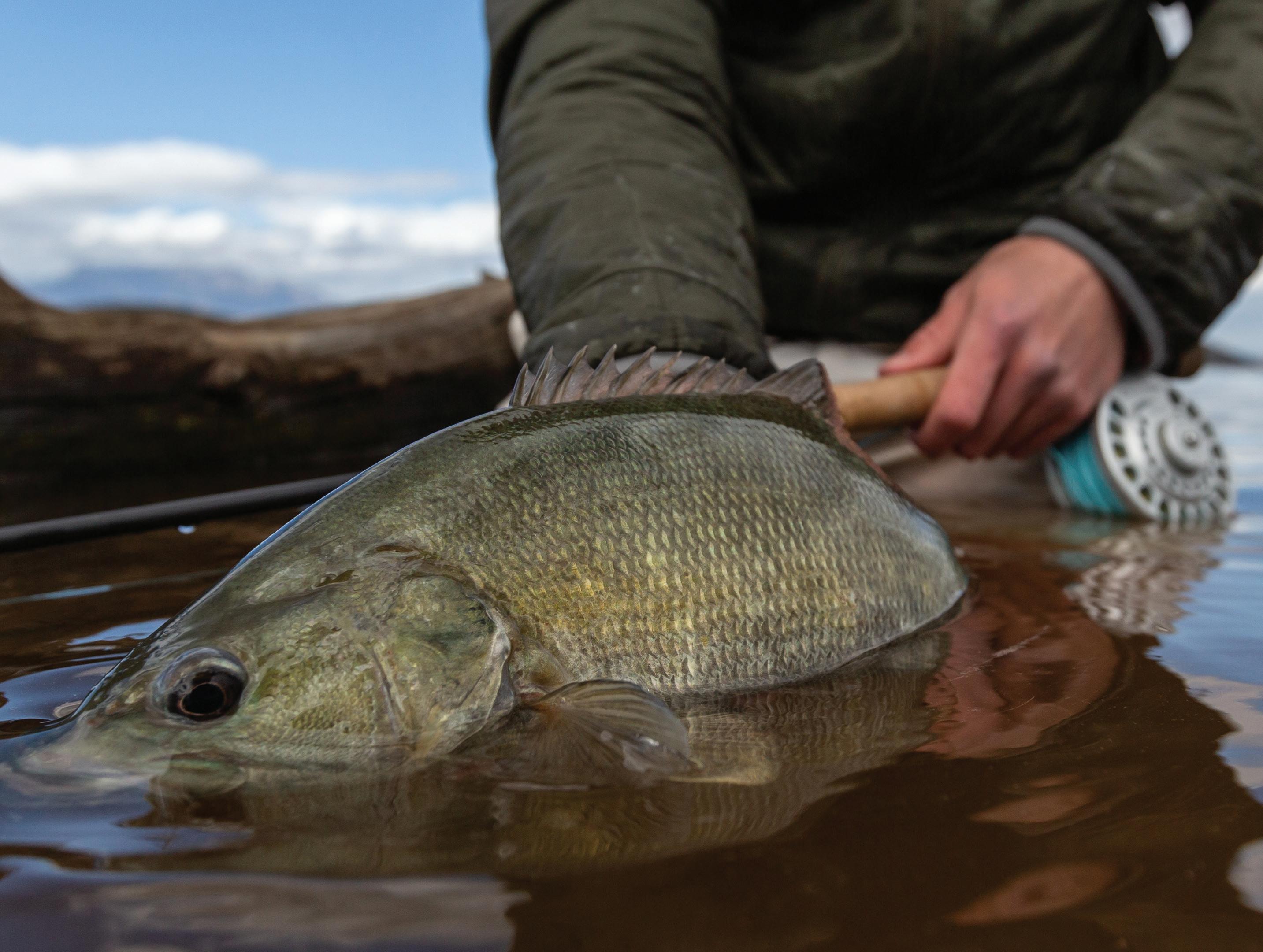
is action will secure the hook into the bass’s mouth. Once you’ve hooked a bass, be prepared for a thrilling ght. Bass are

strong and can put up a signi cant struggle. Keep your rod tip up to prevent the sh from diving into cover. Use the rod’s

exibility to gradually tire the sh out.
As the bass tires, bring it close to the shore or the boat. Use a landing net to safely scoop it out of the water. I always bring a net because with a nine-foot y rod it can be hard to maneuver lipping the sh. A net is a big help.
Pond bass y shing combines the art of y shing with the thrill of catching sizable sh. While it may take some time to master these techniques, the satisfaction of landing big pond bass with y gear is an experience worth pursuing. I love it and usually y sh for pond bass at least twice a week, even if for only an hour or so.
So, grab your y rod, choose the right ies, and head to a secluded pond for an exciting angling adventure like no other.





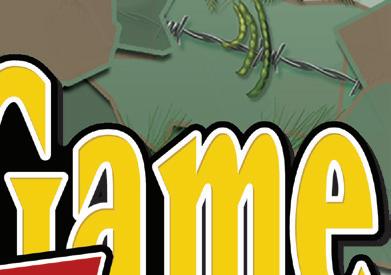





TEXAS PARKS AND WILDLIFE Department (TPWD) will no longer pursue acquisition of the property previously occupied by Fair eld Lake State Park, now owned by FLG Owner, LLC.
“TPWD recognizes the importance of conserving our state’s natural resources and providing recreational opportunities for Texans,” said TPWD Executive Director David Yoskowitz, Ph.D. “However, TPWD must also responsibly manage the state’s scal resources in order to maximize the bene t of our parks for all Texans. e citizens of Texas have always shown strong sup-

access to state parks, and I believe there is a promising future for outdoor recreation in our great state.”
With this decision, TPWD makes clear it does not intend to exercise its power of eminent domain in the future to obtain a portion of FLG Owner’s property, including all water rights. is means that there will be no e orts to establish a state park or any other use on FLG Owner’s property.
“We want to thank the sta and visitors who made Fair eld Lake State Park such a special place for the past half century, as



well as those who have supported the e ort to save the park,” said Texas State Parks Director Rodney Franklin.
THE TEXAS PARKS AND WILDLIFE Department (TPWD) Commission approved proposed rule changes to bag and size limits for spo ed seatrout during its Jan. 25 meeting. Here are the o cial changes.
Spo ed seatrout bag and size limits approved by the commission include: ree sh daily bag limit per angler










A minimum size of 15 inches and a maximum size limit of 20 inches







One oversized trout greater than 30
for expanded inches allowed as part of daily





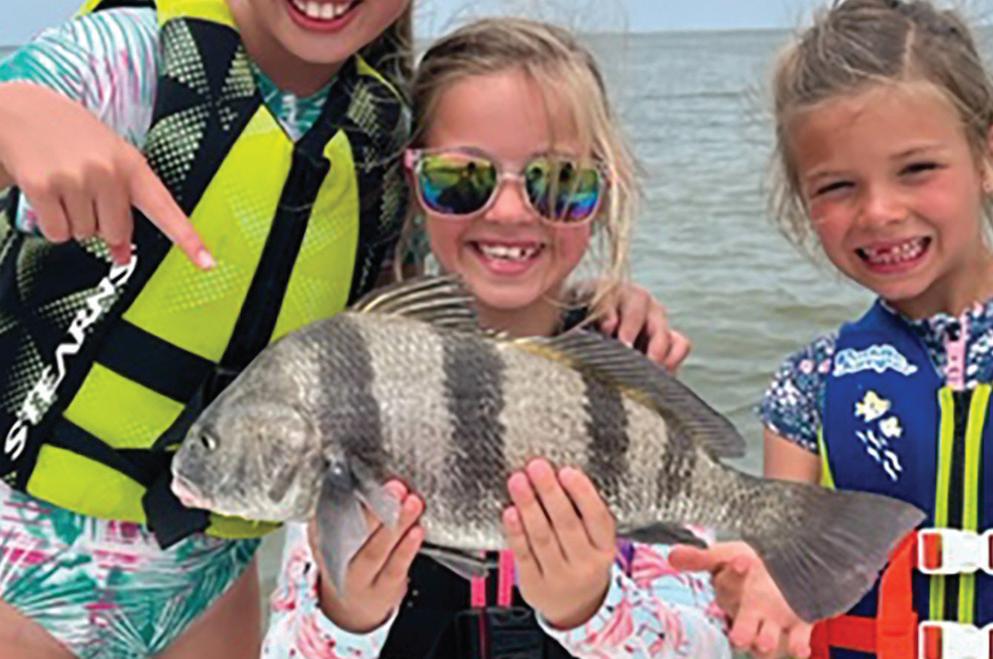

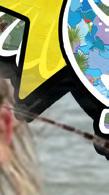

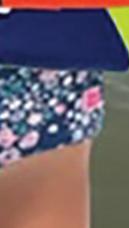
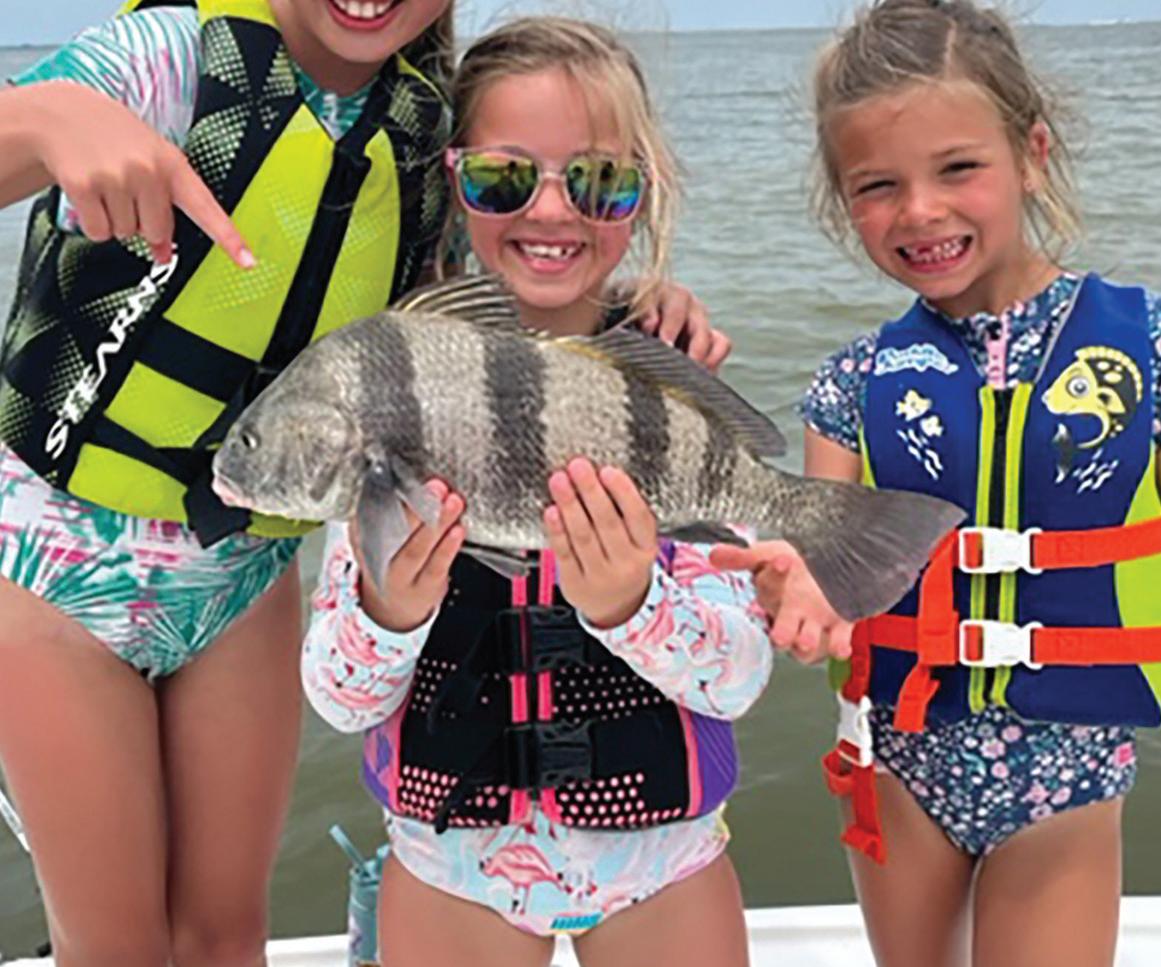











bag limit. Something to keep in mind on this is that TPWD says these rules will go into e ect as soon as possible, with notice on the actual dates to be provided when that timeframe is known.
Most sheries changes take place beginning Sept. 1 a er decisions are made in Austin. Apparently, this one is di erent. We will post the information on our website, www.FishGame.com, as soon as we get it.

Additionally, commissioners granted permission to publish a proposal to create a tag system allowing for the take of oversized trout.
ey de ne this as greater than 30 inches and a tag would include one bonus tag per year, for an associated fee.
“ e commission will pursue future
public input and consider adoption of the proposed tag system in March.”
Texas Fish & Game will have more as we did deeper into this issue.
• • •
TEXAS FISH & GAME EDITOR-INChief Chester Moore has been named the “2023 Outstanding Bighorn Teacher” by the National Bighorn Sheep Center.
e facility in Dubois, WY awarded Moore last weekend at its annual “Bighorn Bash”, held at the Museum of Military Vehicles in Dubois.
Moore has wri en curriculum on wild sheep that has been distributed to thousands of students around the country and has done dozens of presentations on bighorns at schools.
In 2022 he taught a STEM class at Li le Cypress Christian Academy and spent much of that time teaching on wild sheep conservation. He has published numerous articles in Texas Fish & Game on bighorns as well as in the Fish & Game report newsle er and for Wild Sheep, the o cial magazine of e Wild Sheep Foundation.
“ is is one of the biggest honors of my life. Being recognized for work with wild sheep and kids is really inspiring. I’m grateful to the National Bighorn Sheep Center for this honor,” Moore said.
Moore’s favorite wild sheep education work involves kids facing special challenges. You can learn more about that work at www.highercallingwildlife.com.

 Moore named 2023 Outstanding Bighorn Sheep Teacher
Moore named 2023 Outstanding Bighorn Sheep Teacher


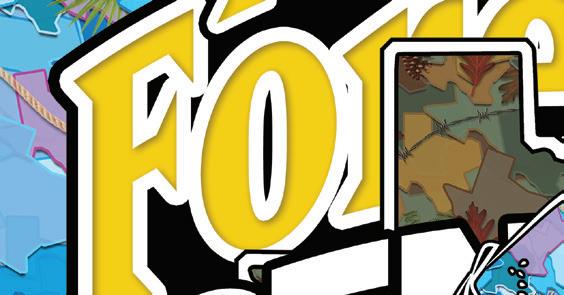




SPRING IS JUST AROUND the corner, and I for one could not be happier. e months of March and April are two of the most exciting months for me, hands down. When it comes to spending time outdoors, it’s hard to beat the season that the spring equinox kick starts and brings a warming trend that will carry us deep into hurricane season along Texas’ vast coastline.
e spring equinox occurs as the sun moves from south to north across the equator, which takes place around March 21, and marks the beginning of spring. Here on Sabine, most days will be pleasant and breezy, so you should be able to enjoy God’s great outdoors comfortably without having to worry too much about o the chart temperatures, hot or cold. We know that Old Man Winter still has a few tricks up his sleeve, however, espe-




cially in March, but there should be plenty of mild, spring-like days for you to take advantage of while pursuing your favorite outdoor pastime. My happiness stems from coastal shing, therefore, you should have li le problem locating me ge ing some saline therapy, probably somewhere on Sabine.
Scan to Hear Audio Version

e Louisiana shoreline, from East Pass to Blue Buck Point, has the potential to explode, especially if we can string a few mild days together. Water temperatures continuing to climb, coupled with big, strong spring tides, should bode well for those lucky enough to be in the right place at the right time. Curl-tail grubs like Gulp Swimming Mullet in green or pink and, of course, mud minnows and nger mullet are very hard to beat. Trout and red sh will also cruise the shoreline as they feed aggressively on shad, mullet and shrimp. ey should be more than happy to accept any o ering you have for them. Topwaters, jerk- baits and so plastics should all get the job done on the protected shoreline with a nice, strong incoming tide.
As always, your odds go way up if you concentrate your e orts on areas where bait is present. Let the spring equinox help you nd your happiness here on Sabine!
CONTACT CAPT. HERNANDEZ:
Email: GHGS.Eddie@gmail.com
Online: GoldenHookGuide.com



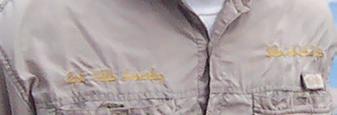

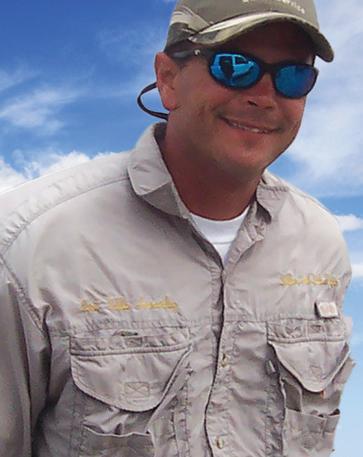
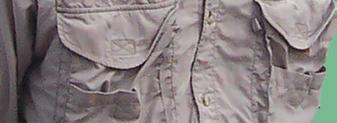
As much as I love catching sh, even that takes a back seat to just being out there in the springtime, breathing the salt air and bonding with nature. To me there is no be er time to do this, because with the spring season comes an abundance of newness, from owers to leaves, to bu eries to bait sh. New life begins to blossom all around us as the early stages of a brand new season gradually warms the earth. e shing can actually be pre y good too.
at is, if those breezy days don’t get too carried away. Some of the nest ounder shing of the year gets cranked o during this time.
Reported by
CAPT. DEREK YORKGROWING UP AS A KID IN Oklahoma, I spent most of my time shing from the bank as I was mostly shing farm ponds and areas on nearby lakes that were easily accessible. Having a boat was always the goal so I could get to where I couldn’t reach from shore. Fast forward to now and
Scan to Hear
Audio Version
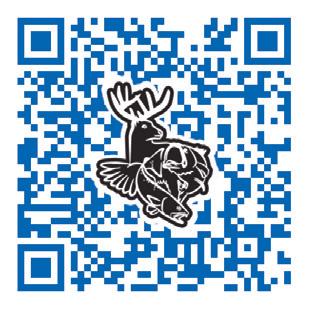
I spend probably 95% of my time shing from my Blue Wave boat. Being on Galveston Bay for the last 20 years has been an incredible adventure, from learning all the places to sh around the bay and now guiding clients on their own new personal adventures with friends and family. We are lucky here in our area to have so much access to public shing with numerous piers, shorelines, the Texas City Dike and all the beach access for those who want to wade or sh from the shore. And with the many boat ramps around the bay, you can usually reach your destination without too long of a run on the boat. My main point with all of this is there are a lot of options for everyone here in our area, so make sure you get out and enjoy what this shery has to o er. Try new spots occasionally, and you may just nd a new “Honey Hole”!
is spring is shaping up to be another great one with all the usual suspects from reds and trout to sheepshead and black drum. e je ies are always one of my favorite places to go when the weather allows me to target all these sh along the rocks. Good current, water clarity and some live shrimp are all keys to success when at the je ies this time of year for redsh, sheepshead and smaller black drum. We usually sh along the rocks with our smaller setups and have a few bigger rods with Blue Crab set out deeper for the Black Drum.
e bay and back lakes around drains are also producing good this time of year as well. Finding areas with moving water and ats with warming waters during the day can produce good numbers of trout and reds, as well as returning ounder from their spawning


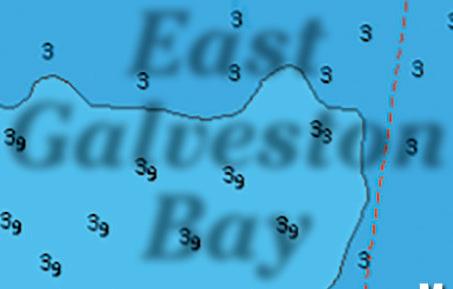

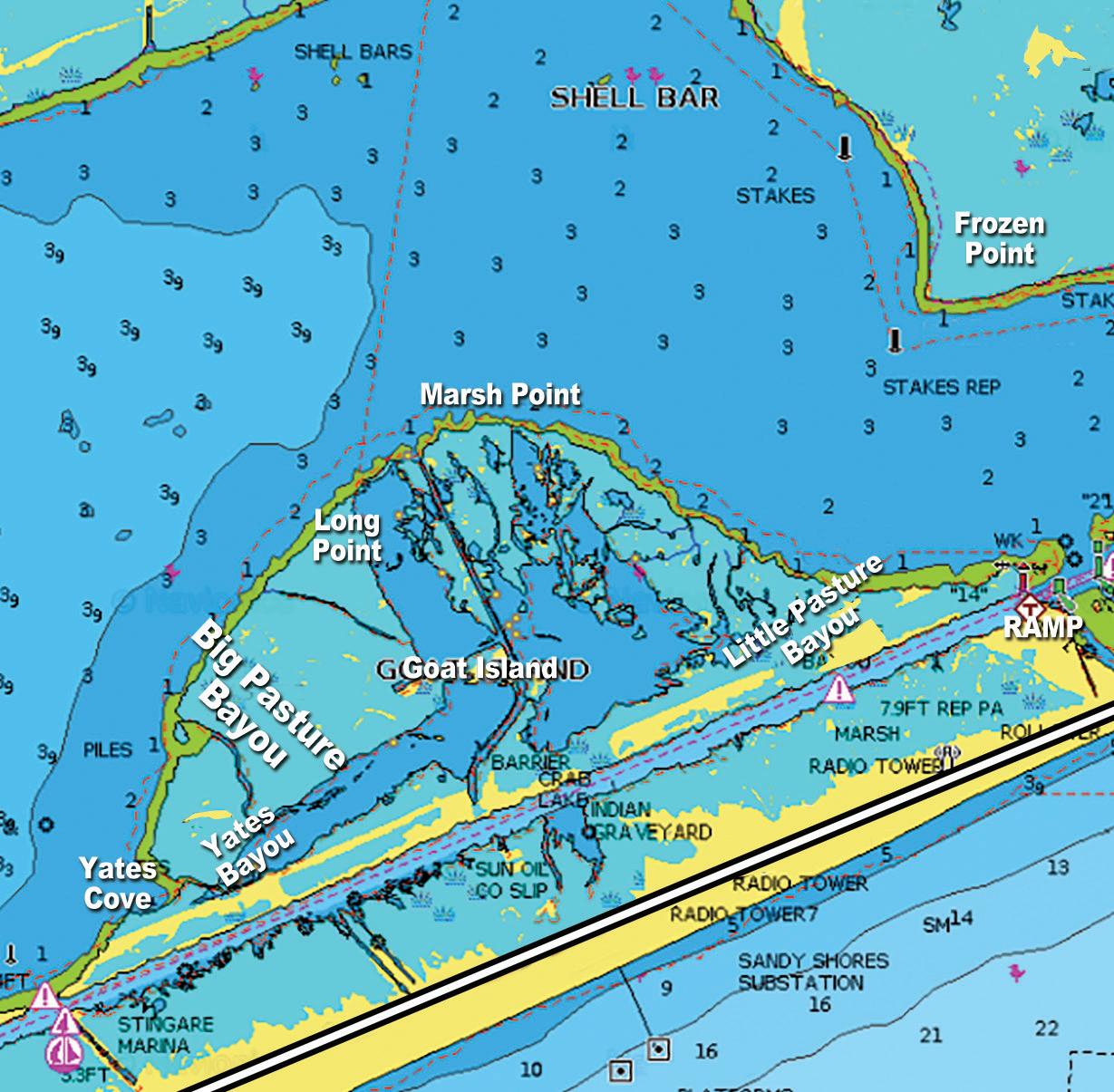






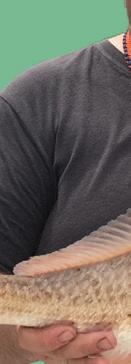




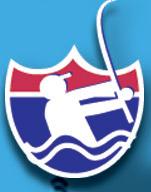
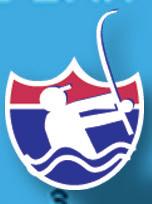

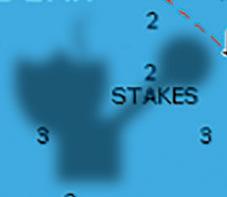
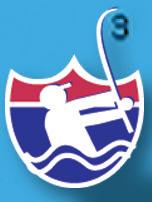

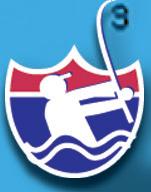


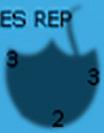
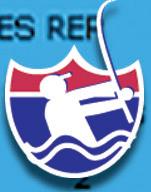









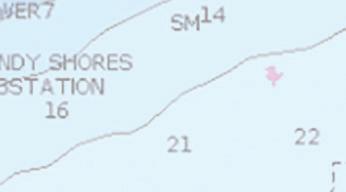

GOAT ISLAND IS LOCATED ON THE EASTERN END OF GALVESTON EAST BAY, along the inland shoreline of Bolivar Peninsula. The Island is divided by Yates Bayou, Big Pasture Bayou and Little Pasture Bayou. The Intracoastal Waterway also runs along its southern shoreline. Prominent features include Yates Cove, Long Point and Marsh Point. Selected hotspots and facilites are highlighted on the table below and the map above.













migration.
With all the increased tra c in town for Spring Break, it can be busy this time of year with all the guided shing trips going on during the weekdays. People are looking to take their families out shing and are always calling at the last minute trying to book trips. One option they end up nding if they are unable to secure a guide is using some of the party boats in Galveston to sh around the je ies. is is an o en overlooked resource for those looking to try something di erent and don’t have access to a boat. So just remember to try something new occasionally. And take a kid shing! Until next time, see you on the water.
CONTACT CAPT. YORK:
Email: SportStalkerFishing@sbcglobal.com
Online: FishGalvestonBayTX.com
IHOPE EVERYONE IS DOING good a er being cooped up indoors for the winter. I would never make a good bear because I hate hibernating during the winter. You can nd me working on my boat or on the water when the weather allows. Seventy degree water temperatures bring a smile to my face each spring.






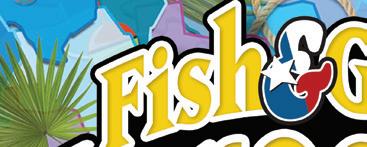


People always ask me what my favorite sh is to eat. Well, my favorite sh is ounder. Not knocking any of the other species at all but ounder is my go to. e texture is white and aky. Not much of a sh smell. No blood lines. I would put trout a close second.
Grilling is my preferred method to cook. Cut o the head, scale and season. Eat skin


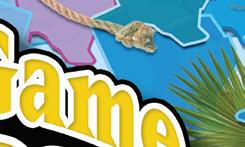




LOCATION: Christmas/Bastrop Bay
HOTSPOT: Arcadia Reef
GPS: N 29 1.734, W 95 12.574 (29.0289, -95.2096)




and all to the bone then pull out the bone and nish the rest. For those wanting to spice it up, llet the top and add a stu ng. Crabmeat or boudin works great. Filleting them and deep fried is also wonderful. Some people like rolling them in cornmeal whole and fried. ere’s not a bad way to cook them.
Catching ounder is the chore.
ey can be nicky. Live shrimp or nger mullet are a staple. Curly tail plastics can also be e ective when wading. When all else fails come with me at night on my airboat.

I have a custom made boat rigged with lights on the front. It illuminates the bay oor at night. e air motor maneuvers us along to where the ounder bed down at night. We stick them with metal gigs. ere’s plenty of marine life to see in the water. It’s interesting for young and old.
Flounder are the only sh that require water pressure to spawn. e females migrate to the gulf each year to spawn in the deeper waters. Most of the males stay inshore unless frigid temperatures move them to deeper waters. We usually stick ounder year round except for the six week closure in November. is is a great experience for those of you who have never been out at night. Spring time is great for ounder returning from the gulf. I have added some new lights on the boat this winter and ready to take you on an adventure. Give me a call, captain Mark Talasek 979 479 1397.
CONTACT CAPT. TALASEK:
Email: MarkTalasek@sbcglobal.com
Online: TalasekGuideService.com

SPECIES: Flounder
BEST BAITS: Soft plastics, live bait
SOURCE: Texas Lakes & Bays Fishing Atlas Fishgame.com/fishgamegear
TIPS: Fish Stanley Wedgetails, jig-tipped shrimp, or finger mullet.
LOCATION: Galveston Bay
HOTSPOT: Bart’s Pass
GPS: N 29 31.412, W 94 49.205 (29.5235 -94.8201)
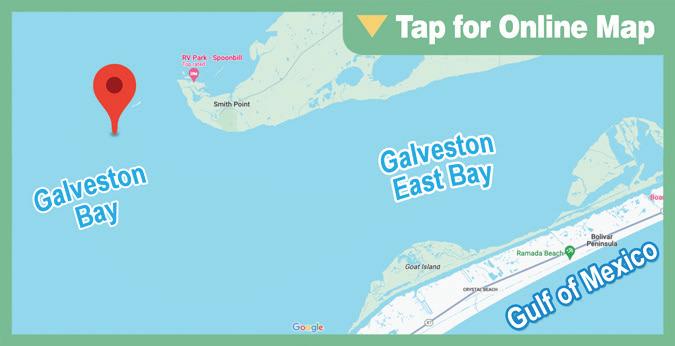
SPECIES: Redfish
BEST BAITS: Shrimp
SOURCE: Texas Lakes & Bays Fishing Atlas Fishgame.com/fishgamegear
TIPS: Best fishing with full moon and moving tides, shrimp; dawn through midday.
LOCATION: Galveston Bay
HOTSPOT: Moses Lake
GPS: N 29 26.808, W 94 55.712 (29.4468 -94.9285)

SPECIES: Flounder
BEST BAITS: Shrimp, mullet
SOURCE: Texas Lakes & Bays Fishing Atlas Fishgame.com/fishgamegear
TIPS: Fish live shrimp or finger mullet, great night
When all else fails, try a night flounder gigging trip,


gigging lights; dawn-am, dusk-night.
LOCATION: Galveston East Bay
HOTSPOT: Fat Rat Pass
GPS: N 29 28.462, W 94 38.673 (29.4744 -94.6446)
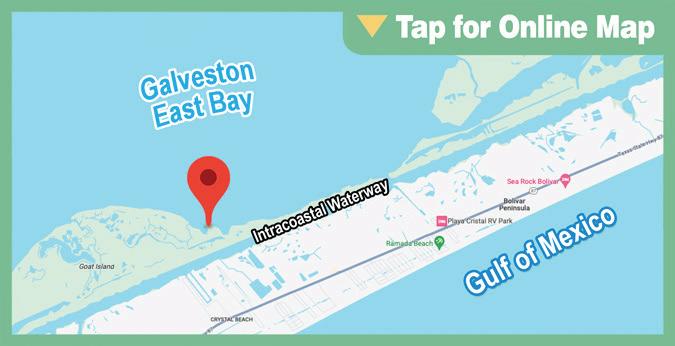
SPECIES: Redfish
BEST BAITS: Live and artificial redfish bait
SOURCE: Texas Lakes & Bays Fishing Atlas Fishgame.com/fishgamegear
TIPS: Drift grassline and shell points along the shore and in the pass; avoid midday, night.
LOCATION: Galveston East Bay
HOTSPOT: Moody’s Shoreline
GPS: N 29 32.861, W 94 38.589 (29.5477 -94.6432)
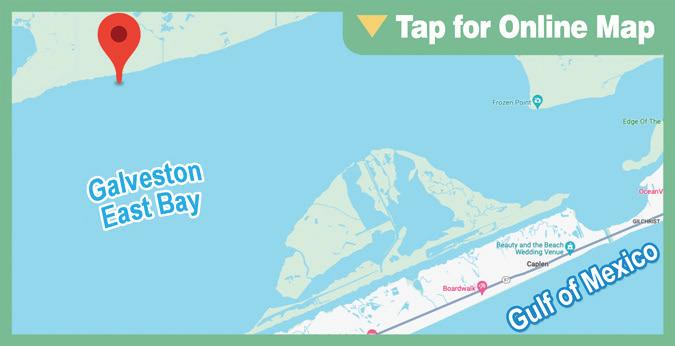
SPECIES: Speckled Trout
BEST BAITS: Topwaters, soft plastics
SOURCE: Texas Lakes & Bays Fishing Atlas Fishgame.com/fishgamegear
TIPS: Work dropoffs and pilings; dawn through morning, dusk.
LOCATION: Galveston Trinity Bay
HOTSPOT: Greens Lake
GPS: N 29 16.248, W 94 59.538 (29.2708 -94.9923)

SPECIES: Speckled Trout
BEST BAITS: Soft Plastics
SOURCE: Capt. Paul Marcaccio 281-788-4041 www.gofishgalveston.com
TIPS: Try to find a pattern: Watch the birds and the slicks. Look for structure--scattered shell, a lot of little islands, a lot of rocks. You have to spend a lot of time to find the stuff.
LOCATION: Galveston Trinity Bay
HOTSPOT: Little Hodges Reef
GPS: N 29 39.261, W 94 43.076 (29.6544 -94.7179)

SPECIES: Redfish
BEST BAITS: Live shrimp
SOURCE: Texas Lakes & Bays Fishing Atlas Fishgame.com/fishgamegear
TIPS: Fish shrimp 2-3 feet under popping cork, anchor, or drift; dawn through dusk.
LOCATION: Galveston West Bay
HOTSPOT: Alligator Point
GPS: N 29 10.289, W 95 6.879 (29.1715 -95.1147)
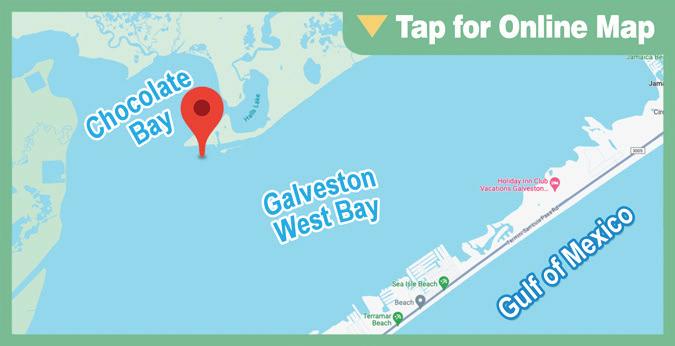
SPECIES: Flounder
BEST BAITS: Live bait
SOURCE: Texas Lakes & Bays Fishing Atlas Fishgame.com/fishgamegear
TIPS: Anchor on the point, fish the bottom with live mud minnows; avoid midday, night.
LOCATION: Galveston West Bay
HOTSPOT: Bird Island Flats
GPS: N 29 6.128, W 95 8.726 (29.1021 -95.1454)


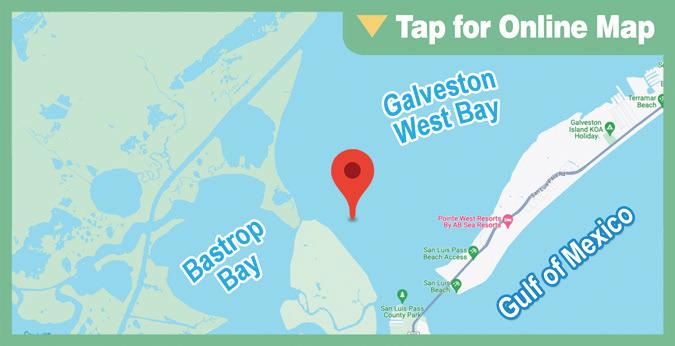
SPECIES: Redfish
BEST BAITS: Spoons, live bait
SOURCE: Texas Lakes & Bays Fishing Atlas Fishgame.com/fishgamegear
TIPS: Work grass holes with weedless gold spoons or live shrimp, croaker, mullet; dawn-morning, dusk.
LOCATION: Galveston West Bay
HOTSPOT: Pirate’s Entrance
GPS: N 29 13.123, W 94 58.302 (29.2187, -94.9717)

SPECIES: Redfish
BEST BAITS: Soft plastics, live bait
SOURCE: Texas Lakes & Bays Fishing Atlas Fishgame.com/fishgamegear
TIPS: Watch for birds, drift while working entire reef, freeline; all day.
LOCATION: Matagorda East Bay
HOTSPOT: 3 Beacon Reef
GPS: N 28 40.767, W 95 53.3779 (28.6795, -95.8896)
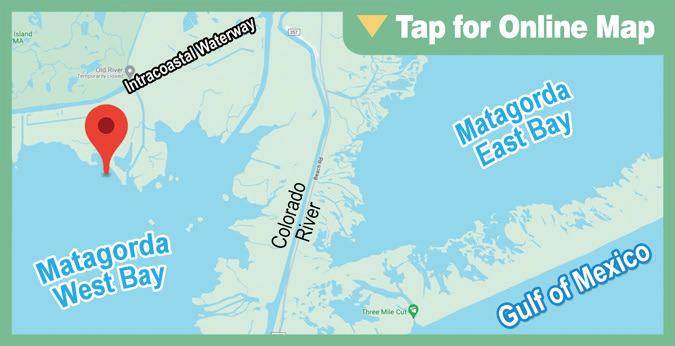
SPECIES: Speckled Trout
BEST BAITS: DOA Soft Plastics
SOURCE: Texas Lakes & Bays Fishing Atlas Fishgame.com/fishgamegear
TIPS: You are normally looking for school sized trout in the middle of the bay.
LOCATION: Matagorda West Bay
HOTSPOT: Blue Hole
GPS: N 28 38.772, W 96 1.042 (28.6462 -96.0174)
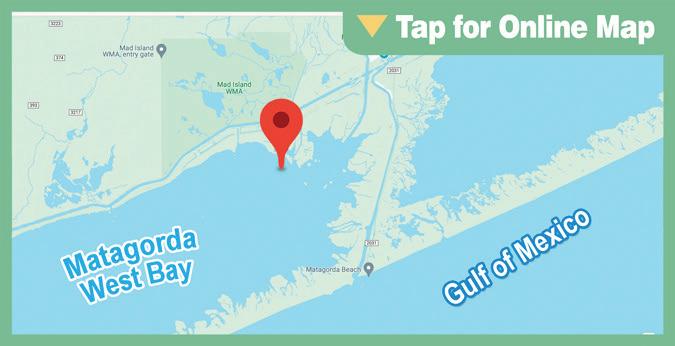
SPECIES: Redfish
BEST BAITS: Live bait, topwaters, spoons
SOURCE: Texas Lakes & Bays Fishing Atlas Fishgame.com/fishgamegear
TIPS: Anchor here and fish topwaters early and late, live bait or spoons in between; dawn-morning, afternoon-dusk.
LOCATION: Matagorda West Bay
HOTSPOT: Big Bayou
GPS: N 28 35.171, W 96 3.157 (28.5862 -96.0526)

SPECIES: Redfish
BEST BAITS: Plastics, spoons
SOURCE: Texas Lakes & Bays Fishing Atlas Fishgame.com/fishgamegear
TIPS: Wade or anchor and fish the bottom; avoid midday.
LOCATION: Matagorda West Bay
HOTSPOT: Oliver Point
GPS: N 28 38.265, W 96 13.92 (28.6378 -96.2320)

SPECIES: Redfish
BEST BAITS: Topwaters, soft plastics
SOURCE: Texas Lakes & Bays Fishing Atlas Fishgame.com/fishgamegear
TIPS: Wade the shoreline grass from Oyster Point to Oyster Lake; avoid midday, night.
LOCATION: Palacios
HOTSPOT: Tres Palacios Bay
GPS: N 28 40.7329, W 96 13.1479 (28.6789 -96.2191)

SPECIES: Speckled Trout
BEST BAITS: DOA Soft Plastics or Berkley Gulp
SOURCE: Texas Lakes & Bays Fishing Atlas Fishgame.com/fishgamegear
TIPS: Start the day wading close to the shoreline and then moving out to deeper water until you find the fish.
LOCATION: Sabine Lake
HOTSPOT: East Pass
GPS: N 29 59.027, W 93 46.562 (29.9838 -93.7760)

SPECIES: Redfish
BEST BAITS: Live bait, plastics
SOURCE: Texas Lakes & Bays Fishing Atlas Fishgame.com/fishgamegear
TIPS: Crab or finger mullet work best. Otherwise, fish Corkies and swimbaits.
LOCATION: Sabine Lake
HOTSPOT: Mid South Levee
GPS: N 29 50.519, W 93 55.234 (29.8420 -93.9206)

SPECIES: Speckled Trout
BEST BAITS: Live bait, soft plastics
SOURCE: Texas Lakes & Bays Fishing Atlas Fishgame.com/fishgamegear
TIPS: Fish live shrimp, shad, or soft plastics under popping cork
LOCATION: Texas City
HOTSPOT: Texas City Dike
GPS: N 29 23.0034, W 94 52.0064 (29.3834 -94.8668)
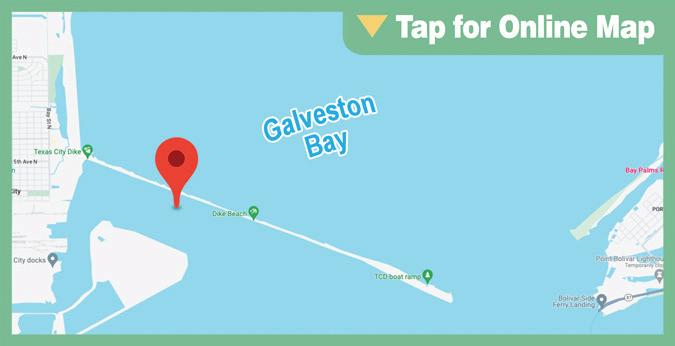
SPECIES: Speckled Trout
BEST BAITS: Soft Plastics, Corkies or Topwaters
SOURCE: Capt. Mike Williams
713-256-9260
www.galvestonfishinguides.com
TIPS: Lure Colors: Something with shades of chartreuse and pearl with tones of gold. Pink is going to be my second choice with tones of gold.


clearly in our sights, shermen along the middle Texas coast are looking forward to warmer weather and opportunities to target many di erent inshore species. Your rod choice plays an important role in your success.
Custom rod builder, Steve Henriksen of Henri Rods, LLC, graciously agreed to answer questions to help you hone in on the right rod. Steve is an avid sherman and spends quality time prowling the waters of the Texas coastal bend for big trout and bruiser red sh.
What factors should be considered when choosing rod length? First and foremost, what type of shing one typically does. For shing from a boat, a longer rod will help make longer casts, 6’9” to 7’. For a wade sherman throwing lures with a casting rod, slightly shorter is the optimal choice, 6’6” to 6’9”; this length rod imparts be er action on lures.
What rod material is used and what are the bene ts? e rod blank a manufacturer uses determines everything from performance to durability to price. Lower modulus graphite rods are lower in price and more durable but lack the qualities an experienced arti cial lure angler demands. Super high modulus graphite rods are higher in price, signi cantly more bri le (susceptible to breakage), lighter and more sensitive, which are the qualities experienced lure anglers want. Midrange modulus graphite rods make up the majority of mass-produced rods.
















answer as there is no uniformity amongst the manufacturers. Some use line weight vs power, some use lure weight vs action and some use a combination. Henricksen tells people when buying a new rod to ask for help. Let them show you several rods with di erent powers and actions.




What makes a rod slow, moderate or fast action and why? A rod’s action is how much the rod bends from the tip when under load. In a fast action rod, the rod bends in the top 1/4. While in a slow action rod, that bend extends to maybe the top 1/2 of the rod. Within the graphite rod universe, nearly all manufacturers produce rods with fast and even extra fast action. While this action
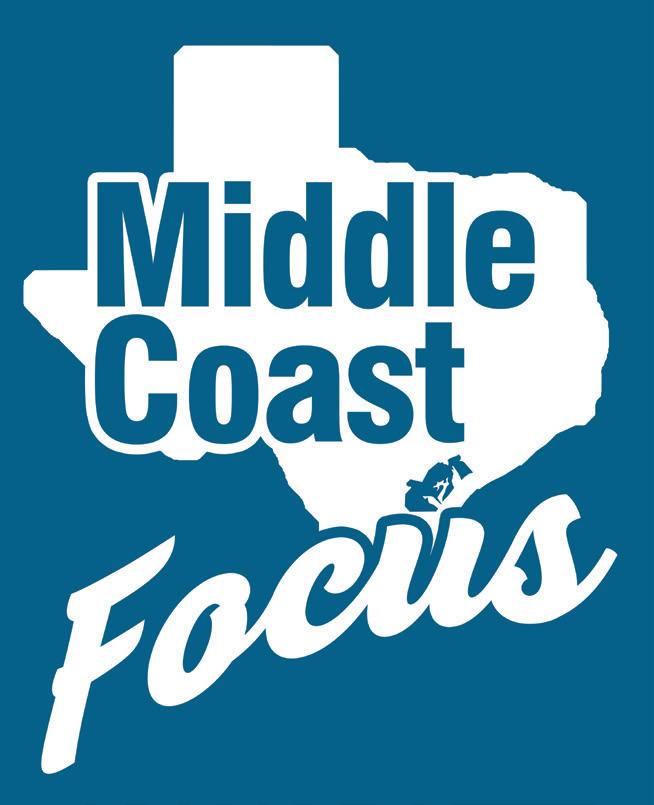
works a light so plastic lure most e ectively, it is not the optimal action for suspending or topwater lures as each twitch moves the lure too fast. A moderate fast action rod would be the most e ective action for that type of lure. So, while rod action does in uence casting distance and accuracy, matching a rod’s action to the type of lure being used is the most important factor.
What is rod power and how does one know which one to pick? Rod power identies the degree of “backbone” a rod has in its lower half. e type of sh you target is the biggest consideration in choosing the right power. For most inshore species, something in the medium to medium light power range works best.
What are rod markings and how are they read? e markings question is hard to
What type of rod guides/eyes do you recommend and why? ere are numerous types of rod guide material. e harsh saltwater conditions that we experience on the Texas coast limit our choice to stainless steel or titanium. A er that, the choice becomes a guide with a ceramic insert or no insert. Recoil eyes have proven to be most durable.
Which rods does Henricksen recommend as a great all-around choice? pause 1secDemand from the single-rod buyer led Henricksen to develop the Henri Rod 6’9” Ultra ML F TS (medium light power, fast action rod). It works most lures almost as e ectively as their specialty models, which allows wade shermen to exit the boat with one rod and several options in the lure box.

For more information, Steve Henriksen can be reached at 713-829-2702 or shenriksen6@gmail.com.
CONTACT CAPT. GOULDEN:
Email: KimGouldenFishing@gmail.com
Online: PortOConnorFishingTrip.com
Reported
by CAPT. RICHARD THOMPSONSPRING HAS SPRUNG, AND we are excited to begin a new shing season. e transition is upon us with a blink of an eye and can catch you unprepared. Here are
some suggestions and tips that we focus on and would like to share with you to prepare you for the change in strategies.
We have more con dence shing shallow ats with a prevailing Southeast wind targeting spoils and shorelines where hard sand and sca ered grass beds exist. e windward shorelines will hold more bait in the o -colored water which will concentrate more game sh in those areas.
e myth surrounding water clarity is overrated. Understanding that o - colored water holds more bait sh and be er opportunities for our game sh to ambush. We have this debate with shermen all the time about water clarity. In our experiences we have caught our best trout in o -colored sandy water with bait activity. It’s all about your con dence that sh are in that area and obviously your lure selection.
Some of the best lures we use during this time are MirrOlure, Li le John “Purple Demon”, Down South Lures, Super Model, “Red Shad”, Coastal Brew Lures, 6” Dart “Plum Punch.” I read in an article a long time ago that sh care far less about water clarity than shermen and thought wow, that makes a lot of sense. So, moving away from the mullet imitation arti cials and throwing in more so plastics is the recipe for our success.
Scan to Hear Audio Version

When game planning shing trips during this time, be mindful of the Spring pa ern being interrupted by late seasonal fronts which drops the water temperatures and pushes tides out for a few days. Adjusting and being exible to the changes and conditions is key. Fishing can be di cult and frustrating if you are shing in the same areas prior to the front. ese sh have more than likely dropped o the shallow ats into deeper water. We prefer wade shing as one of the most e ective methods of





THE UPPER LAGUNA MADRE AT FLOUR BLUFF OFFERS A WIDE VARIETY OF angling opportunities along Mustang and North Padre Islands. Selected HOTSPOTS are shown in the table below, and on the map.
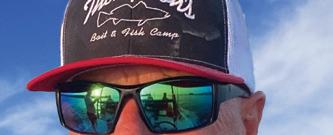
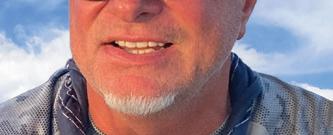



catching trout but when conditions arise with late season fronts don’t rule out dri shing as the sh have dropped o the shallow ats and staging in that 4-5 depth of water waiting for tides and water temperatures to come back up to the shallow ats.
As the Springtime pa erns stabilize with fewer fronts and more southeast prevailing winds, water temps hit that magic number of 70° and typically make spring months hot and heavy for catching speckled trout.
As you are planning your Spring and Summer shing trips, we are excited to announce that our new Laguna Madre Lodge is up and running and would love to help you book an all-inclusive shing experience with us!
CONTACT CAPT. THOMPSON:
Email: RandKCoastalOutfitters@gmail.com
Online: RandKCoastalOutfitters.com
FIRST AND FOREMOST, LET’S talk about this unreal winter we are having - it has been nothing short of amazing! My clients and I have had days with multiple trophy sh coming to hand. We’ve been throwing lots of custom Corkeys – e Texas Turnip is the perfect bait for lighter colored water and bright days. On darker days and in darker water, we’ve had








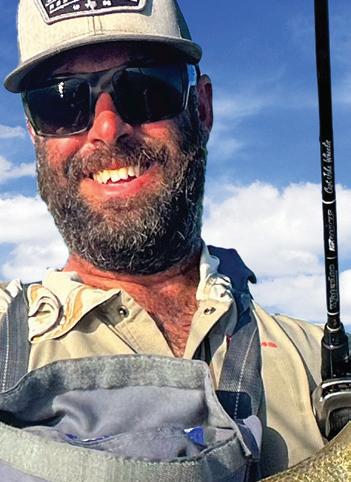







my personal favorite – this is prime for topwaters!




unbelievable days using red shad in multiple baits. ere’s a new bait on the market that we have had remarkable success with – the 6” Dart from Coastal Brew Bait Company. Look ‘em up, check ‘em out. It’s an awesome bait, has a lot of action, and will cast a country mile!
Alright! Let’s talk about what my boat is going to be looking for over the next couple of months and the strategies we are going to employ to catch a sh of a life time. First of all, the rst day of spring is March 19 this year. With that being said, our tackle bags and pouches will have a lot going on. We all know how the weather is in South Texas - if you don’t like it, wait ten minutes! I love to throw a top water in March and April. Of course, it’s not an end all be all as we will still be ge ing quite a few fronts. Colder water can cause the sh to be very lethargic and in turn make them less likely to pursue a bait, calling for a very short strike zone. In this case, we will keep rolling with our large paddle tails and Corkeys. I love the 5” Hogie Super Shad worked multiple ways. You will nd what a sh is eating with di erent cadences and di erent speeds.
For the rst part of March, we will key in on areas that have deep water adjacent to grass ats with an abundance of bait, like the numerous spoils in the upper lagoon and the holes that are in Corpus Christi proper (if you like to wade in). Another area that I love in late winter and all of spring is Yarborough Pass - with extensive ats and deep water all around the edges, it makes for some unreal shing this time of year. As for later in March and into April, sh start transitioning from a larger bait like mullet and menhaden to a shrimp and n sh diet. I recommend us shermen transition with them. Moving away from using big paddle tails/suspending baits, and instead throwing smaller baits like the Lil John and the smaller dart from Coastal Brew. Can’t forget
Focusing on wide open grass ats in all ranges of water depth is the way to go. King Ranch shoreline is killer this time of year!

CONTACT CAPT. WHEELIS:
Email: Wheelis85@gmail.com
Phone: (361) 575-9056
LOCATION: Aransas Bay
HOTSPOT: Mack Reef
GPS: N 28 5.2279, W 96 58.6309 (28.0871 -96.9772)
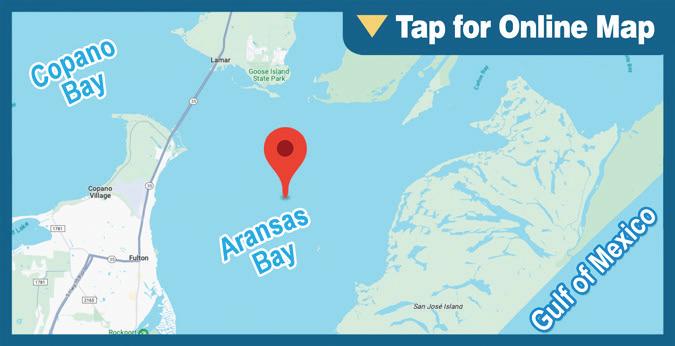
SPECIES: Speckled Trout
BEST BAITS: Soft Plastics with a 1/16 oz jig head
SOURCE: Capt. Billie Kocian 361-688-8859
www.sportfishingtexas.com
TIPS: The trout should be working over the shell reefs in the bay. Color choice is determined by water quality.
LOCATION: Copano Bay
HOTSPOT: Copano Reef
GPS: N 28 6.0117, W 97 6.0067 (28.1002 -97.1001)
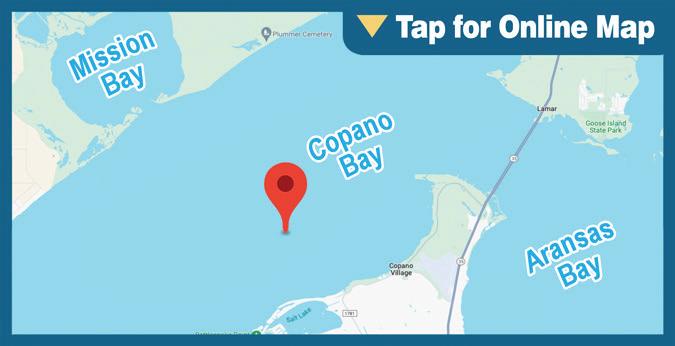
SPECIES: Speckled Trout
BEST BAITS: Cut menhaden and cut perch head, dead shrimp
SOURCE: Texas Lakes & Bays Fishing Atlas Fishgame.com/fishgamegear
TIPS: With the cut perch head, you have a good
chance of picking up one or two nice size trout, just casting it along the bank.
LOCATION: Corpus Christi Bay
HOTSPOT: Ingleside Point
GPS: N 27 50.0869, W 97 14.4799 (27.8348 -97.2413)

SPECIES: Redfish
BEST BAITS: Cut and live mullet
SOURCE: Texas Lakes & Bays Fishing Atlas Fishgame.com/fishgamegear
TIPS: The redfish should be on the flats unless there is a horrible freeze… then fish the sand pot holes.
LOCATION: Mesquite Bay
HOTSPOT: Cedar Bayou
GPS: N 28 06.006, W 96 50.224 (28.100106, -96.837062)
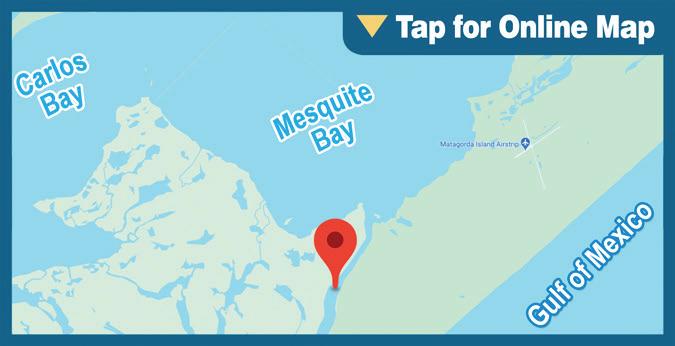
SPECIES: Redfish and Speckled Trout
BEST BAITS: Cut menhaden and cut perch head, dead shrimp
SOURCE: Texas Lakes & Bays Fishing Atlas Fishgame.com/fishgamegear
TIPS: As the water warms, start migrating a little more south toward Copano Bay or Estes Flats.
LOCATION: Nueces Bay
HOTSPOT: Back end of the bay
GPS: N 27 51.0348, W 97 25.9662 (27.8506 -97.4328)
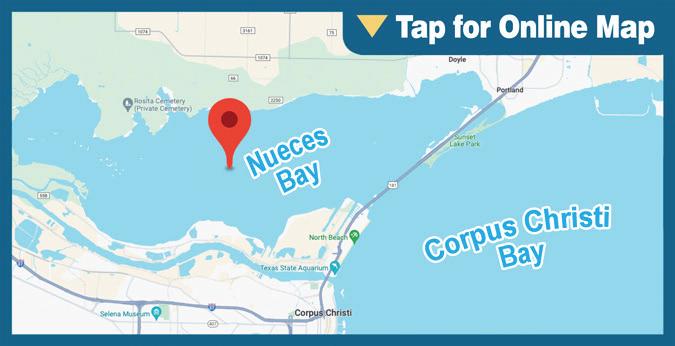
SPECIES: Speckled trout
BEST BAITS: Flapp’n Shad
SOURCE: Texas Lakes & Bays Fishing Atlas Fishgame.com/fishgamegear
TIPS: When you first pull in, look for bait action. One or two mullet jumping can mean big trout are near.














SPECIES: Speckled Trout
BEST BAITS: DOA Soft Plastics




LOCATION: Port Aransas
HOTSPOT: Mud Island Shoreline
GPS: N 27 56.013, W 97 1.009 (27.9336 -97.0168)
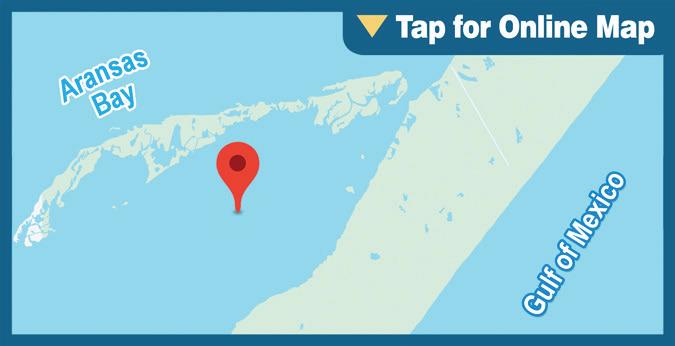
SPECIES: Speckled Trout
BEST BAITS: Cut menhaden and cut perch head, dead shrimp
SOURCE: Texas Lakes & Bays Fishing Atlas Fishgame.com/fishgamegear
TIPS: Fish potholes if you can find them. Shorelines are always a good bet with cut menhaden and perch.
LOCATION: Port Aransas
HOTSPOT: Upper Estes Flats
GPS: N 27 57.0009, W 97 5.0055 (27.9500 -97.0834)

SPECIES: Black Drum
BEST BAITS: Cut menhaden and cut perch head, dead shrimp
SOURCE: Texas Lakes & Bays Fishing Atlas Fishgame.com/fishgamegear
TIPS: Cast close to the reefs, where the water is breaking, where the wave crashes over the reef.
LOCATION: Port Lavaca
HOTSPOT: Lavaca Reefs
GPS: N 28 36.274, W 96 36.681 (28.6046 -96.6114)
SOURCE: Texas Lakes & Bays Fishing Atlas Fishgame.com/fishgamegear
TIPS: Try the small DOA shrimp tail, three inches, in pearl/gold flaked.
LOCATION: Rockport
HOTSPOT: Bay Oil Wells and Pads
GPS: N 28 2.742, W 96 57.8339 (28.0457 -96.9639)

SPECIES: Speckled Trout
BEST BAITS: Corkies or Soft Plastics
SOURCE: Texas Lakes & Bays Fishing Atlas Fishgame.com/fishgamegear
TIPS: A Berkley Gulp in a pearl color also works great in the clearer water.
LOCATION: Upper Laguna Madre
HOTSPOT: King Ranch Shoreline
GPS: N 27 28.993, W 97 20.864 (27.483221, -97.347735)

SPECIES: Speckled Trout
BEST BAITS: Corky Fat Boys
SOURCE: Texas Lakes & Bays Fishing Atlas Fishgame.com/fishgamegear
TIPS: Wading 3 - 3 1/2 feet between sand and mud, waist to ankle deep water. After a cold front they (fish push up on a shoreline in shallow water.
IFEEL IT IS IMPORTANT TO DIScuss the di erent areas that make up the waters of Ba n Bay and how to successfully sh them. Many people do not realize that Ba n Bay is comprised of three di erent “areas” of water, Alazan Bay, Cayo del Grullo, and the Laguna Salada.
ese sections all encompass Ba n Bay and can be shed di erently.
I would like to start with the Cayo del Grullo, which is where the main public boat ramp is located. While you can still sh the rocks, this portion of the bay is shallower and has less substantial rock structures.





















ese rock structures can produce good sh on the right day and allow anglers to make quick stops to check when moving locations. e grass lines, drop o s and high blu s in this area also hold sh and make for successful wading and dri ing. Moving sandbars and back lakes are present as well.

e Laguna Salada has a mixture of sand and mud on the East shoreline. e mud shows itself as you get into deeper water and move closer to the creek known properly as Los Omos Creek and Site 55 to locals.
e other shoreline is mostly private piers and only has a few spots to sh when you consider boater safety, private property, and of course angler etique e. e Salada does have deeper rock piles that can hold good sh, but keep in mind when navigating as tides change. ese rocks can be a danger even for the experienced angler when not paying a ention.
Live bait selections in these areas tend to stay the same this time of year. What I mean by this is when using live bait in the back
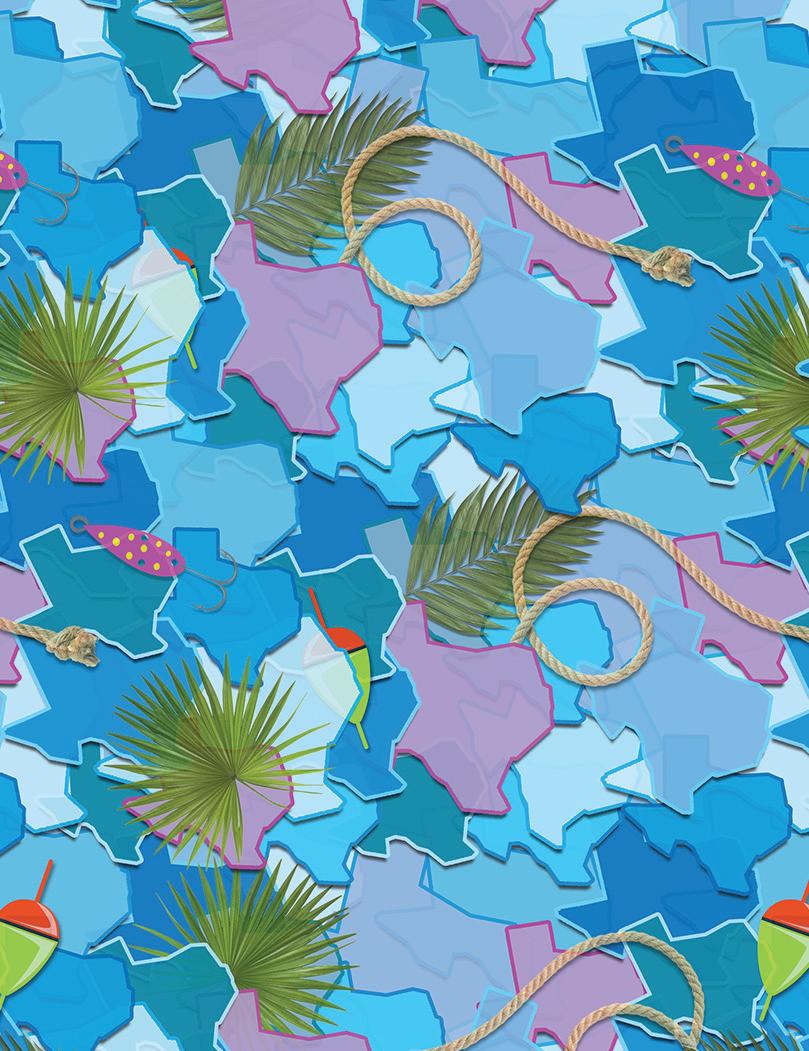



of the Ba n Bay complex, we choose our bait based on the time of year. For spring, late fall and winter, we use live shrimp. In addition, we may also use croaker in late spring and fall based on the trout bite and if

it is available. Lure selection resorts back to con dence and water clarity.
Remember there are several parts to Ba n Bay and this unique bay system. Areas of this amazing bay are also deemed a Texas Parks and Wildlife estuary. In the next issue, I will talk with our readers about the way Alazan Bay loops into this shery and how Ba n Bay comes together from all sides.
Scan to Hear Audio Version
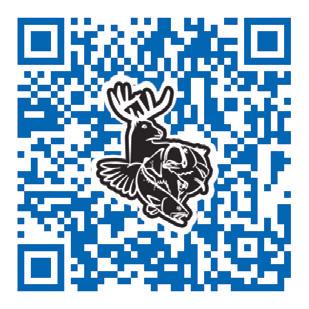
CONTACT CAPT. MERRITT:
Email: GeradMerritt@gmail.com
Online: ParadiseGuideServices.com





ats shing, and sheepshead galore. at’s what rst comes to mind for me while ge ing ready to hit the water during the months of March and April. March is great for not only the trophy chaser, but the family sherman as well. Chasing trophy trout in shallow water using topwater lures has to be on the list of one of my favorite things to do and this is the time to do it!



Huge speckled trout can be found cruising spoil islands, shallow grass with deep potholes and channel edges. I prefer a D.O.A. pt7 weedless topwater, but your favorite one with some single hooks should get the job done.
As I spoke of earlier, not only is March and most of April great for the trophy sherman but it’s sheepshead run is what the family sherman needs in his/her life! With the spawn in full swing, you can expect boats with 4,5 or even more passengers to be quadrupling up on big sheeps all day on deep structure from 8-20 feet deep such as je y inlets, deep docks or bridges. A fresh live or dead shrimp on a 1/4 or 3/8 ounce jighead right of the edge of the boat should be enough to get the job done. I will occasionally have to switch to heavier jigs during the big moons with tidal movement. e best part is “no experience required!” Everyone gets in on the action and you tend to get back to the dock before it even warms
up out.
Scan to Hear Audio Version

When April comes around you can nd me either on the sandy grass ats or in the turkey blind! April is what I like to call a “transition” month where the sh aren’t in their summertime pa erns yet, but they aren’t fully still in their cold water winter patterns either. Which means you can nd sh in lots of di erent places. I spent most of my time in the shallow murky water chasing sh on topwaters and light jigs with my favorite so plastic a ached. If I’m not ge ing bit there, I’ll slide over to some deeper potholes or grass lines to look for aggressive sh darting in and out of those ambush points.
CONTACT CAPT. BARRERA:
Email: CaptBrianBFishing@gmail.com
Online: InshoreFishingSouthPadre.com
LOCATION: Arroyo Colorado
HOTSPOT: East of Green Island
GPS: N 26 23.5379, W 97 19.465 (26.3923, -97.3244)

SPECIES: Speckled Trout and Redfish
BEST BAITS: 3 inch Berkley Gulp under a popping cork
SOURCE: Texas Lakes & Bays Fishing Atlas Fishgame.com/fishgamegear
TIPS: If the water is too flat, you don’t want to spook the fish. So, toss the cork out and barely pop it.
LOCATION: Baffin Bay
HOTSPOT: Badlands
GPS: N 27 17.152, W 97 25.053 (27.2859, -97.4176)

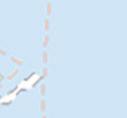





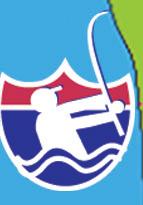
THE MIDDLE GROUND IS A PRODUCTIVE FISHING AREA BETWEEN BAFFIN BAY AND Port Mansfield. This section of the Laguna Madre is marked by shallow depths and many guts. The Intracoastal Waterway runs through the Laguna here. Selected HOTSPOTS are shown in the table below, and on the map.




SPECIES: Speckled trout
BEST BAITS: Sand Shad with a 1/8 oz. lead head
SOURCE: Capt. Tommy Countz
281-450-4037
www.matagordafishing.com
TIPS: When there is a north wind, fish the Badlands. Key on bait and work the lure a little bit slower.
LOCATION: Baffin Bay
HOTSPOT: East Cleburne Rocks
GPS: N 27 16.198, W 97 30.5069 (27.2700, -97.5085)













281-450-4037
www.matagordafishing.com
TIPS: The pink Fat Boy has always been a good producer for big fish. Work the bait really slow. You are fishing in about 3 feet of water.
LOCATION: Baffin Bay
HOTSPOT: Pensacal Point Rocks




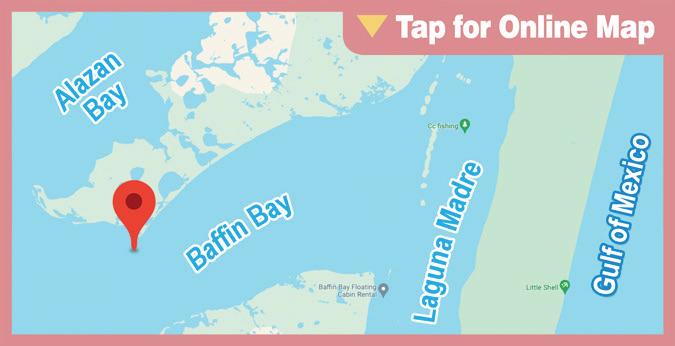
SPECIES: Speckled trout
BEST BAITS: Corky Fat Boy
SOURCE: Capt. Tommy Countz


GPS: N 27 16.153, W 97 25.387 (27.2692, -97.4231)
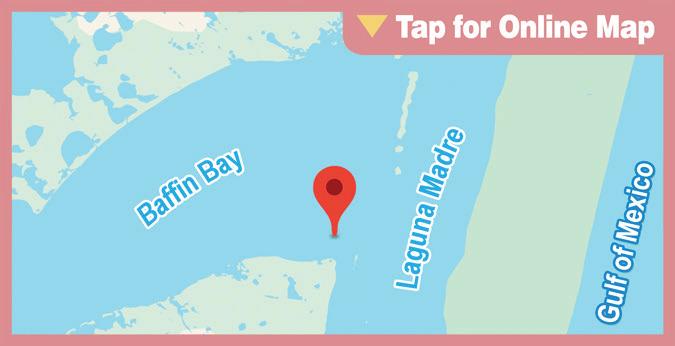
SPECIES: Speckled Trout and Redfish
BEST BAITS: Live Shrimp or Croaker
SOURCE: Texas Lakes & Bays Fishing Atlas Fishgame.com/fishgamegear
TIPS: If you don’t know how to fish a topwater, switch over to a popping cork with live shrimp or croaker, depending on what’s available.
LOCATION: Lower Laguna Madre
HOTSPOT: Fishing Shacks
GPS: N 26 26.4756, W 97 20.591 (26.4413, -97.3432)

SPECIES: Black Drum
BEST BAITS: Live Shrimp, Fresh Shrimp.
SOURCE: Texas Lakes & Bays Fishing Atlas Fishgame.com/fishgamegear
TIPS: Anchor up near a set of pilings marks where a shack used to be, or where one may still be standing, and toss a live shrimp or fresh shrimp out on a fish finder or split-shot rig towards the edge of the ICW. If the current is pulling hard, you may want to go with the heavier weight of the former.
LOCATION: Lower Laguna Madre
HOTSPOT: Horse Island
GPS: N 26 20.3539, W 97 20.2489 (26.3392, -97.3375)

SPECIES: Speckled Trout and Redfish
BEST BAITS: 3 inch Berkley Gulp under a popping cork
SOURCE: Texas Lakes & Bays Fishing Atlas Fishgame.com/fishgamegear
TIPS: Use a three inch Berkley Gulp in different colors, along with a 1/16 oz. jig head under a popping cork, or without the popping cork. The 1/16 oz. jig head keeps the bait in the water column longer.
LOCATION: Lower Laguna Madre
HOTSPOT: Marker 63
GPS: N 26 14.343, W 97 16.482 (26.2391, -97.2747)
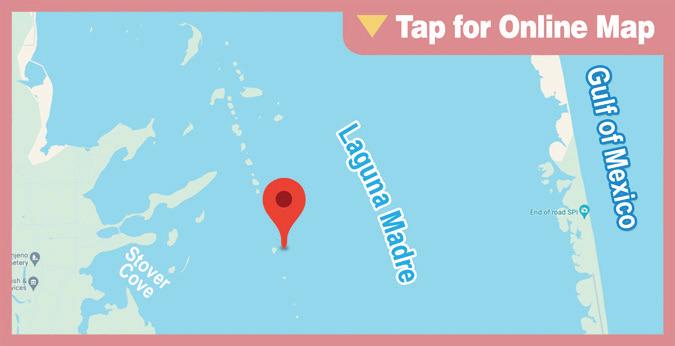
SPECIES: Speckled Trout
BEST BAITS: Live bait, Gulp Shrimp, twitchbaits.
SOURCE: Texas Lakes & Bays Fishing Atlas Fishgame.com/fishgamegear
TIPS: Fish the flats just west of the Marker. Trout and redfish hang out around the potholes in 3- to 4-feet of water. The traditional live bait and soft plastics work well.
LOCATION: Lower Laguna Madre
HOTSPOT: Port Isabel Turning Basin
GPS: N 26 3.761, W 97 9.482 (26.0627, -97.1580)

SPECIES: Speckled Trout
BEST BAITS: Live shrimp, Gulp! Shrimp in New Penny, Rootbeer/Glitter, Kelly Wigglers in Plum/ Chartreuse, Black/Chart.
SOURCE: Texas Lakes & Bays Fishing Atlas













LOCATION: Middle Ground
HOTSPOT: Ron’s Rock
GPS: N 27 1.927, W 97 26.864 (27.0321, -97.4477)




TIPS: Fish the edges of the drop-off early when trout are sulking down deep. If the sun comes out and begins to warm the shallows, tie on a Mauler rig and fish live shrimp or plastic tails round pilings and rocks.
LOCATION: Lower Laguna Madre
HOTSPOT: South Bay
GPS: N 26 2.961, W 97 11.031 (26.0494, -97.1839)
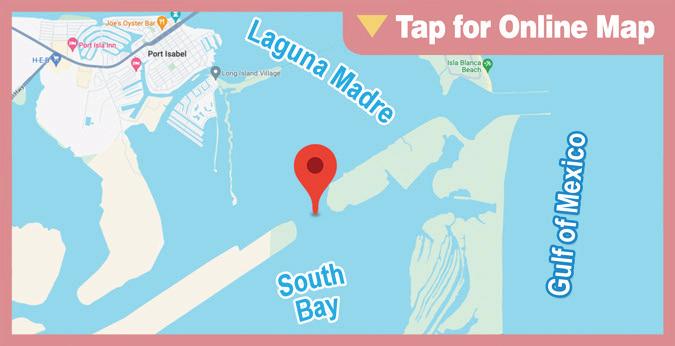
SPECIES: Black Drum
BEST BAITS: Live Shrimp, fresh shrimp, Gulp! Shrimp in New penny, Root Beer/Glitter.
SOURCE: Texas Lakes & Bays Fishing Atlas Fishgame.com/fishgamegear
TIPS: Fish the channel edges on the bottom to intercept feeding drum. Fresh or live shrimp are bets. Use stout tackle; there are some big drum out there.
LOCATION: Lower Laguna Madre
HOTSPOT: Three Islands
GPS: N 26 16.621, W 97 17.7319 (26.2770, -97.2955)
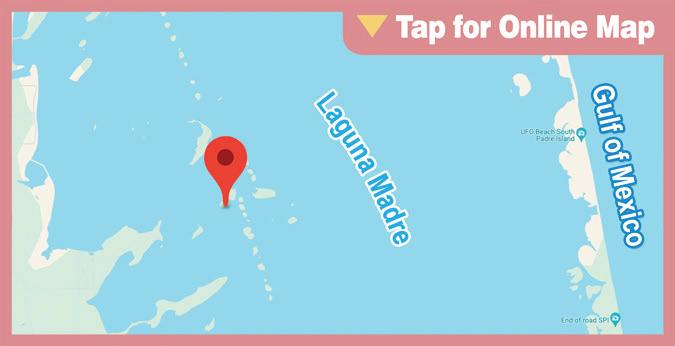
SPECIES: Speckled Trout and Redfish
BEST BAITS: Soft plastics with a 1/8 oz jig head
SOURCE: Capt. Joel Ramos
956-626-5143
TIPS: Use the 1/8 oz. jig head so that you can keep the bait in the water column; it doesn’t sink as fast.
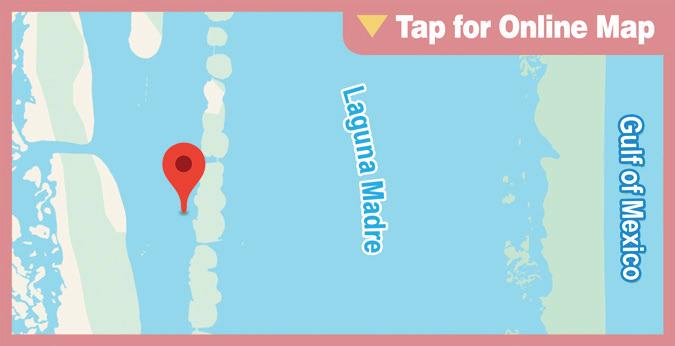
SPECIES: Speckled Trout
BEST BAITS: Shrimp
SOURCE: Texas Lakes & Bays Fishing Atlas Fishgame.com/fishgamegear
TIPS: Fish live shrimp with a slide weight, swivel and leader.
LOCATION: Port Mansfield
HOTSPOT: Glady’s Hole
GPS: N 26 49.0006, W 97 30.0075 (26.8167, -97.5001)
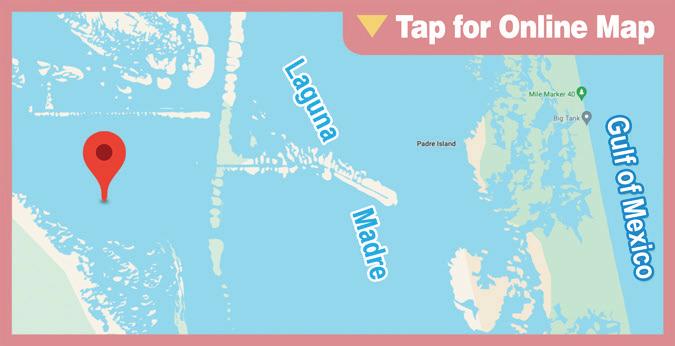
SPECIES: Speckled Trout
BEST BAITS: Egret Zombie Ghost Walker, Super Spook Jr., and One Knocker
SOURCE: Texas Lakes & Bays Fishing Atlas Fishgame.com/fishgamegear
TIPS: In windy conditions, the spoils north and south of Port Mansfield are good places to fish. You could probably wade for miles on the submerged south spoils.

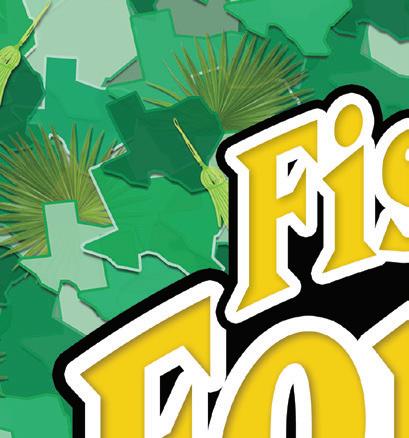
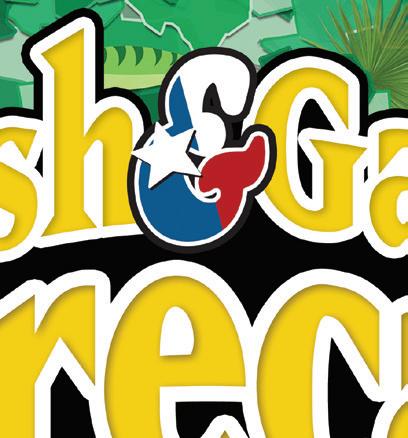








Reported by TF&G STAFF
LOCATION: Lake Bob Sandlin
HOTSPOT: Cypress Creek Channel
GPS: N 33 2.009, W 95 6.385 (33.0335, -95.1064)
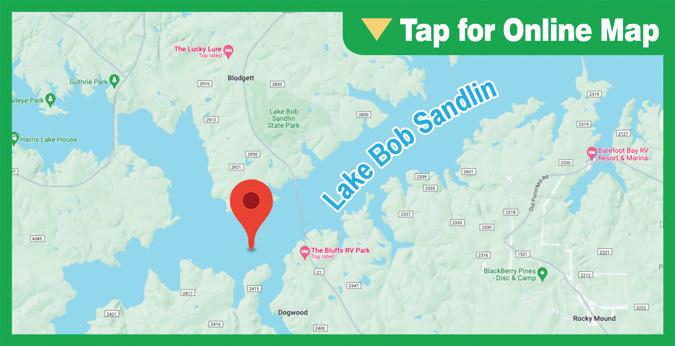
SPECIES: Catfish
BEST BAITS: Liver, prepared
SOURCE: Texas Lakes & Bays Fishing Atlas Fishgame.com/fishgamegear
TIPS: Anchor & tightline with liver or prepared bait on a Carolina rig; night.
LOCATION: Brandy Branch Reservoir
HOTSPOT: Recreation Ridge
GPS: N 32 26.666, W 94 29.083 (32.444433, -94.484717)
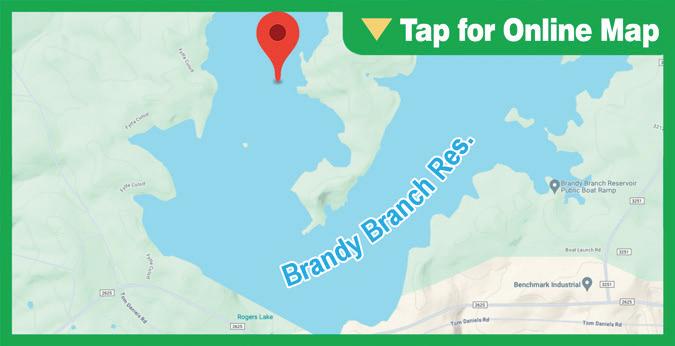
SPECIES: Largemouth Bass
BEST BAITS: Soft plastics
SOURCE: Texas Lakes & Bays Fishing Atlas Fishgame.com/fishgamegear
TIPS: Finesse fish the hydrilla extending 50 yards out; dawn through morning.
LOCATION: Caddo Lake
HOTSPOT: James Bayou and Bird Island areas
GPS: N 32 47.916, W 94 0.1019 (32.7986, -94.0017)

SPECIES: Largemouth Bass
BEST BAITS: V&M Wild Thang Lizards and V&M Lightning Blades, Soft plastics in colors of white/red, June bug, and black/blue. Dark and bream colors for skirted baits
SOURCE: Caddo Lake Guide Service/Paul Keith 318--455-3437
www.caddolakefishing.com
TIPS: Fish the scattered and isolated trees in 2-4 ft. of water paying special attention to areas that also have submerged hydrilla. March and April are the two main spawning months on Caddo Lake.
LOCATION: Lake Conroe
HOTSPOT: Lewis Creek
GPS: N 30 24.7379, W 95 34.9259 (30.4123, -95.5821)

SPECIES: Hybrid Stripers
BEST BAITS: Live shad or Storm Swim Shad
SOURCE: Richard Tatsch
936-291-1277
www.fishdudetx.com
TIPS: This is the time to catch trophy hybrids. They will be all around the lake on main lake points and humps. Electronics are a necessity! Find schools of

shad and you will find hybrids. This time of year, they will be in 28 to 40 feet. These fish move up and down in the water column hour to hour and if you don’t follow them, you will soon stop catching fish. Live shad will be the bait of choice, but the swim shad will work if you can control the depth.
LOCATION: Lake Cooper/Jim Chapman
HOTSPOT: Honey Creek Rock Pile
GPS: N 33 18.177, W 95 44.457 (33.3030, -95.7410)
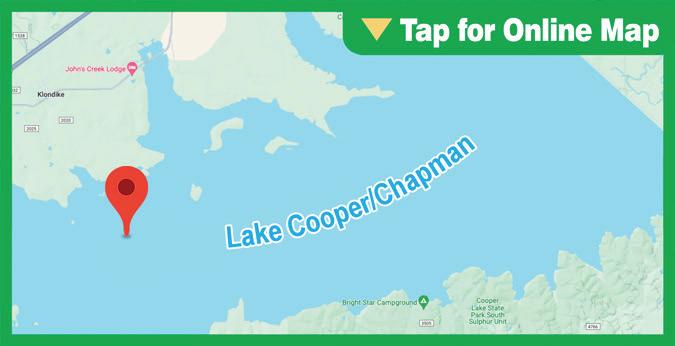
SPECIES: Crappie
BEST BAITS: Live minnows, jigs
SOURCE: TPWD District Fisheries Office 903-593-5077
TIPS: Fish live minnows or jigs in any color, working rock piles in the creek. Action is good all day.
LOCATION: Lake Fork
HOTSPOT: Bird Island Point
GPS: N 32 49.505, W 95 32.834 (32.8251, -95.5472)
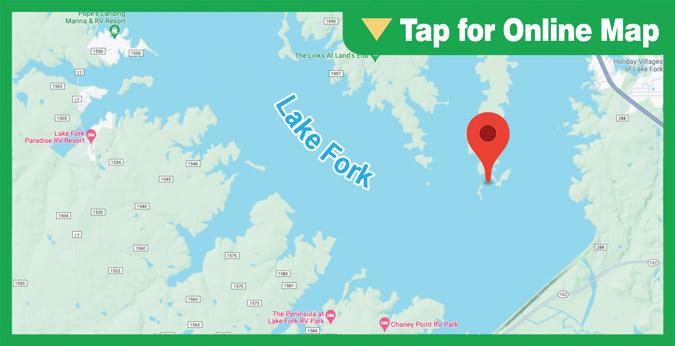
SPECIES: Crappie
BEST BAITS: Jigs, minnows
SOURCE: Texas Lakes & Bays Fishing Atlas Fishgame.com/fishgamegear
TIPS: Fish vertically for suspended crappie with Hair Jigs or minnows; morning through afternoon.
LOCATION: Lake Fork
HOTSPOT: Birch Creek
GPS: N 32 57.444, W 95 37.541 (32.9574, -95.6257)
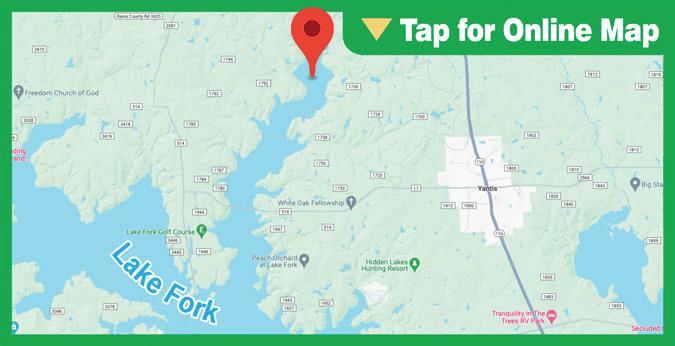
SPECIES: Largemouth Bass
BEST BAITS: Lipless crankbaits
SOURCE: Texas Lakes & Bays Fishing Atlas Fishgame.com/fishgamegear
TIPS: Spawning area… work the shallows with a red lipless crankbait; dawn through dusk.
LOCATION: Lake Houston
HOTSPOT: South of Railroad Tracks
GPS: N 29 58.891, W 95 7.755 (29.9815, -95.1293)

SPECIES: Catfish
BEST BAITS: Worms, liver, cheesebait
SOURCE: Texas Lakes & Bays Fishing Atlas Fishgame.com/fishgamegear
TIPS: Freeline the bait (worms, liver or cheesebait).
LOCATION: Lake Livingston
HOTSPOT: 190 Bridge
GPS: N 30 48.395, W 95 7.909 (30.8066, -95.1318)

SPECIES: Hybrid Striped Bass
BEST BAITS: Jigs, shad
SOURCE: David S. Cox, Palmetto Guide Service
936-291-9602
TIPS: Jig yellow jigs or live shad off the bottom; dawn through dusk.
LOCATION: Lake Murvaul
HOTSPOT: Fallwell Creek
GPS: N 32 2.923, W 94 27.055 (32.0487, -94.4509)

SPECIES: Largemouth Bass
BEST BAITS: Jigs, crankbaits
SOURCE: Texas Lakes & Bays Fishing Atlas Fishgame.com/fishgamegear
TIPS: Fish shallower docks, look for brush & shade; dawn, morning, dusk
LOCATION: Lake Nacogdoches
HOTSPOT: Island Cove
GPS: N 31 38.067, W 94 48.942 (31.6345, -94.8157)

SPECIES: Largemouth Bass
BEST BAITS: Soft plastics
SOURCE: TPWD District Fisheries Office
409-698-9114
TIPS: Great spawning area, fish around the stumps and scattered hydrilla. Avoid midday.
LOCATION: Lake O the Pines
HOTSPOT: Pine Harbor
GPS: N 32 46.051, W 94 30.368 (32.7675, -94.5061)
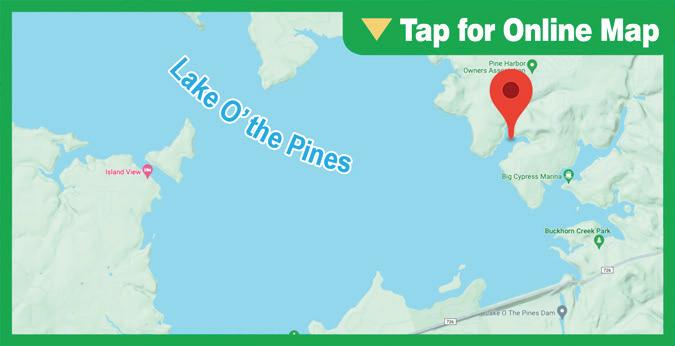
SPECIES: Largemouth Bass
BEST BAITS: French Fry soft plastics, topwaters
SOURCE: TPWD District Fisheries Office 903-938-1007
TIPS: Fish a Carolina rigged black neon French Fry on the windy bank. Use topwaters early. Morning bite.
LOCATION: Lake Sam Rayburn
HOTSPOT: Needmore Point
GPS: N 31 08.589, W 94 03.356 (31.1432, -94.0559)
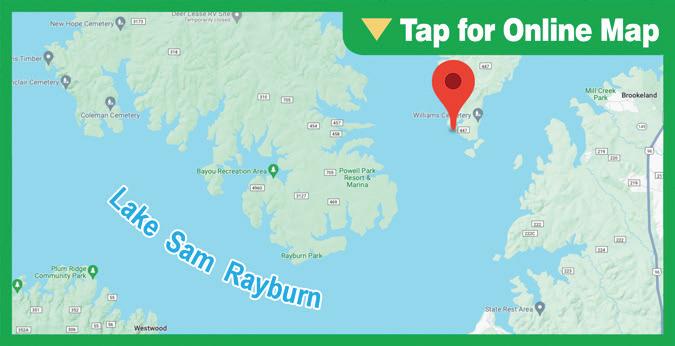
SPECIES: Catfish
BEST BAITS: Cut bait






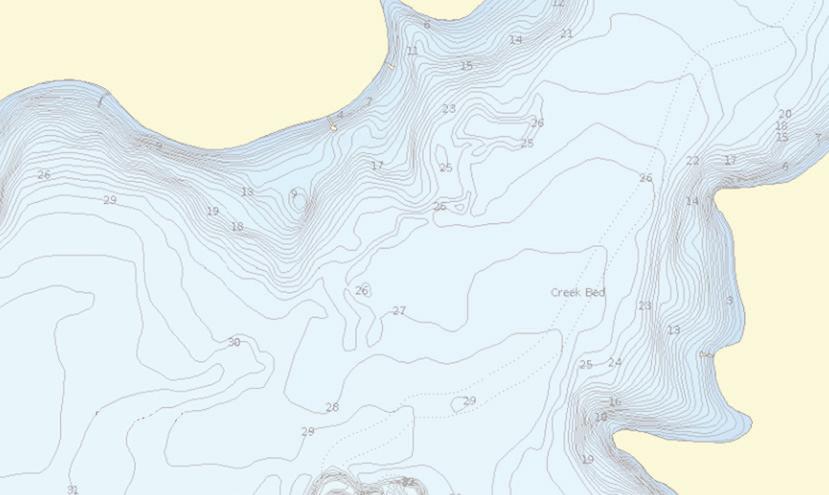




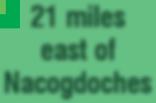
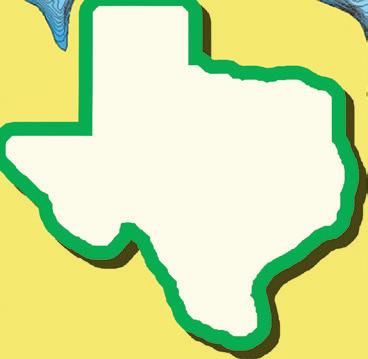



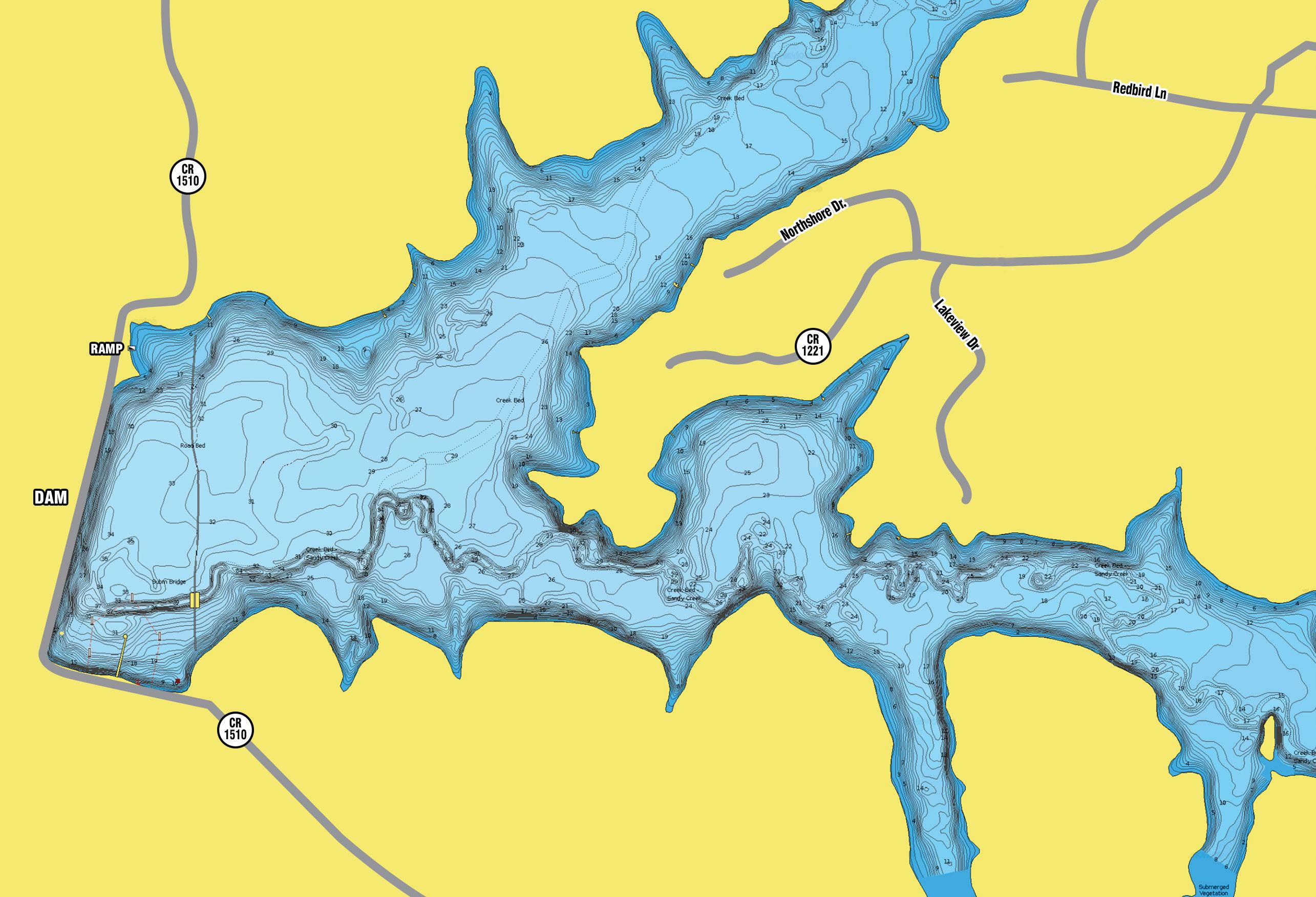
SURFACE AREA: 523 acres
MAXIMUM DEPTH: 45 feet
IMPOUNDED: 1976
WHILE THE LAKE HAS PRETTY GOOD crappie fishing, and is known for producing big crappie, largemouth bass are the main draw on Lake Pinkston.
Schooling bass are common on the lake, but so are sizeable catches, with a lake record of 16.9 pounds. There is a 14-21 inch slot limit for largemouth.
Habitat consists of submerged aquatic vegetation and standing timber. Hydrilla is the predominant vegetation, with native plants ( coontail, pondweed, and lily pads) also present. The best fishing is at the edges of vegetation, points and creek channels.


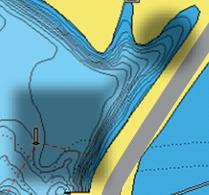
Anglers have the most success with largemouth bass during the fall, winter, and spring months. Due to cooler water temperatures, fish are active for longer periods of the day
1

and can be found in shallow water.
During the spring spawn, crappie anglers target shallow areas around vegetation.
31 42.171, W 94 20.359 Tubes, floating worms, look for spawners; dawn, morning, dusk.
2 Point #1 N 31 42.396, W 94 20.535 Plastics, sight fish for spawners; dawn, morning, dusk.
3 Pearl Lake Area N 31 42.529, W 94 20.922 Fish inside the hydrilla. As temperatures warm up, hit outside the hydrilla and in the timber; morning, dusk.
4 Big Cove N 31 42.251, W 94 20.808 Fish inside the hydrilla. As temperatures warm up, hit outside the hydrilla and in the timber; morning, dusk.
5 Point #3 N 33 15.240, W 94 23.734 Using jigs, fish the point and hydrilla, or use crankbaits for suspending fish; dawn, morning, dusk.
6 Main Lake Point N 31 42.359, W 94 20.987’ Fish the hydrilla and laydowns with crankbaits or soft plastics; dawn, morning, dusk.
7 Intake Area N 31 42.277, W 94 21.787
8 Ramp Area N 31 42.603, W 94 21.718
9 Point #6 N 31 42.796, W 94 21.208
10 Narrow Point N 31 42.897, W 94 21.029
11
12
Fish spinnerbaits along road, and fish crankbaits on the pillars and outside pillars; dawn, morning, dusk.
With topwaters or jigs, hit the hydrilla around the boat ramp, also fish the points; dawn, morning, dusk.
Fish inside the hydrilla. As temperatures warm up, hit outside the hydrilla and in the timber; morning, dusk.
Work the point first with topwaters or jigs. This time of year, check the pockets; dawn, morning, dusk.

CONTINUED FROM PREVIOUS PAGE
SOURCE: Texas Lakes & Bays Fishing Atlas Fishgame.com/fishgamegear
TIPS: Chum the area. Use cut bait on a Texas rig and rest the bait on the bottom.
LOCATION: Lake Sam Rayburn
HOTSPOT: Attoyac Bends
GPS: N 31 21.737, W 94 19.542 (31.3623, -94.3257)
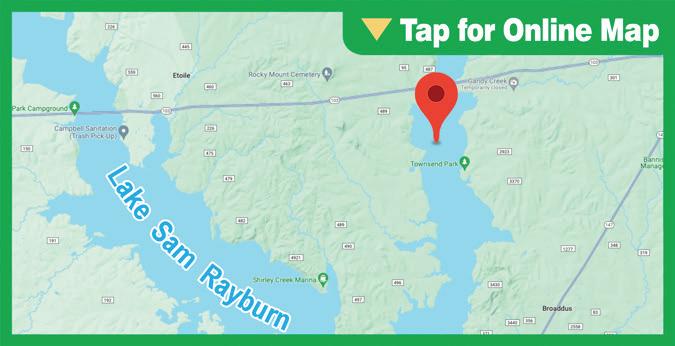
SPECIES: Largemouth Bass
BEST BAITS: Crankbaits, tail spinnerbaits
SOURCE: Texas Lakes & Bays Fishing Atlas Fishgame.com/fishgamegear
TIPS: Fish river bends all the way to the bridge.
LOCATION: Toledo Bend











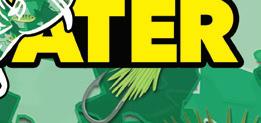
HOTSPOT: Big Island / Pirates Cove
GPS: N 31 16.988, W 93 36.072 (31.2831, -93.6012)




SPECIES: Crappie
BEST BAITS: Minnows, jigs
SOURCE: Texas Lakes & Bays Fishing Atlas Fishgame.com/fishgamegear
TIPS: Fish live minnows or jigs. Jig vertically from the boat until you find fish; dawn, morning, dusk, night.
LOCATION: Lake Wright Patman
HOTSPOT: Overcup
GPS: N 33 13.472, W 94 21.983 (33.2245, -94.3664)

SPECIES: Crappie
BEST BAITS: Live minnows, jigs
SOURCE: TPWD District Fisheries Office 903-938-1007
TIPS: Fish live minnows or white/chartreuse jigs. Hit the timber and weeds. Morning through afternoon.
• • • • •


Reported by TF&G STAFF
LOCATION: Lake Austin
HOTSPOT: Main Lake Flats and Docks
GPS: N 30 20.4, W 97 55.9319 (30.3400, -97.9322)
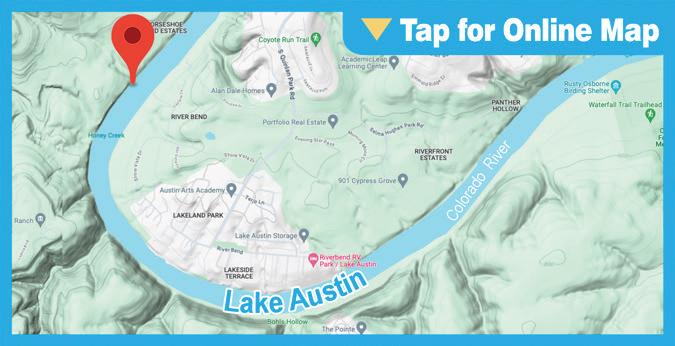
SPECIES: Largemouth Bass
BEST BAITS: Jigs, swimbaits, shakeyheads
SOURCE: Texas Lakes & Bays Fishing Atlas Fishgame.com/fishgamegear
TIPS: March is highly considered the month for all anglers because of the size of the spawning bass in Texas lakes. If you search out beds, tie on swim jigs and shakey heads, and begin to work the flats, shallows, and docks in shallow water. Use bluegill or sunfish pattern swim jigs, as these are the predominate egg eaters in these situations on Lake Austin. When using the shakey heads, a V&M Thunder Shad is a good choice. it resembles a small fish eating the eggs to produce strikes from the males and females.
LOCATION: Bachman Lake
HOTSPOT: Main Lake
GPS: N 32 51.1859, W 96 52.014 (32.8531, -96.8669)









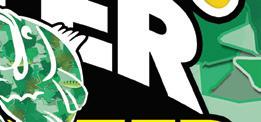




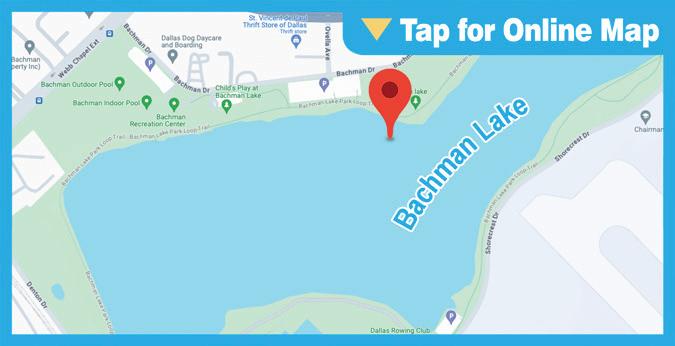
SPECIES: Crappie and Largemouth Bass
BEST BAITS: Crappie: jigs and minnows / Bass: 10” red and black worms Carolina rigged
SOURCE: Carey Thorn
469-528-0210
whitebassfishingtexas.com
TIPS: Bass and crappie prospects are good early and late. Bass are in 1 to 5 feet of water and are gorging in the shallows in the evening and morning.
LOCATION: Belton Lake
HOTSPOT: Live Oak Cove
GPS: N 31 06.977, W 97 28.713 (31.1163, -97.4786)

SPECIES: Smallmouth
BEST BAITS: Jigs
SOURCE: Texas Lakes & Bays Fishing Atlas Fishgame.com/fishgamegear
TIPS: Pull the jig high off bottom to maximize its fall. Fish along the bank.
LOCATION: Lake Buchanan
HOTSPOT: Main Lake River Channel
GPS: N 30 49.284, W 98 22.7459 (30.8214, -98.3791)

SPECIES: Catfish
BEST BAITS: Cut shad and stink bait
SOURCE: Clancy Terrill 512-633-6742
www.centraltexasfishing.com
TIPS: Catfish prospects are good on rod and reel with bobbers in 10 to 15 feet of water. Use cut shad or stink bait near brush lines early and late in the day. Jug fishing is also productive in 20 to 30 feet.
LOCATION: Canyon Lake
HOTSPOT: Canyon Park Area
GPS: N 29 54.0959, W 98 14.1659 (29.9016, -98.2361)
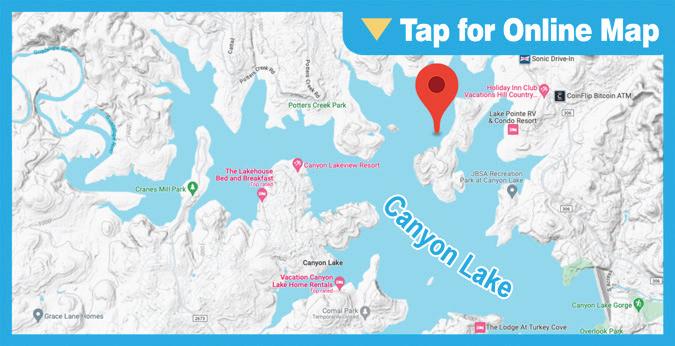
SPECIES: Largemouth Bass
BEST BAITS: Flick Shake, 1/8oz Picasso Shakey Head, Trick Worms Zoom Baits, 1/32 Creame Whaky Sticks, Jewel Jig in Texas Craw color, 1/2oz spinnerbaits in white
SOURCE: Texas Lakes & Bays Fishing Atlas Fishgame.com/fishgamegear
TIPS: Fish 5-10 feet deep. Concentrate on backs of creeks as the Bass are on the move where the sun warms the water early. Some Bass may be on the beds during the first part of April. Check the bluff wall on the right after the point. Jig early and the day and remember to jig slow and steady.
LOCATION: Cedar Creek Lake
HOTSPOT: Spawning Coves
GPS: N 32 19.392, W 96 6.0539 (32.3232, -96.1009)

SPECIES: Largemouth Bass
BEST BAITS: Spinnerbaits, chatterbaits, plastics
SOURCE: Jason Barber
903-603-2047
www.kingscreekadventures.com
TIPS: Now is the time for power fishing. Fish all spawning coves as far back as possible. Throw spinnerbaits, chatterbaits and soft plastics around all shoreline cover in 1 to 3 feet.
LOCATION: Coleto Creek Lake
HOTSPOT: Main Lake
GPS: N 28 44.5739, W 97 10.638 (28.7429, -97.1773)

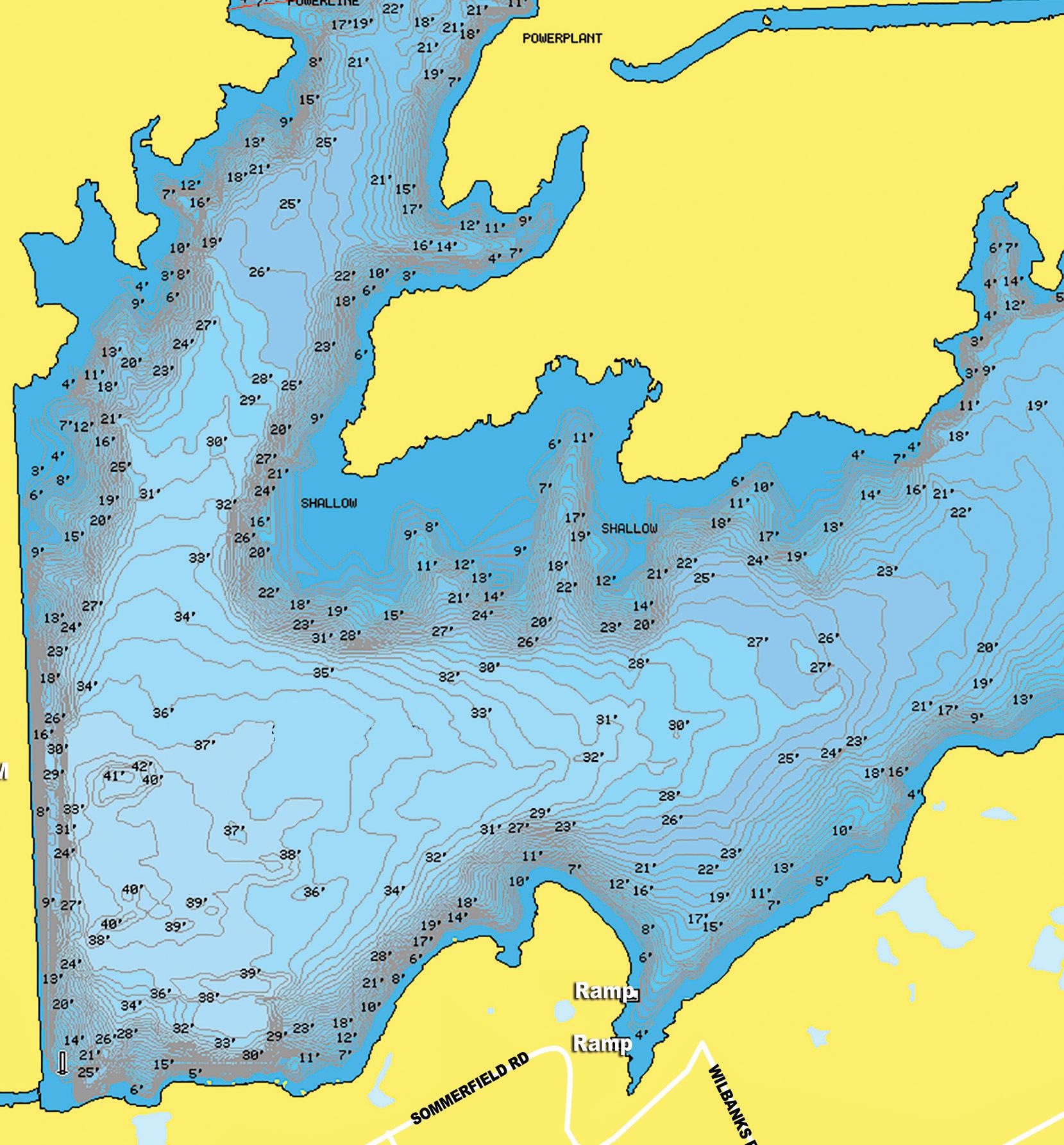




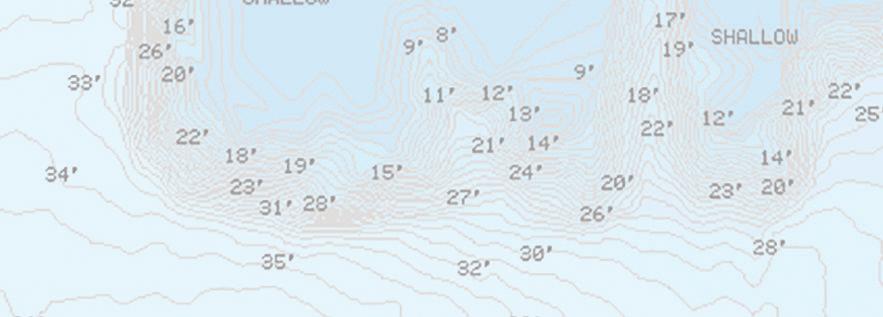

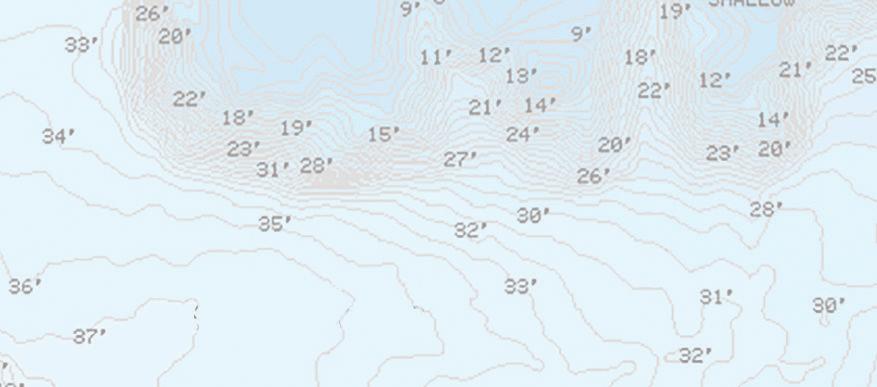
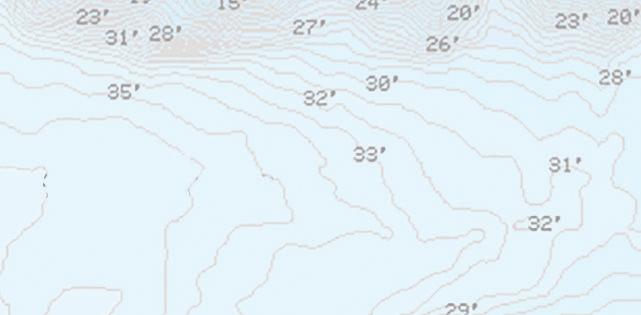


SURFACE AREA: 2,010 acres
MAXIMUM DEPTH: 42 feet
IMPOUNDED: 1968
TRADINGHOUSE CREEK RESERVOIR IS a good place to fish for largemouth

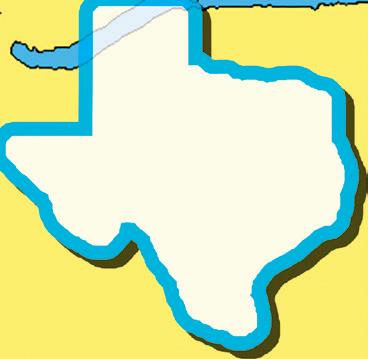


bass, crappie and especially catfish. TPWD has installed bamboo and pvc crappie condos in the lake. See this symbol... ...on the map). Selected hotspots are shown in the table below and on the map.

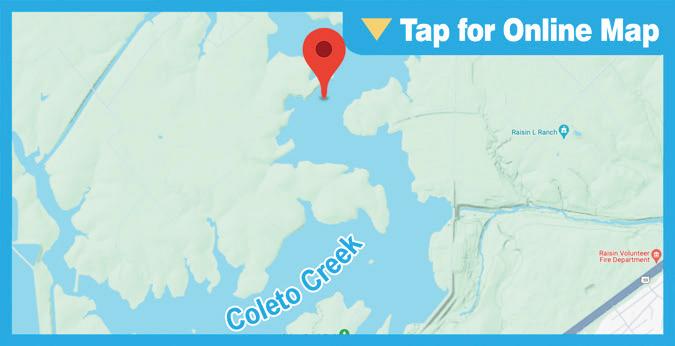
SPECIES: Largemouth Bass
BEST BAITS: Spinnerbaits, crankbaits, and RatL-Traps
SOURCE: Texas Lakes & Bays Fishing Atlas fishgame.com/fishgamegear
TIPS: Pre-spawn is here, and the females are sassy. Big baits will pay off. Big females should be pacing the deeper creeks. Spinner baits are a good choice. Or slow roll a big crank bait or large Rat-L-Trap. They will be in feeding mode. 20 pound test line mono or braided is a must.
LOCATION: Lake Corpus Christi
HOTSPOT: State Park Cove
GPS: N 28 2.875, W 97 53.173 (28.0479, -97.8862)

SPECIES: Crappie
BEST BAITS: Minnows
SOURCE: Texas Lakes & Bays Fishing Atlas Fishgame.com/fishgamegear
TIPS: Work the structure with live minnows or crappie jigs.
LOCATION: Eagle Lake
HOTSPOT: Pelican Island
GPS: N 32 54.623, W 97 29.705 (32.910389, -97.495079)

SPECIES: Catfish
BEST BAITS: Cut Bait
SOURCE: Kolby Kuhn
Final Cast Guide Service 8017-243-5858
kolbymkuhn@gmail.com














TIPS: Bait is starting to move up shallow. The catfish will follow them up and will hide behind cover to ambush them. Anchor or tie up to cover and then cast cut bait towards the cover to catch them.
LOCATION: Eagle Lake
HOTSPOT: Main Lake Hump
GPS: N 32 54.345, W 97 30.097 (32.90575, -97.501624)
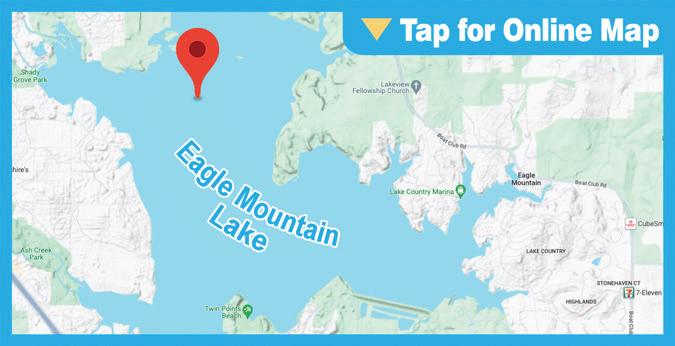
SPECIES: White bass
BEST BAITS: Slabs
SOURCE: Kolby Kuhn
Final Cast Guide Service 8017-243-5858
kolbymkuhn@gmail.com
TIPS: The white bass will be spawning in April on main lake humps and points in 15-25 feet of water. Vertically jig slabs off the bottom to catch them. They will be laying on the bottom, so make sure that your slab isn’t too high above the bottom.
LOCATION: Fayette County
HOTSPOT: Dam Rocks
GPS: N 29 55.05, W 96 44.5559 (29.9175, -96.7426)
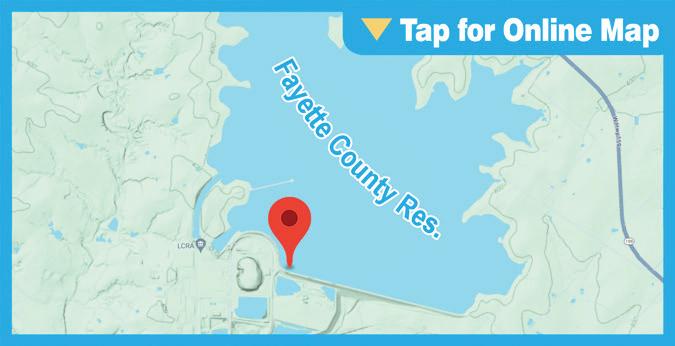
SPECIES: Catfish
BEST BAITS: CJ’s punch Bait
SOURCE: Weldon Kirk 979-229-3103
www.fishtales-guideservice.com
TIPS: Fish are spawning around the rocks now. Use slip cork to fish above the rocks. You can move down the dam all along the rocks. Use a #6 treble hook.
LOCATION: Granger Lake
HOTSPOT: Main Lake Flats and Shallow Wind Blown Banks
GPS: N 30 41.904, W 97 22.0559 (30.6984, -97.3676)
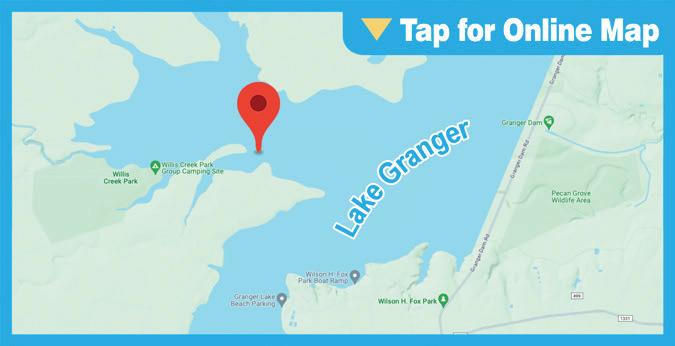
SPECIES: Blue Catfish and Yellow Catfish
BEST BAITS: Shad for Blues and live perch for Yellows
SOURCE: Texas Lakes & Bays Fishing Atlas Fishgame.com/fishgamegear
TIPS: Blue catfish are spawning all over the lake. They are in shallow timbered areas and windy banks. Fresh shad work for most, but a variety of baits also produce. Jug lines will catch them but rod and reel will also work. A good bait for jug lines is Zote soap. Use Mustad #11/0 circle hooks and blues rarely get off when hooked. Now is also the best time to catch big yellow cats that are plentiful in the lake. The good places for them are up river on trotlines and in the wooded areas at the mouth of the river and Willis Creek. Live perch or goldfish work best.
LOCATION: Lake Joe Pool
HOTSPOT: South Tree Flats
GPS: N 32 34.559, W 97 01.803 (32.5760, -97.0301)

SPECIES: Catfish
BEST BAITS: Prepared baits
SOURCE: Carey Thorn 469-528-0210
whitebassfishingtexas.com
TIPS: Fish prepared baits on Carolina rig or trotline. Good action all day.
LOCATION: Lake Lavon
HOTSPOT: Dam Area
GPS: N 33 1.9979, W 96 28.278 (33.0333, -96.4713)

SPECIES: Largemouth Bass
BEST BAITS: Series 5 KVD Sexy Shad, chartreuse and white spinnerbait, and black and blue jig.
SOURCE: Carey Thorn 469-528-0210 whitebassfishingtexas.com
TIPS: In March, keep close to the dam area. Concentrate on ledges that run parallel to the dam. Fish could be 3 feet deep, or 25 feet. You just have to find their pattern. You can either throw a Series 5 KVD Sexy Shad or a chartreuse and white spinnerbait. If












it’s super cold, go to a black and blue jig.
LOCATION: Lake LBJ
HOTSPOT: Rock Hump Point
GPS: N 30 33.181, W 98 20.729 (30.5530, -98.3455)


BEST BAITS: RatLTraps
SOURCE: Texas Lakes & Bays Fishing Atlas Fishgame.com/fishgamegear
TIPS: Troll 10-15 feet deep with chrome/blue RatLTraps near the point with Carolina-rigged shad; avoid midday, night.
LOCATION: Lake Lewisville
HOTSPOT: Hickory Creek
GPS: N 33 6.14, W 97 3.265 (33.1023, -97.0544)

SPECIES: Crappie
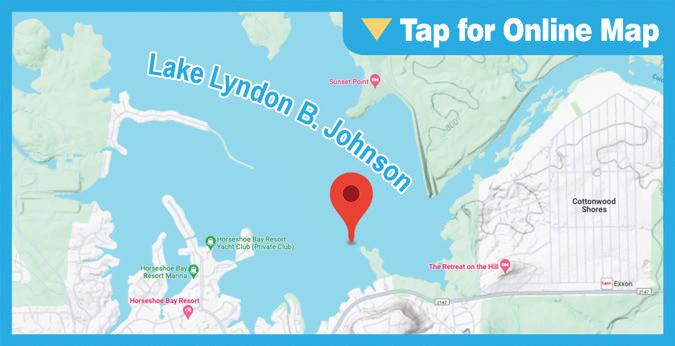
SPECIES: Hybrid/Striped Bass
BEST BAITS: Minnows, jigs
SOURCE: Texas Lakes & Bays Fishing Atlas Fishgame.com/fishgamegear
TIPS: Fish tree tops with live minnows or white/ yellow jigs; all day.


CONTINUED FROM PREVIOUS PAGE
LOCATION: Lake Limestone
HOTSPOT: Mouth of Blains Creek
GPS: N 31 22.646, W 96 20.008 (31.3774, -96.3335)

SPECIES: White Bass
BEST BAITS: Spinnerbaits, jigs
SOURCE: Texas Lakes & Bays Fishing Atlas Fishgame.com/fishgamegear
TIPS: Fish white or chartreuse inline spinnerbaits or jigs. Look for birds and schools; this spot is productive all day.
LOCATION: Lake Palestine
HOTSPOT: Main Lake
GPS: N 32 5.8679, W 95 27.876 (32.0978, -95.4646)
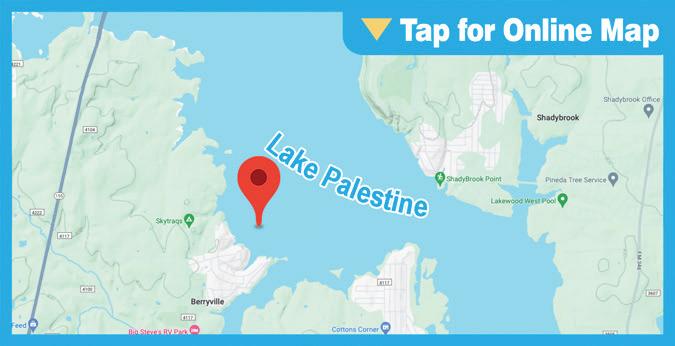
SPECIES: Crappie
BEST BAITS: Jigs
SOURCE: Ricky Vandergriff 903-561-7299 or 903-530-2201 www.rickysguideservice.com
TIPS: Fish brush piles in 18 - 20 feet of water.
LOCATION: Lake Ray Hubbard
HOTSPOT: LR East flats
GPS: N 32 53.175, W 96 29.179 (32.8863, -96.4863)

SPECIES: White Bass
BEST BAITS: Spinnerbaits
SOURCE: Texas Lakes & Bays Fishing Atlas Fishgame.com/fishgamegear














TIPS: Fish chartreuse tail spinnerbaits. Watch for birds and work the flats; morning, dusk.
LOCATION: Lake Ray Roberts Lake
HOTSPOT: Sand Branch
GPS: N 33 22.855, W 96 59.495 (33.380923, -96.991587)
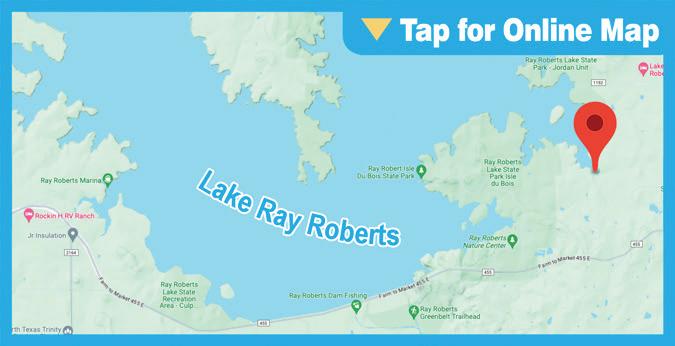
SPECIES: Largemouth Bass
BEST BAITS: Jerk baits, spinnerbaits, bladed jigs, and square bill crankbaits
SOURCE: Texas Lakes & Bays Fishing Atlas Fishgame.com/fishgamegear
TIPS: Sand Branch has historically been one of the best places on the lake for largemouth bass this time of year. It has produced many trophy fish. Fish the flats from where they drop into the feeder creeks up to the bank to locate fish. Use the aforementioned lures in these areas and you will be rewarded.
LOCATION: Lake Richland Chambers
HOTSPOT: Coves at Fisherman’s Point Marina
GPS: N 31 56.2799, W 96 7.404 (31.9380, -96.1234)

SPECIES: Crappie
BEST BAITS: Small minnows or jigs
SOURCE: Royce Simmons
903-389-4117
www.gonefishin.biz
TIPS: Check out the Coves at the marina for early spawning Crappie. Small minnows or jigs in the 2
feet of water could result in a nice catch!
LOCATION: Lake Somerville
HOTSPOT: Big Creek East Shoreline
GPS: N 30 19.992, W 96 33.882 (30.3332, -96.5647)

SPECIES: Catfish
BEST BAITS: CJ’s punch Bait/Crawdad
SOURCE: Weldon Kirk
979-229-3103
www.fishtales-guideservice.com
TIPS: This is a windy shore and the shad run shallow. Use tight line or slip corks and fish close to the weeds.
LOCATION: Lake Tawakoni
HOTSPOT: Moon Reach
GPS: N 32 55.176, W 96 3.37 (32.9196, -96.0562)

SPECIES: Catfish
BEST BAITS: Shad, chicken liver
SOURCE: Texas Lakes & Bays Fishing Atlas Fishgame.com/fishgamegear
TIPS: Drift the area or anchor and fish live or cut shad, or chicken liver; dawn-midday.
LOCATION: Lake Texoma
HOTSPOT: Paw Paw Creek & Mill Creek Cut
GPS: N 33 53.9879, W 96 53.796 (33.8998, -96.8966)

SPECIES: Striped Bass
BEST BAITS: Road Runner and Sassy Shad jigs in white or chartreuse
SOURCE: Bill Carey
903-786-4477

CONTACT TJ RANFT:
Email: TJRanft17@gmail.com
Online: RanftGuideService.com
LOCATION: Lake Alan Henry
HOTSPOT: Stained Water
GPS: N 33 2.083, W 101 6.292 (33.0347, -101.1049)

SPECIES: Catfish
BEST BAITS: Perch
SOURCE: Texas Lakes & Bays Fishing Atlas Fishgame.com/fishgamegear
TIPS: Fish inside the curves and outside the pockets with live perch; avoid dawn, afternoon.
LOCATION: Lake Arrowhead
HOTSPOT: Dam Face
GPS: N 33 45.821, W 98 21.83 (33.7637, -98.3638)

SPECIES: Crappie






BEST BAITS: Minnows, jigs








SOURCE: Texas Lakes & Bays Fishing Atlas Fishgame.com/fishgamegear
TIPS: Fish the rip rap with minnows or 1/8 oz jigs. Keep the bait at the bottom; dawn through morning, dusk.
LOCATION: Lake Falcon
HOTSPOT: Falcon Dam
GPS: N 26 33.571, W 99 09.823 (26.5595, -99.1637)
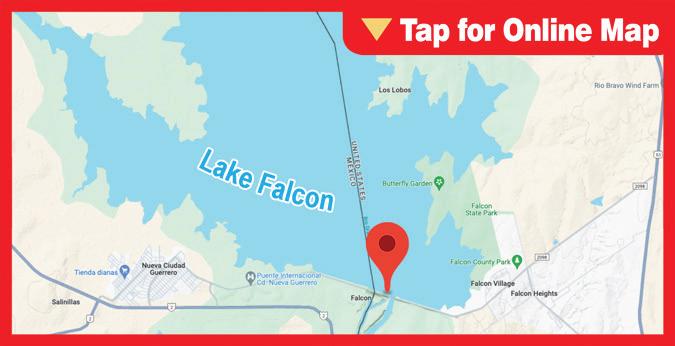
SPECIES: Largemouth Bass
BEST BAITS: Crankbaits
SOURCE: Texas Lakes & Bays Fishing Atlas Fishgame.com/fishgamegear
TIPS: Fish red craw crankbaits on humps, points, and drop-offs. Morning through afternoon.
LOCATION: Lake Granbury
HOTSPOT: Tin Top
GPS: N 32 34.559, W 97 49.295 (32.575983, -97.821583)

SPECIES: Crappie
BEST BAITS: Small jigs with soft plastics in Electric Chicken and chartreuse colors worked near structure near banks/docks
SOURCE: Michael W. Acosta, Unfair Advantage Charters
254-396-4855
TIPS: Swim or bounce your jigs across the bottom.
Work the bends in the river and look for fish either in the deeper holes and when active on top of flats adjacent to the deeper water. Crappie will be spawning in most creeks and sloughs all over the lake and in the river. Granbury water temperatures are in the 60’s. Passing cool fronts/storm fronts continue to dominate the weather pattern.
LOCATION: Hubbard Creek Res.

HOTSPOT: Lower Creek Arm
GPS: N 32 45.468, W 99 0.6751 (32.7578, -99.0113)

SPECIES: White Crappie
BEST BAITS: jigs, small spinnerbaits
SOURCE: Lance Benson, Texas Parks & Wildlife Department
325-692-0921
TIPS: Historically, anglers have reported catching great numbers of crappie in the lower creek arm in the southern end of the reservoir. Fishing the submersed brush and vegetation with curly-tailed jigs and small spinners may yield a bite.
LOCATION: Kirby Lake
HOTSPOT: Dam
GPS: N 32 23.1205, W 99 44.0777 (32.385343, -99.734629)


CONTINUED FROM PREVIOUS PAGE
www.striperexpress.com
TIPS: In March the white bass have already spawned, and the stripers are staging up the main tributaries. Structure like main lake points, ditches and creeks will hold stripers. Fish the creeks in 12 to 20 feet of water, with a slow retrieve for fish up to 20 pounds. Pay attention to the seagulls, as they can be your fish finder. When you are fishing under the birds, keep your lure in the top 15 feet of the water. Most activity will be west of the Willis Bridge and north of the railroad bridge on the Washita arm of the lake.
LOCATION: Lake Waco
HOTSPOT: Speegleville Marina Sunken Rd.
GPS: N 31 33.487, W 97 14.01 (31.5581, -97.2335)






SPECIES: Catfish








BEST BAITS: Live or cut carp, sunfish, punch baits
SOURCE: Lance Benson
325-692-0921
TIPS: Kirby Lake is a catfishing gem in the Big Country. The reservoir is home to productive blue and flathead catfish. While winds often blow from the south toward the dam, rigging your line heavy will allow you to cast in the windiest of days. Fishing off the dam can yield a catch of a large fish hanging out in the deeper waters. Cut carp, shad, or sunfish on slip sinker, three-way, or slip bobber rigs work well for landing big blues. However, use of live 3-5” carp or live sunfish works well for landing flatheads. Punch baits, cut shad, and carp also work well for landing smaller fish. Be sure to use heavy test line and round sinkers to avoid getting snagged on the rocks too badly—it’s going to happen.
LOCATION: Lake Possum Kingdom
HOTSPOT: Mid Lake
GPS: N 32 54.777, W 98 27.939 (32.912950, -98.466650)

SPECIES: Striped bass
BEST BAITS: Live shad
SOURCE: TJ Ranft
Ranft Guide Service
940-452-8439
TJRanft17@gmail.com
TIPS: Stripers are in their spring pattern and feeding heavy. Water temps are in the 60s. The stripers are moving around, looking for their next meal. There are still a few birds around, so keep an eye out for them. If the birds are there, the fish will be close by—and feeding. Live shad is the best bait, but some stripers can be caught using swim jigs and small spoons, cast into the birds. Don’t be afraid to move around and look for the fish if you can’t find birds. Once you find some fish, stick with them and follow them until you’re done fishing. Good live bait will make or break your trip. Catch your bait fresh and take extra good care of it and it will catch fish.

SPECIES: Largemouth Bass
BEST BAITS: Crankbaits, spinnerbaits
SOURCE: Texas Lakes & Bays Fishing Atlas Fishgame.com/fishgamegear
TIPS: Work crankbaitss & spinnerbaitss along the sides and top of road bed; early morning, late afternoon.
LOCATION: Lake Whitney
HOTSPOT: Sandy Point
GPS: N 31 55.23, W 97 20.8499 (31.9205, -97.3475)

SPECIES: White Bass
BEST BAITS: Sassy Shad and Flea Fly
SOURCE: Randy Routh 817-822-5539
TIPS: Spawning whites on the main lake are in Whitney Creek and along Whitney Point, as well as Sandy Point. Use a small swim bait and tie a flea fly about 10 inches above it. Make long casts up on the points and bounce up and down along the edge of the point back to the boat. Catch them two at a time!


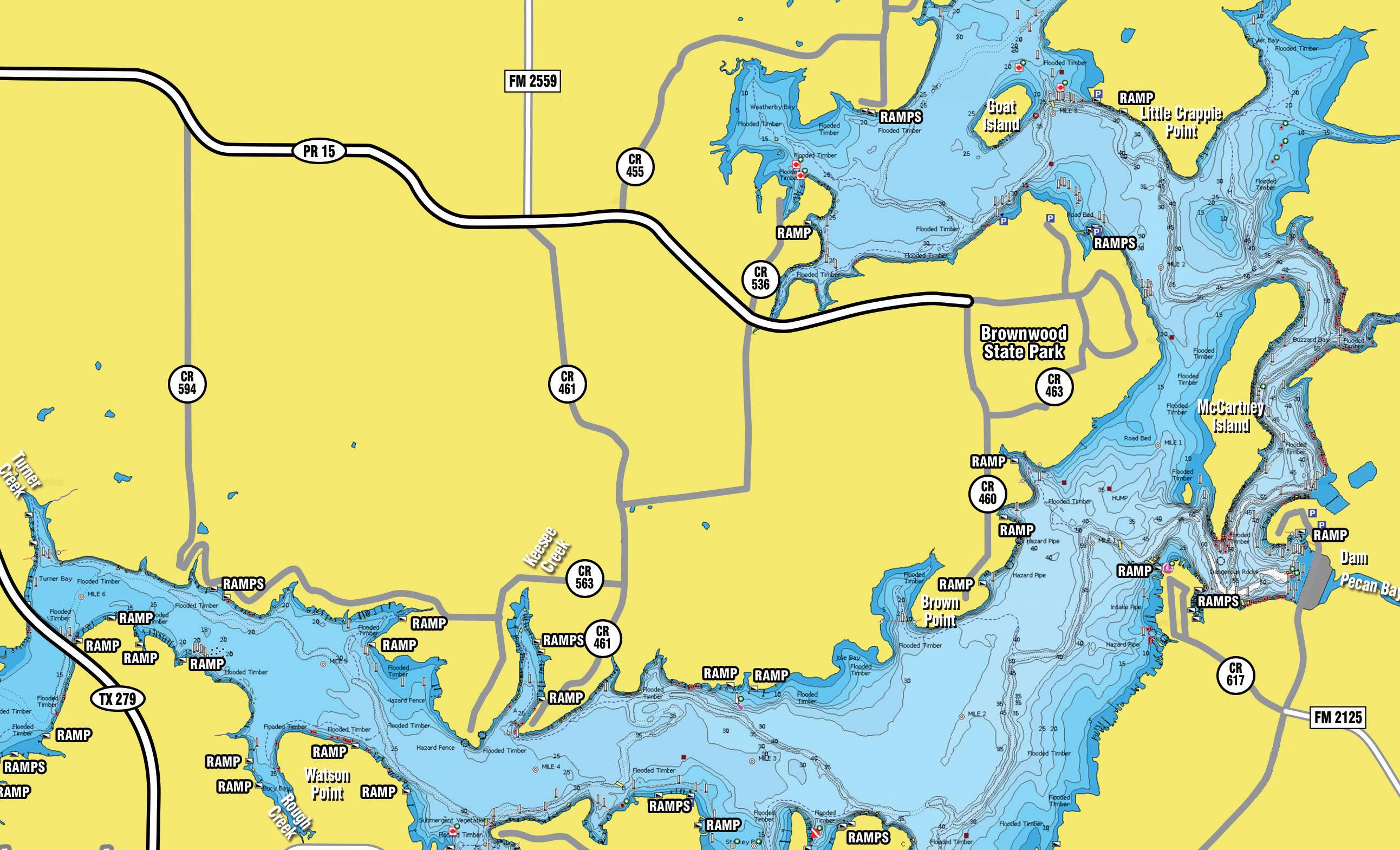
SURFACE AREA: 6,490 acres
MAXIMUM DEPTH: 95 feet
IMPOUNDED: 1933









LAKE BROWNWOOD HAS GOOD TO excellent largemouth and white bass
3 State Park Point N 31 51.907, W 99 01.484
CRAPPIE





fishing, with fair to good crappie and catfish action.
Lake Brownwood has many small coves, bays, and creeks with a variety of habitat. The lake is primarily lined by rocky structure and boat docks. The
upper end of the Jim Ned and Pecan Bayou arms have standing timber, black willow trees and buttonbush. Water willow and bulrush are scattered around the lake and water willow is most abundant in Sowell Creek.
Largemouth bass fishing is best from from now through May. Fishing rocks and points with crankbaits, jigs, spinnerbaits, and topwater will produce.
TPWD has placed fish attracting habitat throughout the lake. These structures are denoted with this symbol... ...on the map).
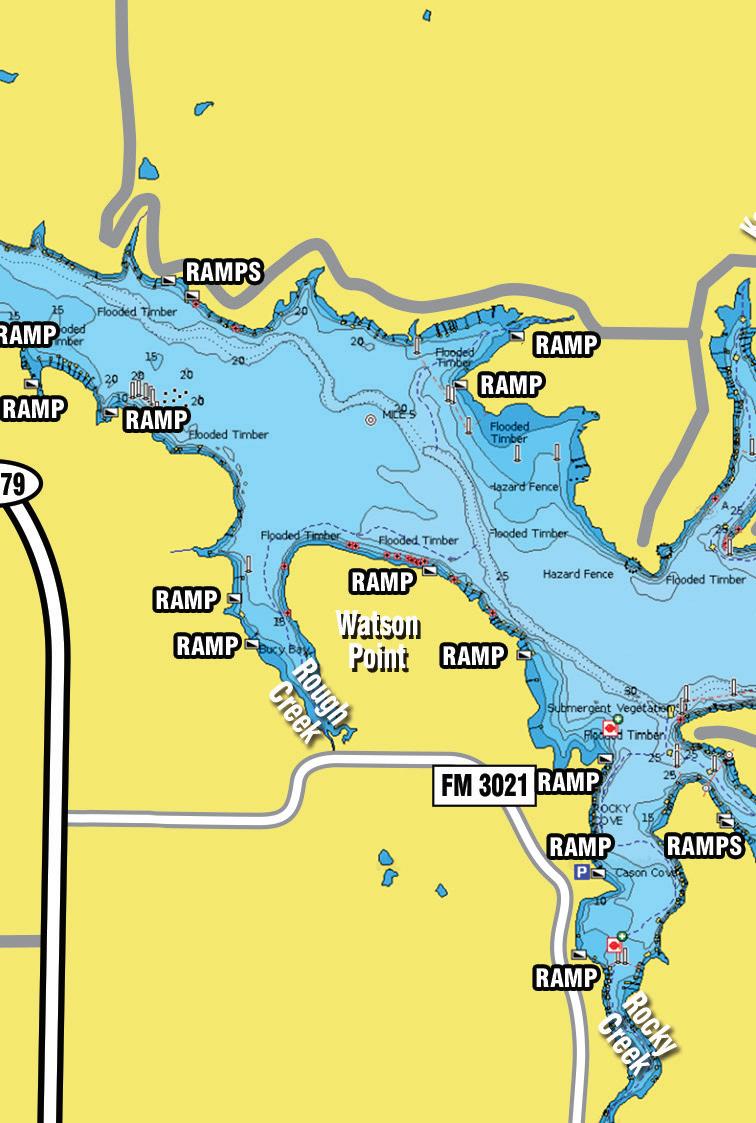





Sunrise: 6:32a Set: 7:58a
Moonrise: 5:24a Set: 6:44p
AM Minor: 4:08a
AM Major: 10:21a
PM Minor: 4:34a
PM Major: 10:47a
Moon Overhead: 11:59a
Moon Underfoot: None



Sunrise: 6:28a Set: 8:02a
AM Minor: 11:00a
AM Major: 4:48a
PM Minor: 11:26a
PM Major: 5:13a
Moon Overhead: 6:32p
Moon Underfoot: 6:07a




Sunrise: 6:32a Set: 7:58a
Moonrise: 6:00a Set: 7:54p
AM Minor: 4:57a
AM Major: 11:10a
PM Minor: 5:24a
PM Major: 11:37a
Moon Overhead: 12:53p
Moon Underfoot: 12:26a



Sunrise: 6:27a Set: 8:03a
Moonrise: 11:20a Set: 12:59a
Moonrise: 12:19p Set: 1:38a
AM Minor: 11:53a
AM Major: 5:41a
PM Minor: -----
PM Major: 6:04a
Moon Overhead: 7:19p
Moon Underfoot: 6:56a




Sunrise: 6:31a Set: 7:59a
Moonrise: 6:42a Set: 9:05p
AM Minor: 5:51a
AM Major: -----
PM Minor: 6:20a
PM Major: 12:34p
Moon Overhead: 1:50p
Moon Underfoot: 1:21a
AM Minor: 6:51a
AM Major: 12:37p
PM Minor: 7:21a
PM Major: 1:06a




Sunrise: 6:26a Set: 8:03a
Moonrise: 1:16p Set: 2:12a
AM Minor: 12:15p
AM Major: 6:28a
PM Minor: 12:39p
PM Major: 6:50a
Moon Overhead: 8:03p
Moon Underfoot: 7:42a




Sunrise: 6:30a Set: 7:59a
Moonrise: 7:28a Set: 10:14p
Moon Overhead: 2:49p
Moon Underfoot: 2:19a
AM Minor: 7:55a
AM Major: 1:41a
PM Minor: 8:25a
PM Major: 2:10a




Sunrise: 6:26a Set: 8:04a
Moonrise: 2:11p Set: 2:42a
AM Minor: 12:59p
AM Major: 7:10a
PM Minor: 1:20a
PM Major: 7:30a
Moon Overhead: 8:44p
Moon Underfoot: 8:23a





Sunrise: 6:30a Set: 8:00a
Moonrise: 8:21a Set: 11:16p
Moon Overhead: 3:48p
Moon Underfoot: 3:18a
AM Minor: 9:00a
AM Major: 2:46a
PM Minor: 9:29a
PM Major: 3:14a
Moon Overhead: 4:46p




Sunrise: 6:25a Set: 8:04a
Moonrise: 3:04p Set: 3:09a
AM Minor: 1:37a
AM Major: 7:47a
PM Minor: 1:57a
PM Major: 8:07a
Moon Overhead: 9:23p
Moon Underfoot: 9:03a




Sunrise: 6:29a Set: 8:01a
Moonrise: 9:18a Set: None
Moon Underfoot: 4:17a


Sunrise: 6:28a Set: 8:01a
Moonrise: 10:19a Set: 12:12a
AM Minor: 10:02a
AM Major: 3:49a
PM Minor: 10:30a
PM Major: 4:16a
Moon Overhead: 5:41p
Moon Underfoot: 5:14a



Sunrise: 6:25a Set: 8:05a
Moonrise: 3:56p Set: 3:35a
AM Minor: 2:12a
AM Major: 8:22a
PM Minor: 2:32a
PM Major: 8:41a
Moon Overhead: 10:01p
Moon Underfoot: 9:42a




Sunrise: 6:24a Set: 8:06a
Moonrise: 4:49p Set: 4:01a
AM Minor: 2:46a
AM Major: 8:56a
PM Minor: 3:06a
PM Major: 9:16a
Moon Overhead: 10:41p
Moon Underfoot: 10:21a





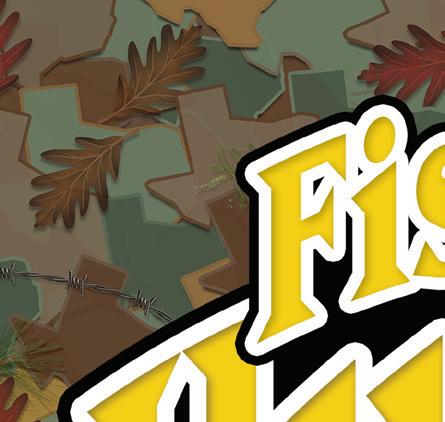
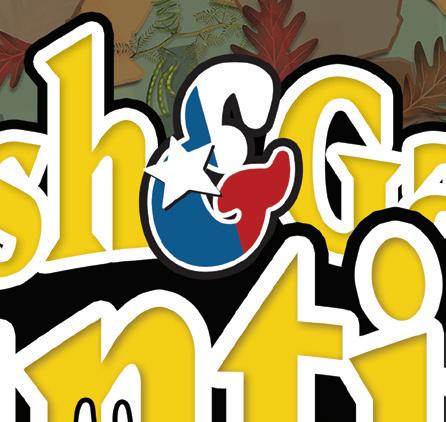



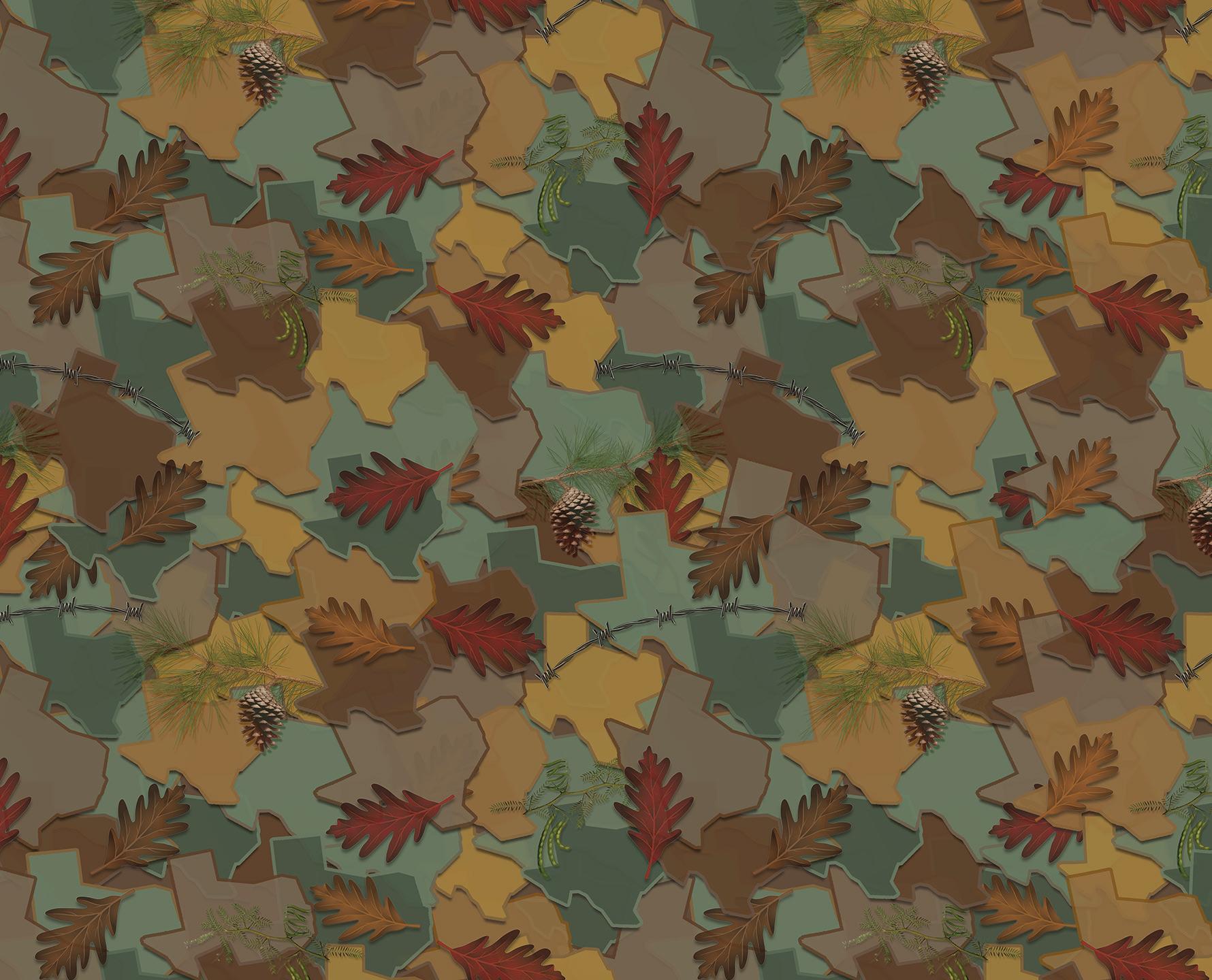


EVERY YEAR IN THE CENtral Texas town of Holland, hunters excitedly await the opportunity to compete in the “Feral Texas Outdoor Varmint Hunt.”
Feral Texas Outdoors is a retail store in Holland that specializes in providing predator hunters with everything they need to participate in the sport.
Feral Texas Outdoors has hosted this event in January for the past three years to allow hunters to compete. Justin Rumley, an employee of the company and predator-hunting enthusiast, is the chief organizer for this annual contest. Justin also runs the podcast Hunting
to
“ e rst year I did it, it was like ve teams. And it was all buddies. And we ended up winning. I think it was 300 bucks or something. It wasn’t anything crazy. And then we’re like, ‘Well, let’s push this on social media.’ en the next thing you know, you got 10 or 15 teams, and then it just slowly kept growing. And you kind of just build your contact list and all, and
and weapons predator hunters utilize seem only to rival that of elite military units like Delta Force or Seal Team 6. Since these predators are nocturnal, it is largely conducive to hunting at night; because of this, many hunters rely on state-of-the-art thermal scopes to spot and eliminate these animals.
“As the years have gone on, modern technology has advanced, and a lot of people are turning to thermal and night vision optics, you know, just because it makes it a lot easier. You don’t have to worry about lights or anything spooking the animals as they’re coming in; you can pre y much hunt in the pitch darkness because you’re using thermal or night vision. Basically, you just put it up to your eye, and you can scan around and look, and you know, you can see everything around you.”

A er Dark with store owner Jason Price.
Justin got his rst taste of predator hunting in high school when he began to hunt Coyotes with his friends. He describes being hooked on predator hunting ever since experiencing the adrenaline rush of catching his rst Coyote.

Shortly a er his introduction to the sport, Justin began hosting tournaments. He recalled the steady growth of a few teams competing in his competition to what would be dozens of teams.

that’s
where we are now.”
e seriousness of this sport is evident in the tools of the trade. e tactical gear
On top of the thermal scopes, which can cost upwards of $18,000, competitive predator hunters will likely be equipped with silencers. Silencers are necessary because many predators gather in groups, and they are needed so as not to alarm and scare o the rest of the group upon ring a weapon. Acquiring a silencer is a complex process in itself. To legally obtain a silencer, one must be willing to wait 90 days to one year to be approved for an ATF tax stamp. e seriousness of the sport is re ected in the contest’s strict rules and regulations, which includes a polygraph test. According to Justin, the polygraph brings peace of mind to the contestants.
“It’s more of a, you know, a comfort factor. I know a lot of guys that won’t enter a tournament if there’s no polygraph. So it’s de nitely a bene t to have that polygraph test,” said Justin.
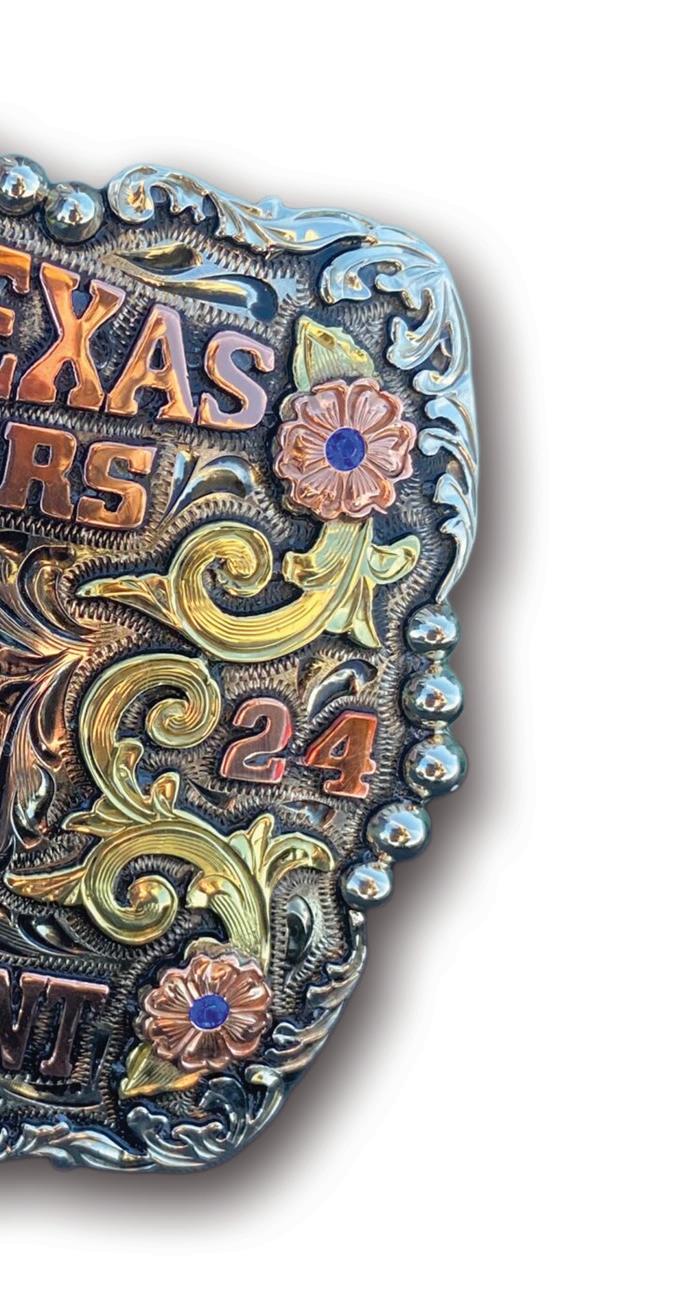
Justin described a hierarchy within these events. A small handful consistently end up on top among all the teams that
Acquiring a silencer is a complex process in itself. To legally obtain a silencer, one must be willing to wait 90 days to one year to be approved for an ATF tax stamp. is re ected in the contest’s strict small end up on top among all the teams that compete.
“Your top ve is usually going to be the same ve teams; it just depends on what order they’re going to be in; you’re usually
“Your top ve is usually going to be the
going to see the same five teams as I said; it just depends what kind of night they had,” said Justin.
Throughout his career, Justin has observed the secrecy that some of these teams employ. Functioning as a cabal of hunters and exchanging trade secrets among its members, “those guys are all… they won’t admit this to you, but they’re all pretty close with each other. They talk often, you know, basically, pick each other’s brains and give different strategies and stuff. But then you go to ask them, “Hey, man, you talk to this guy,[they say] nah man, I’m not talking to him.”
This year’s contest sign-up began on Saturday, January 7th, at noon. Contestants registered online in groups of no more than four. Upon registration, contestants were given 24 hours to hunt all over Texas. Once the 24 hours were up, teams were expected to arrive for weigh-in by judges at 12:00 sharp the following day. Here, the winners would be determined and awarded cash prizes based on the heaviest stringer of each animal, consisting of 1 coyote, raccoon, fox, and bobcat. The
team with the heaviest combined weight will win a cash prize.
I arrived as the event was being set up around 9:30 AM. It was a windy winter morning in the tucked-away hill country town of Holland. Hunters competing in the event began to slowly stagger in to weigh the vermin they eliminated. Most of the contestants had hunted through the entire night prior and had yet to sleep since the start of the competition.
Most had driven from all over Texas to be present to weigh in. I began speaking to hunters to get a grasp on the night they had.
The team of Jonathon White, Trace Grigg, and Jason Vega, from Robertson County, recounted their 24-hour hunt. Jonathan explained that their hunt “was pretty good. It went through some slow times, but it picked up right before daylight.” The team prefers to use spotlights over thermals to assist in shooting the predators. When asked about their favorite part of the sport, Jason Vega responded, seeing “eyes glowing, coming in.” He refers to the thrill the hunters experience upon
locating their targets.
Around 11:30 AM, a convoy of pickup trucks, hauling their kills, started to form down the empty street. After weighing in, hunters promptly got out of their trucks and began congregating to chat cheerfully about their night of hunting. At this point, there was a pretty good-sized crowd, and the officials continued to weigh the vast array of dead bobcats, coyotes, raccoons, and foxes.
As noon approached, the last few teams began to weigh in. The turnout was eventful for the hosts of this contest. In the end, 41 teams with 1 to 4 members per group arrived to weigh in, and the winners were announced.
First place was awarded to the “Brush Country Boys” from Gatesville, Texas. The “Brush Country Boys” brought in an impressive stringer with a combined weight of 93.98 pounds. In total, they brought in 10 coyotes, three bobcats, two foxes, and four raccoons, for a total of 19 animals.
They were awarded $9400 in cash prizes and coveted belt buckles.
continued on next page u



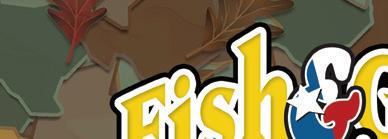





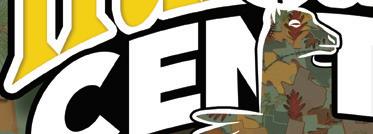




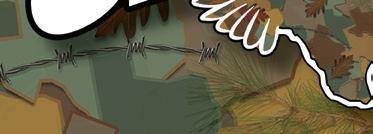






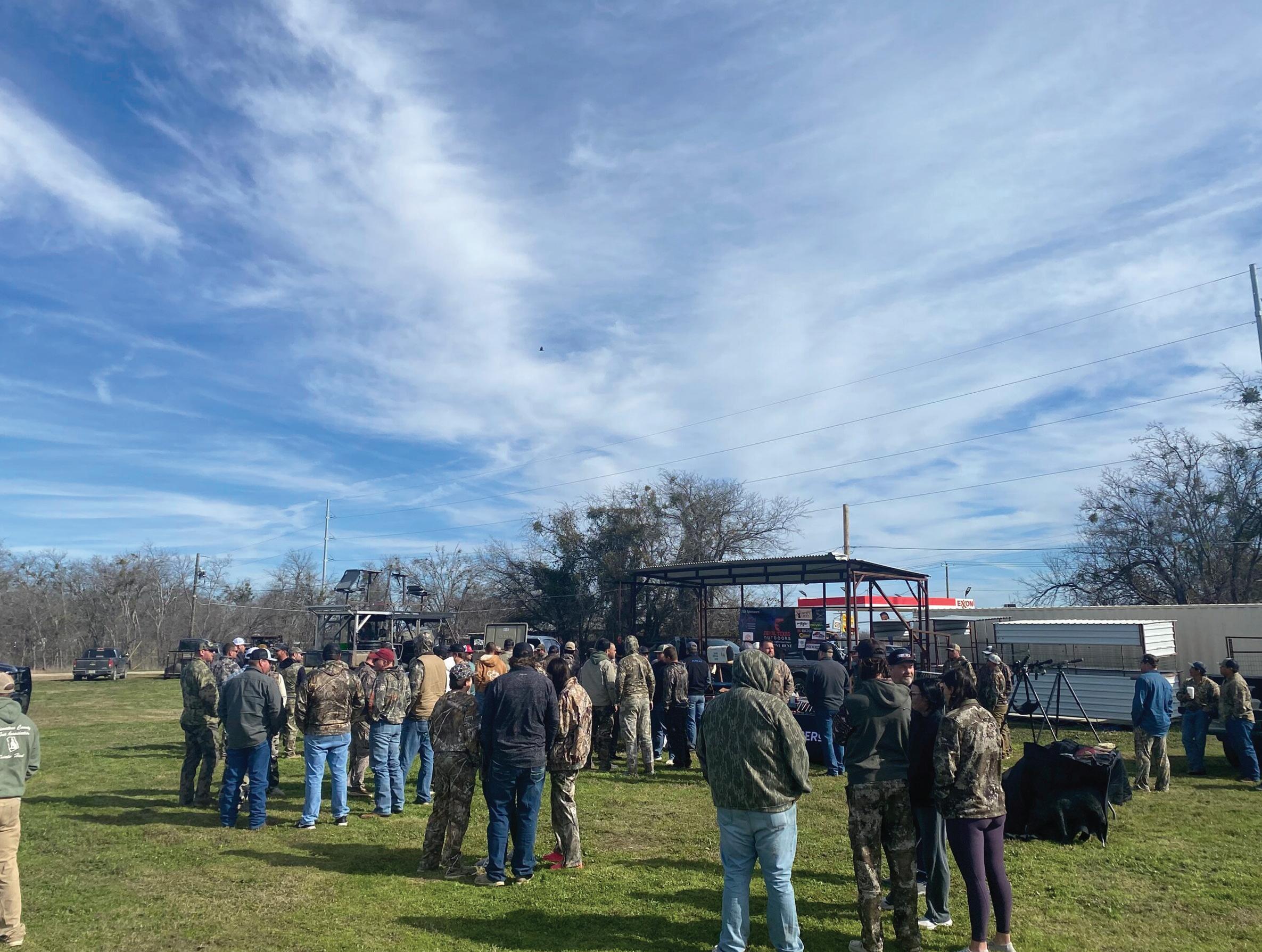
For one night of hunting, this is a very impressive feat. Bringing in 10 coyotes alone is no easy task. According to wildlife biologist Ken Podborny, when speaking on coyotes, “Oh, man. I mean, they’re resilient. ey’re tough. ey’re, they’re intelligent. Yeah, you mess up; you’ve trained one.”
Ken has four decades of experience as a federal wildlife biologist dealing with predators across three states. He now owns a business in North Texas specializing in removing predators from properties.
He has much experience calling and killing coyotes, similar to the contestants in this event. Ken spoke on the adaptability and the elusiveness of these predators. “I’ll tell you one thing about calling: I use calling as a technique. I’ve been successful in my life, calling up and ge ing rid of coyotes using calling. And I can tell you that there are coyotes out. ey’ve heard so many calls. ey just turned and ran the other direction when they heard a call blown,” Ken explained.


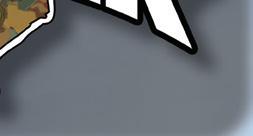

Ken Further added, “It can be an actual recording. I don’t care what it is. ere’s some really high-tech stu out there that makes very great sounds. But enough guys do it all year long. ere’s a lot of coyotes in this world. And then there’s all the coyotes that get away. You call them, kill one or two, maybe, and one gets away. He’s trained now.” is further adds to the impressive victory by the Brush Kountry Boys.
I interviewed the winners of the 2024 Feral Texas Outdoor Varmint hunt a er their mandatory polygraph.
Derek Dietrich, Shay Snyder, Zane Washburn, and Seth Snyder of the Brush Kountry Boys won the year prior, making them the back-to-back champions of this contest. “ ere ain’t a team more dedicated and competitive as we are,” said Derek.
Seth added, “We hunt every weekend from now until the end of March.”
When asked if they are looking forward to next year, the Brush Country Boys replied, “We’re looking forward to next weekend.”
Explaining they have another event to hunt in the upcoming weekend.
eir dedication and enthusiasm for the sport of predator hunting were clear. e group energetically recalled the night of hunting they had, despite not sleeping for more than 24 hours.
“Can’t ever give up,” Shay explained. “ at’s the biggest thing, and that thing is what puts us on top of a lot of teams is just never… never giving up.”
Predator hunting stands out as a captivating sport, featuring the enthusiasm of participants, the use of cu ing-edge gadgets, and the heightened intensity of the activity.
e sport provides freedom and exibility unmatched by other forms of hunting. Participating in this pastime encompasses various intriguing elements, o ering a more dynamic approach to conventional hunting.
story by ETHAN HOUSEWRIGHT






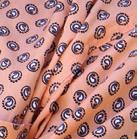

 :: by REAVIS Z. WORTHAM
:: by REAVIS Z. WORTHAM








 TF&G Humor Editor
TF&G Humor Editor
DELBERT P. AXELROD CAME through the glass door of Doreen’s 24 HR Eat Gas Now Café with a handful of typed pages. “Hey guys! I’m gonna be an investigative reporter for outdoor magazines!”
e Hunting Club Membership was gathered in the large round corner table, trying to decide on when to go goose hunting. It was an ongoing discussion, because we loved shooting snows, but haven’t been in years.
We’d achieved the age in which we still wanted to hunt, but sometimes the planning stage was more fun.
Wrong Willie sighed. “Last year you were going to be a shing guide on Lake Texoma and took a group out that didn’t catch anything but a cold.”

this morning.”
“Never mind. Just read it.”
something I thought I could make into an
“Hey, it wasn’t my fault the sh weren’t biting, and I thought I was over that head cold. I didn’t mean to give it to anybody. Anyway, I was down on the Guadalupe last weekend and saw something I thought I could make into an issue.”
I held up a hand. “Wait a minute. If you’re thinking you want to write non ction for some publication, you don’t go in with the idea to create a story. You have to report it.”

“I did.” He brandished the papers at me like a witch doctor shaking a ra le at a possessed person. “I just put this up on my blog
Woodrow frowned. “I didn’t know you had a blog.”
had a blog.”
“I do now. Just started it today to test the waters.”
Standing over our table, Delbert cleared his throat. “Dateline, Fredericksburg, Texas.”

I reached out a hand. “Here, let me read
I reached out a hand. “Here, let me read what you have.”
Delbert pulled the pages back. “No. I need to read it out loud so you can get the full e ect.”
“But people reading your blog won’t get it the same way.” Jerry Wayne waved a hand.
“It’s an audio blog. I recorded myself reading it.”
Fingers inching upward to pull out my hair, I paused. “But you said you wanted to write for outdoor magazines. People still read those, you know.”
I held up a hand. “I thought you said you were on the Guadalupe.”
He ignored my correction. “Dub and Tamika Rupe confessed to feeding sh bait to their toddler son during a live interview with this reporter who learned the Dupes are less than ethical anglers.”
I started to make a statement. “You’re gonna get sued––”
He cut me o . “ e Rupes were waiting for the stocking truck to arrive when this intrepid reporter noticed their son, Arnold, was regularly reaching into what was obviously a bait can. It became apparent that they were feeding the child to keep him quiet so as not to scare the sh.”
“ is is like shing. You know, you cast onto
your lure onto the water and let it sit there while the rings go out and the sh see them and come in to investigate.”
“ at’s not how…” I hooked a nger through my co ee cup and leaned back. “Fine, then. Read away, Hunter ompson.”
“Take out the word, intrepid,” I said. “What kind of bait was it?” Jerry Wayne asked.
“Take out the word, intrepid,” I said. Wayne asked.
Ignoring us both, Delbert continued.
“Interested in the events unfolding before me, I initiated a discussion about then the o
“Interested in the events unfolding before me, I initiated a discussion about trout shing and then quickly changed the topic in a classic ‘bait and switch’ tactic, and learned of the parents’ shocking disregard for their child.
‘Why Rupe said. ‘ e li le son-of-a-gun
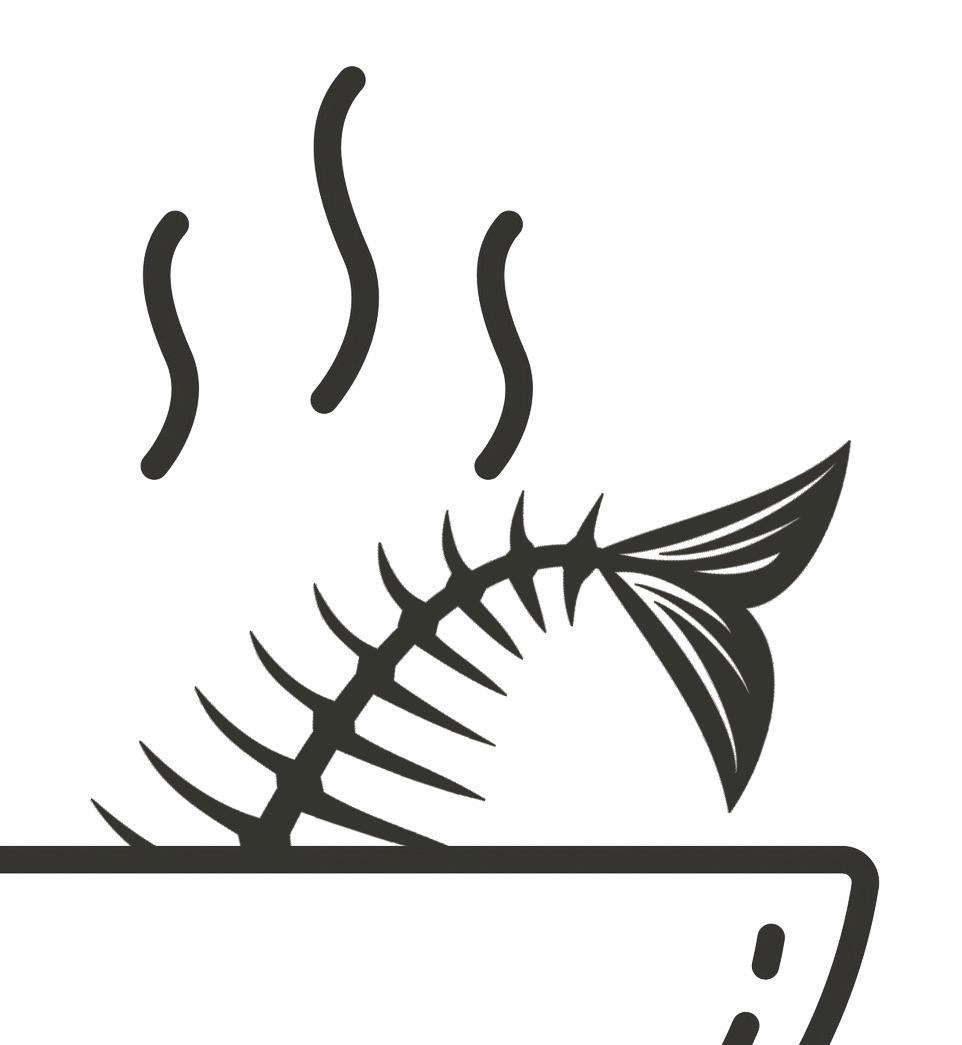
“ e couple admi ed without remorse that they o en fed the toddler sh bait. ‘Why sure,’ Dub Rupe said. ‘ e li le son-of-a-gun eats everything he can put in his mouth. He did it on the last shing trip, too. I wasn’t too thrilled that he ate all the bait, because the sh started biting and all of a sudden, we didn’t have anything to catch them with but a few soggy mushrooms he’d spit out.’”
sh started biting and all of a sudden, we didn’t have anything to catch them with but a few soggy mushrooms he’d spit out.’”
Delbert looked up.
Delbert looked up.

Scan to Hear Audio Version
“ e mom admitthe
“ e mom admitted the kid even ate a dead frog once when they weren’t looking, and it didn’t hurt him none. Just

gave him a li le gas.”
Woodrow and I exchanged puzzled looks. He waved a hand to get Delbert’s a ention. “What kind of bait was it?”
“Whole kernel corn. Trout love it.”
Jerry Wayne looked sad. “I just asked that question and you ignored me.”
I shook my head. “ is isn’t a story, you’re just making veiled allegations that aren’t real.”
Delbert shook the page to make us stop talking and continued reading. “When I called a doctor and asked him if it was safe for a kid to eat sh bait, he was concerned. He said he didn’t care how hungry a kid might be, they shouldn’t eat bait.”
Woodrow leaned forward and laced his ngers. “Were you speci c when you talked to the doctor?”
“Well, I didn’t want to lead him in any way.”
“Stop it,” I said. “You’re gonna get in trouble. Delete your blog before it’s too late.”
“No. Listen.” He continued to read. “Local game wardens looked into the incident and consulted college professors with bad hair and pocket protectors, asking the question, ‘if food products can be used as bait, is it all right for humans to consume the same thing sh eat?’”
“No!” I felt my eyes rolling back in my head. “ ere are so many things wrong with this I don’t know where to start.”
He defended himself by reading even more. “Parks and Wildlife o cials argue that if corn and marshmallows are purchased as trout bait, it should be illegal for humans to consume the products as nourishment.”
“No one ever said that.” Wrong Willie rested his head in both hands.
Delbert gave me an arrogant look I wanted to slap o his face. “I bet they would if someone framed the question right. It’s like voting propositions. ey’re so convoluted no one understands them.”
I held up a hand. “ is is a lawsuit waiting to happen.”
“ en it’ll get about a million views!” Delbert argued. “I’ll be famous and people will start calling me an in uencer.”
e guys looked at me for support and I shrugged. “You know, if people use shrimp down on the coast for sh bait, and then cook up what’s le , they can be accused of doing the same thing.”
Wrong Willie looked aghast. “You’re encouraging him?”
“My new philosophy this year is, if you can’t beat ‘em, join ‘em.” I waved Doreen over. “Hey is there any corn and shrimp on the menu today?”
She frowned and popped her gum. “Have you ever seen it in here?”
“No, but if you decided to start serving it, add some white sh, and crawdad tails and call it Fish Bait Soup.”
Delbert plucked a notepad from his pocket. “ at gives me another idea to write about. I might decide to be a culinary reporter instead.”
“Go for it,” I said, and held my empty cup for Doreen to ll. “Just co ee. No bait.”
uEmail Ravis Wortham at ContactUs@fishgame.com

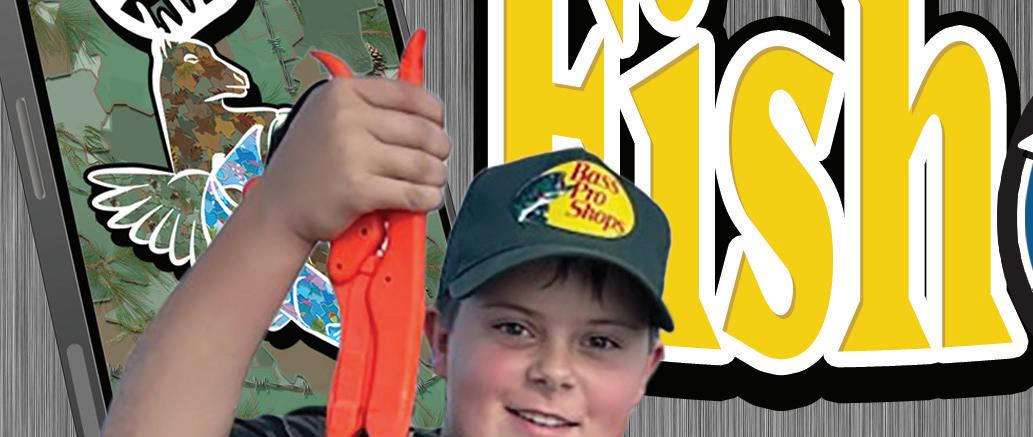
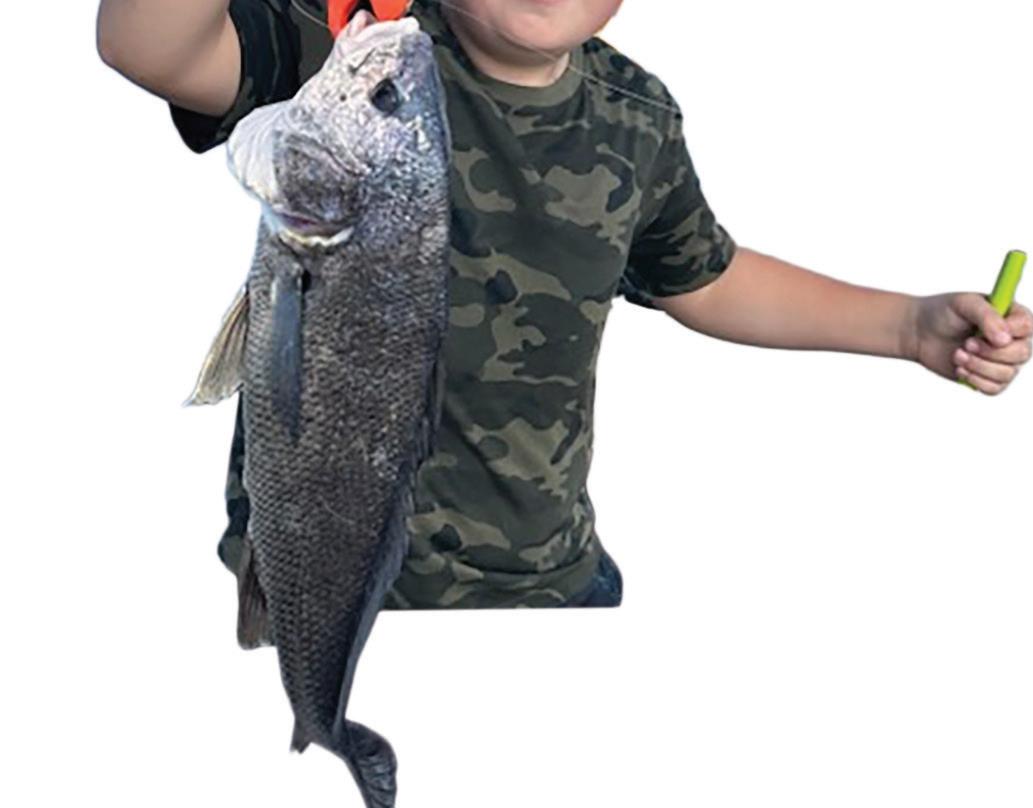
Lake Travis
McKallip








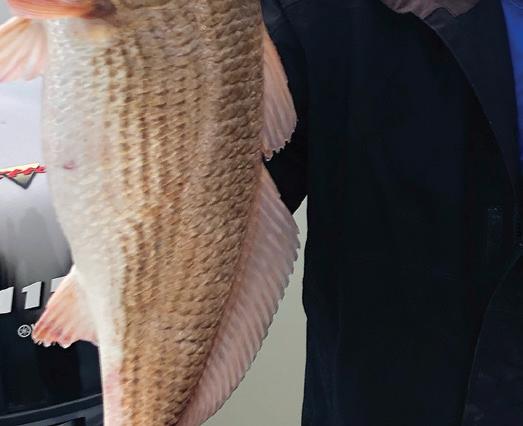





Trinity Bay
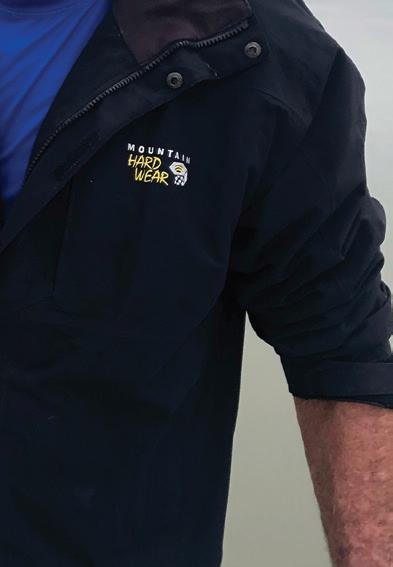


John Perry caught this redfish on a gold spoon, fishing around Jacks Pocket on Trinity Bay.


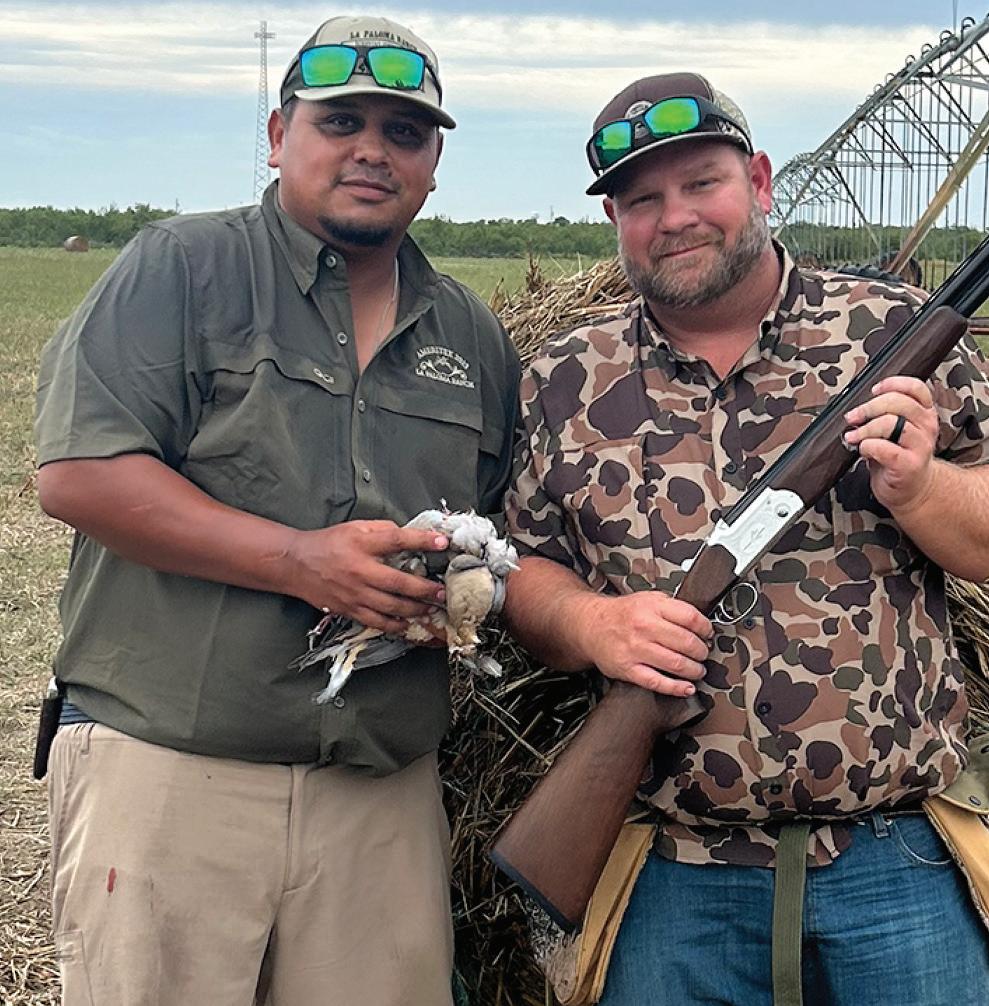


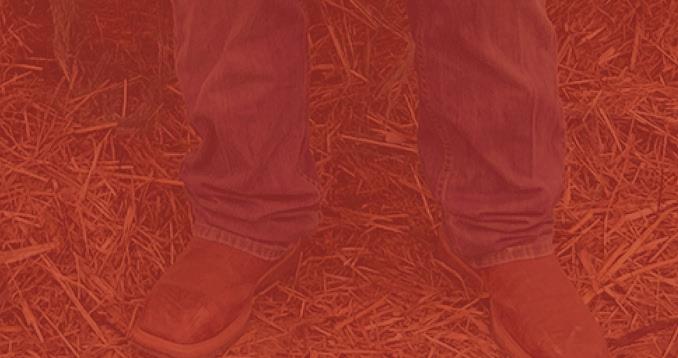




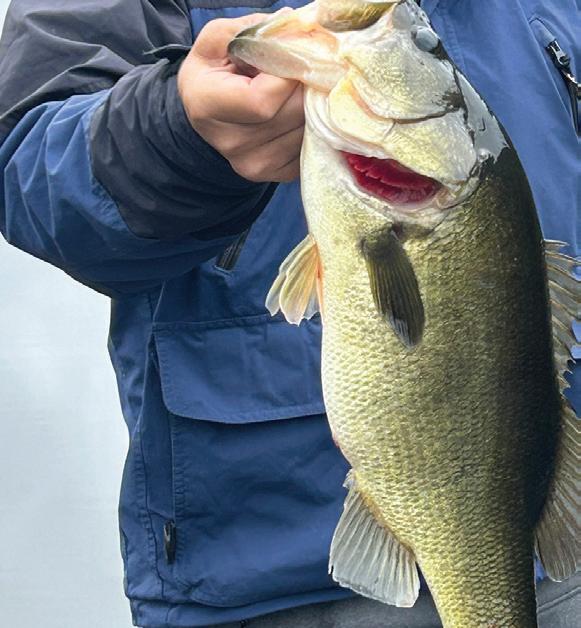


GIVE US YOUR BEST SHOT!
SEND YOUR ACTION PICS TO Photos@FishGame.com
For best results, send MED to HIGH quality JPEG digital files only, please.
No guarantee can be made as to when, or if, a submitted photo will be published.

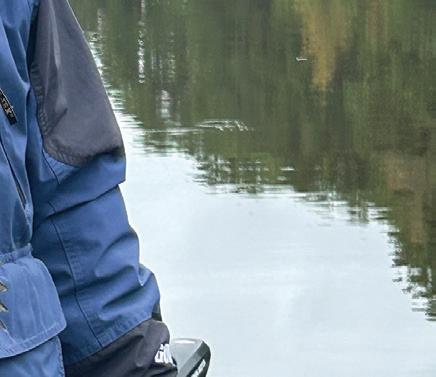
Huntsville
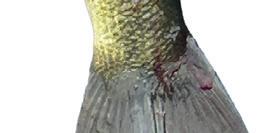

Stacy Talent of Panarama Village with his personal best largemouth, caught on Lake Raven at Huntsville State Park.




while hunting with his dad on family land in Nacogdoches County.








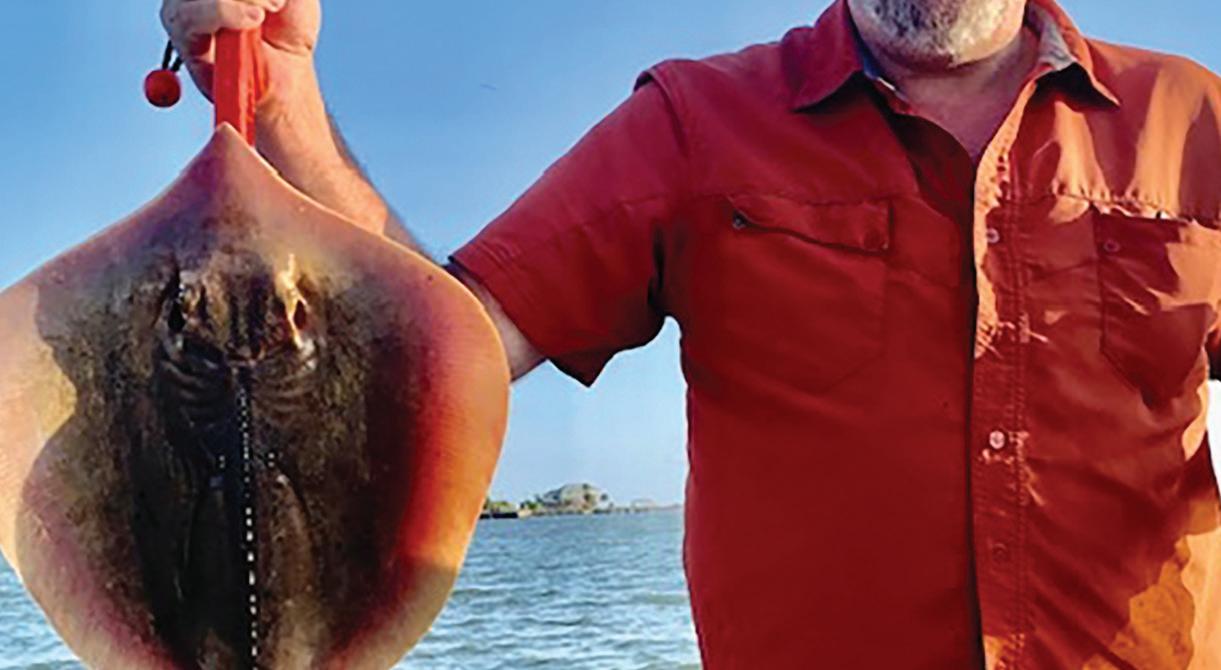
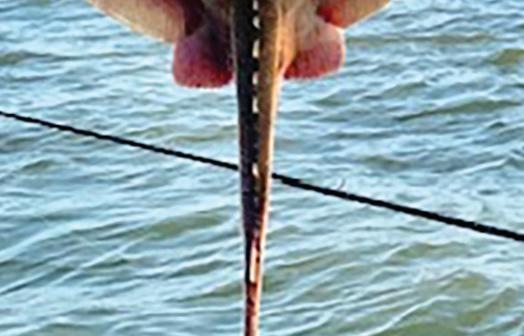
Galveston
Russell Polk of Allen shows off a Stingray that he caught near the Pelican Island Bridge in Galveston.



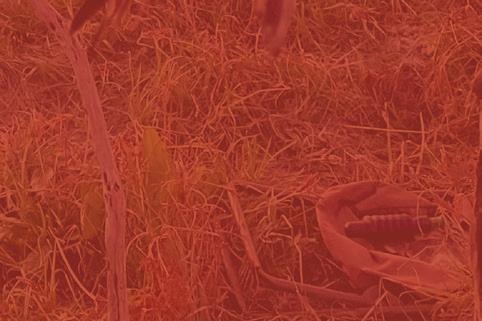

 Public Land
Lucas Allen is pictured after a successful duck hunt with his dad and friends on public land.
Public Land
Lucas Allen is pictured after a successful duck hunt with his dad and friends on public land.


